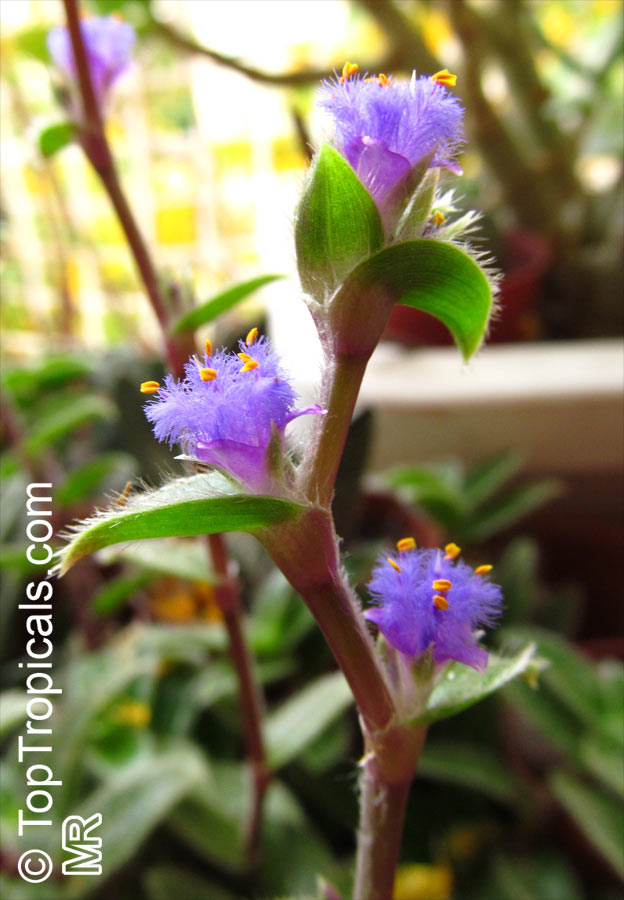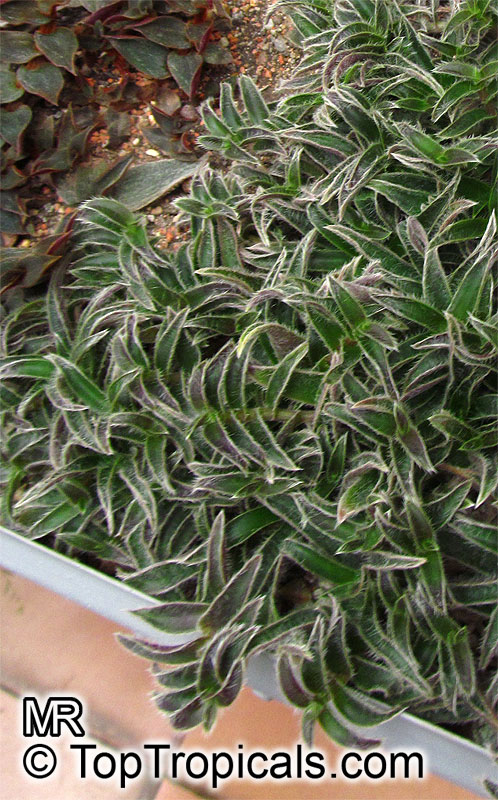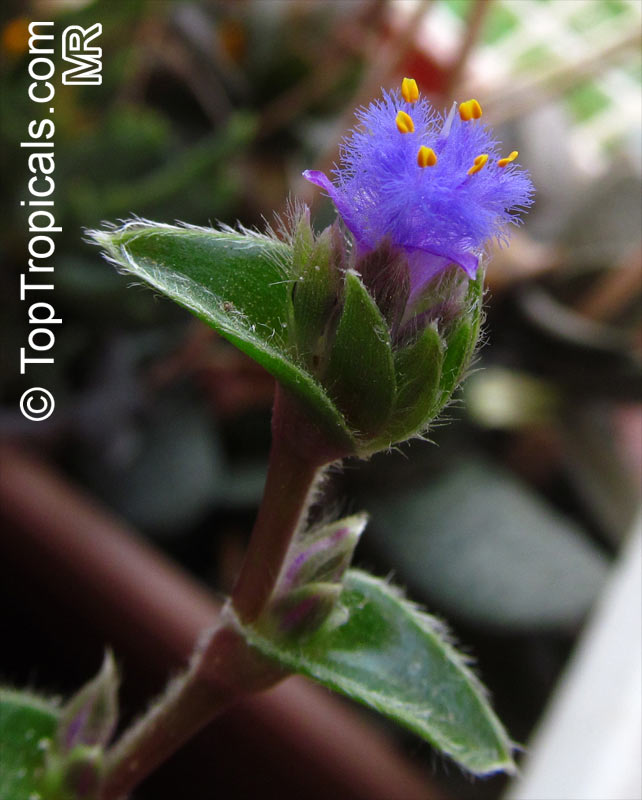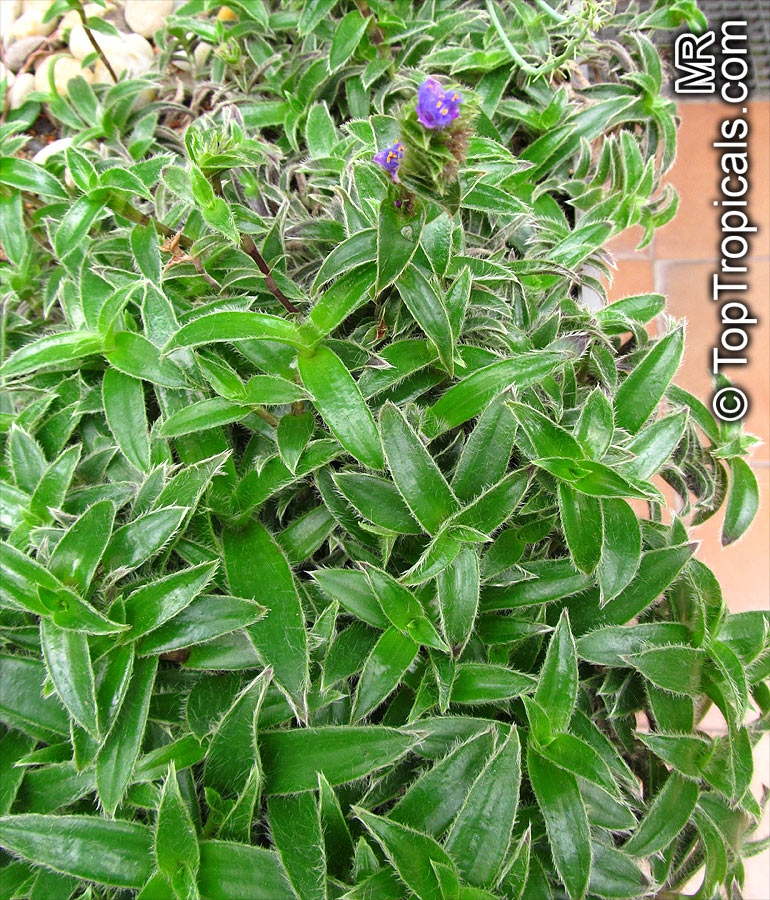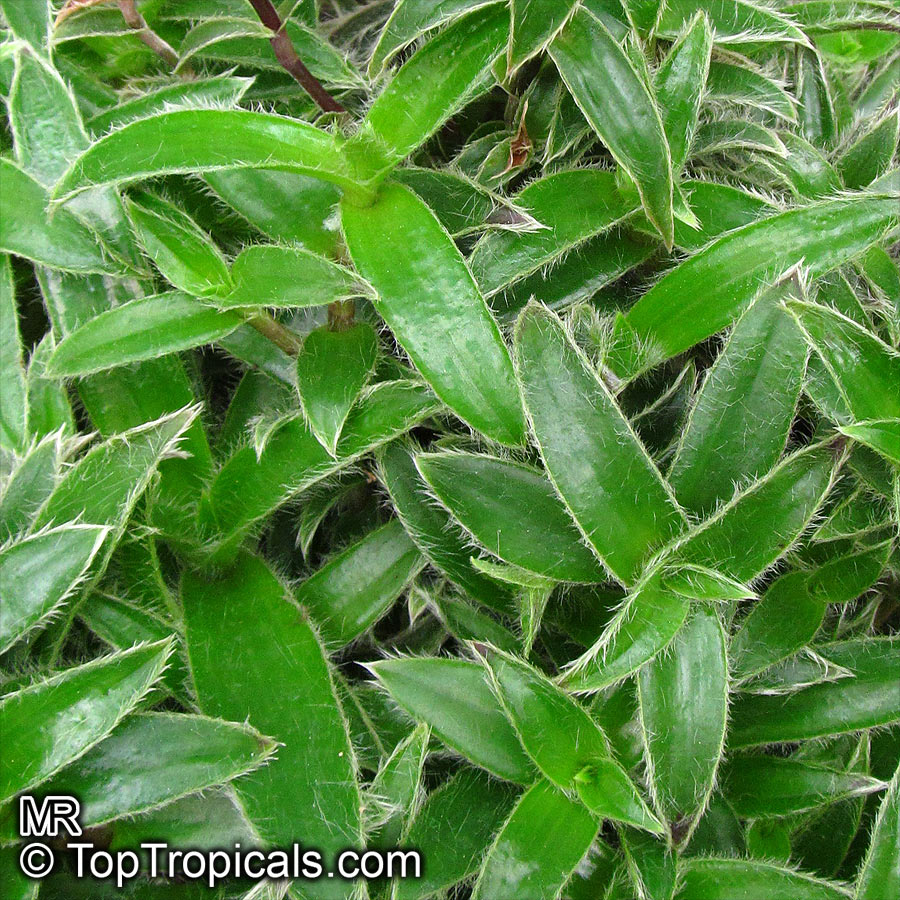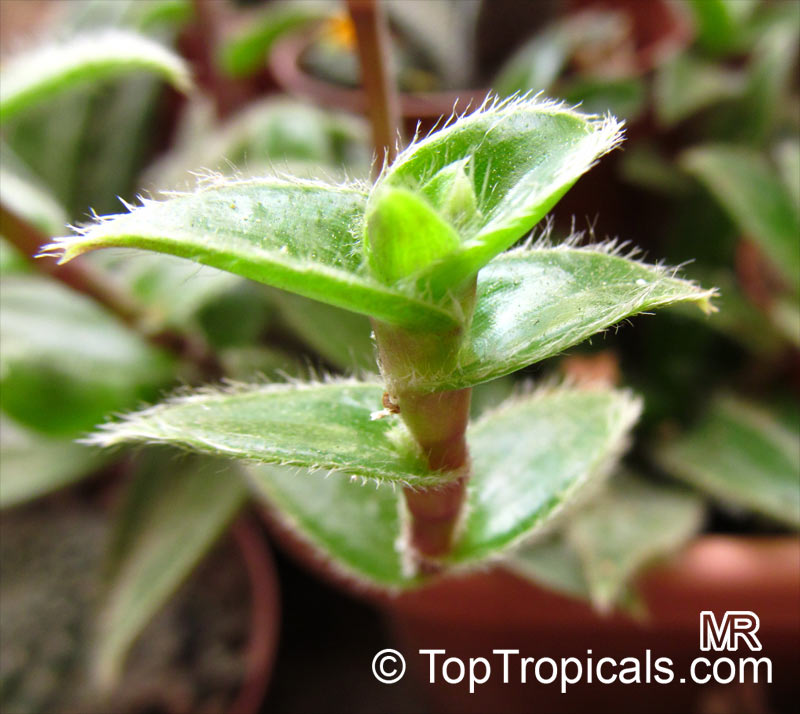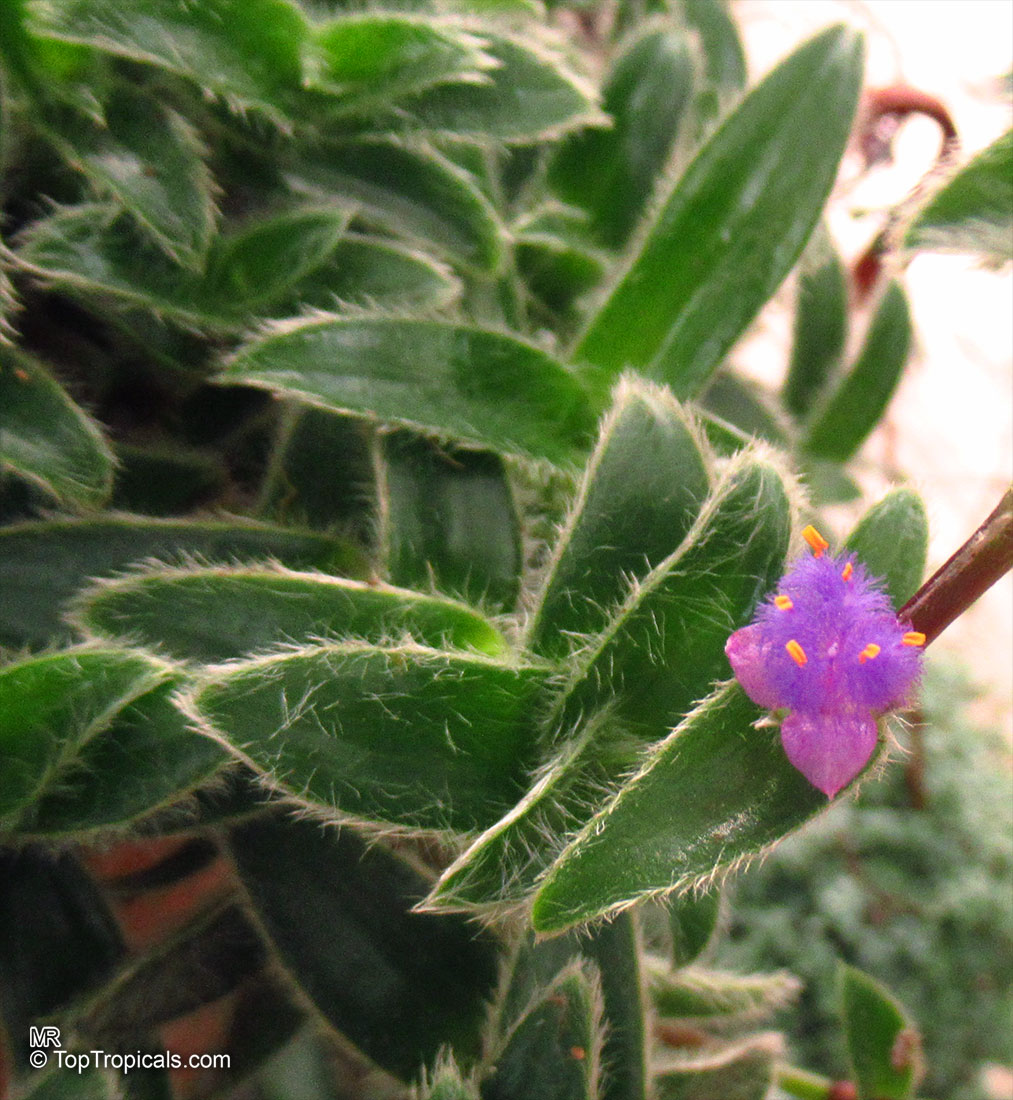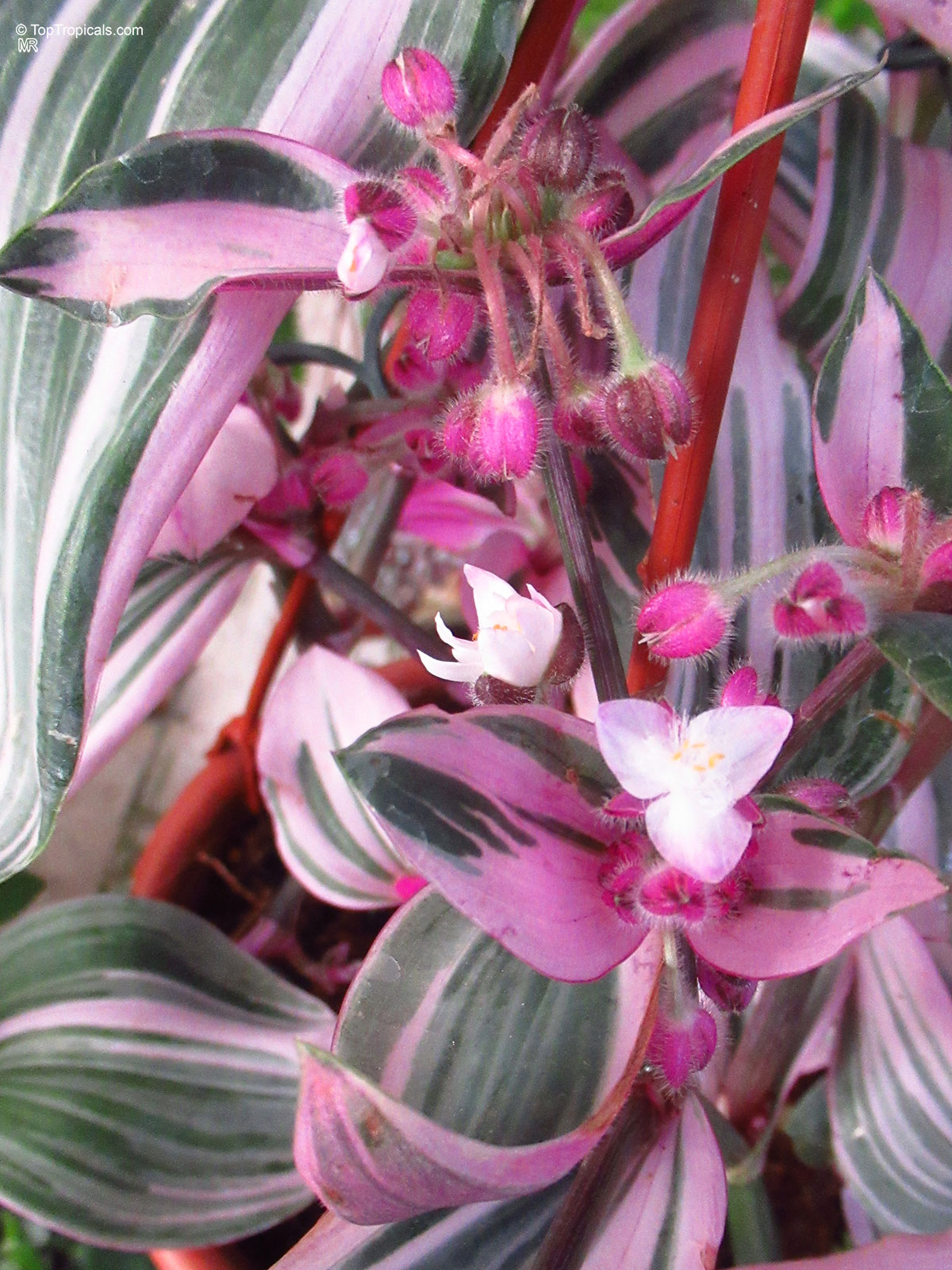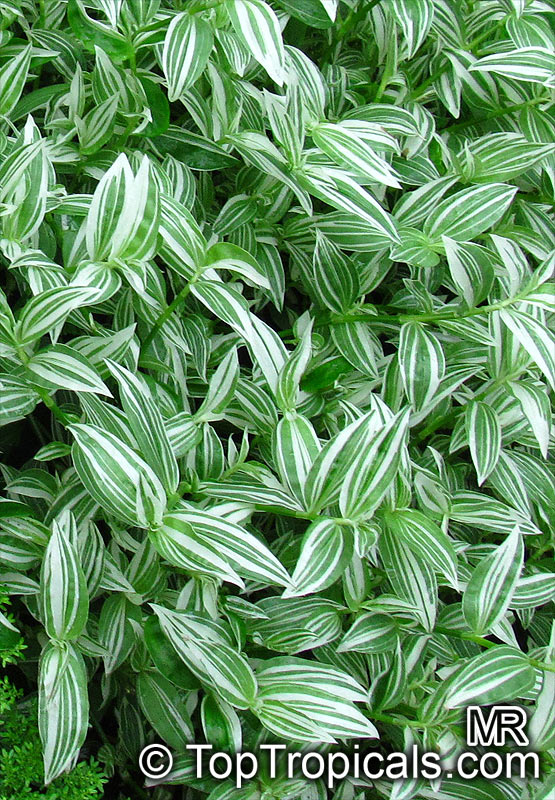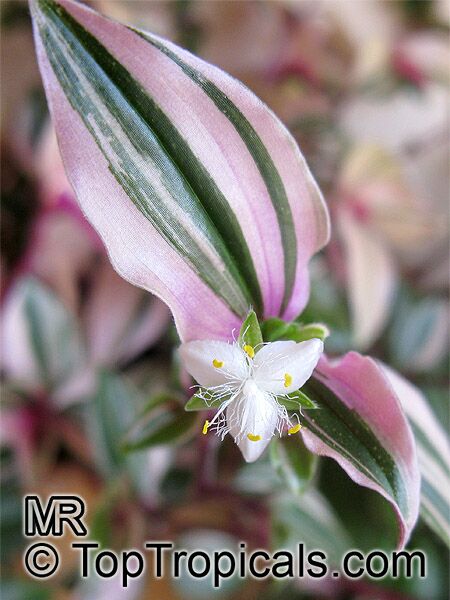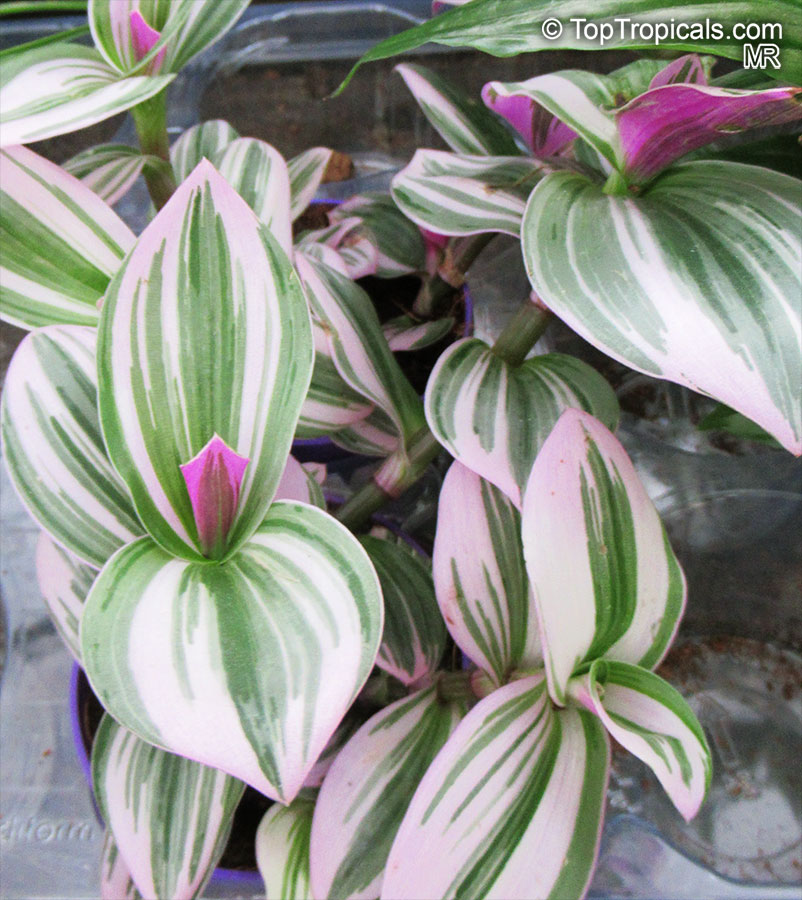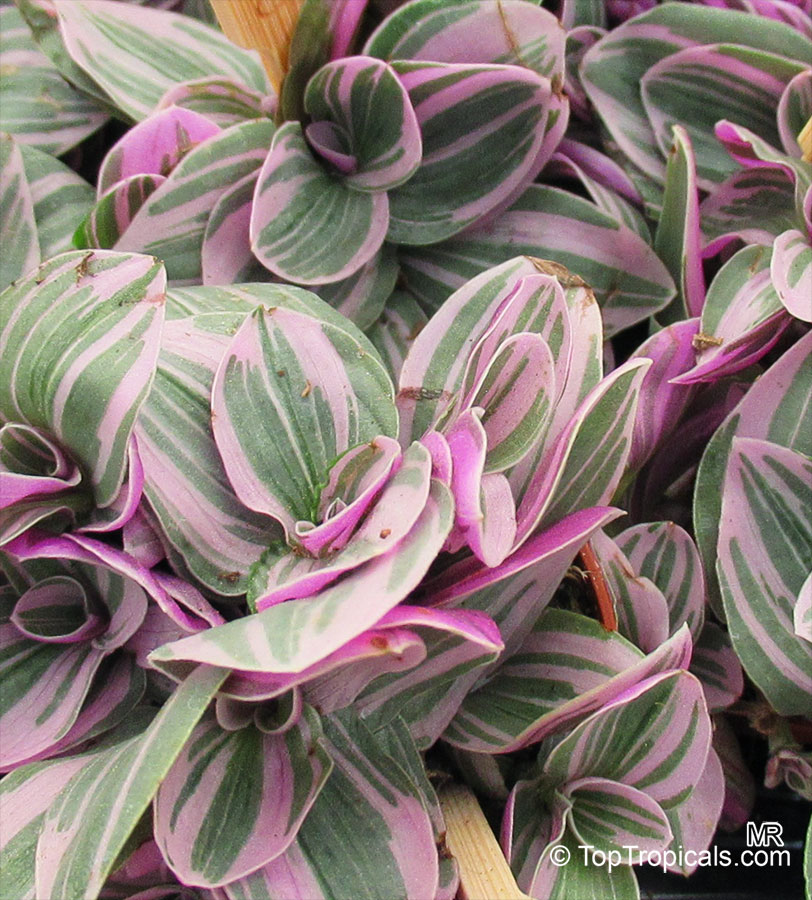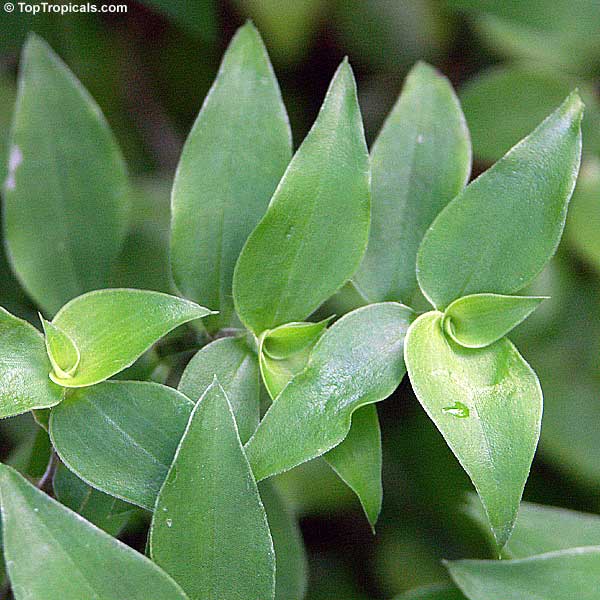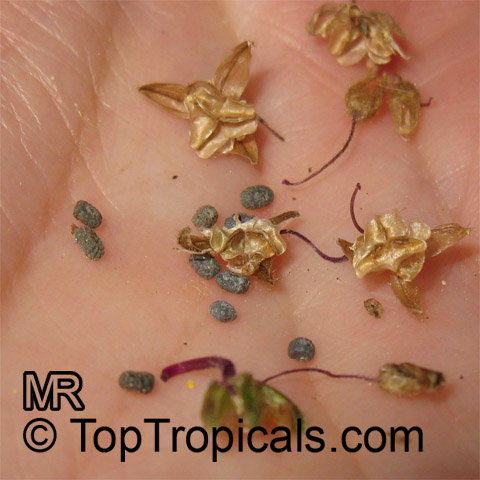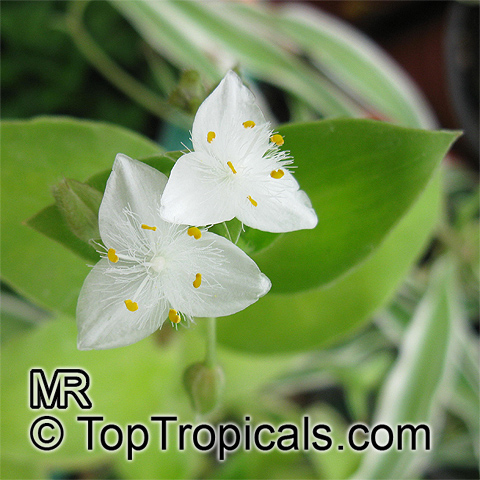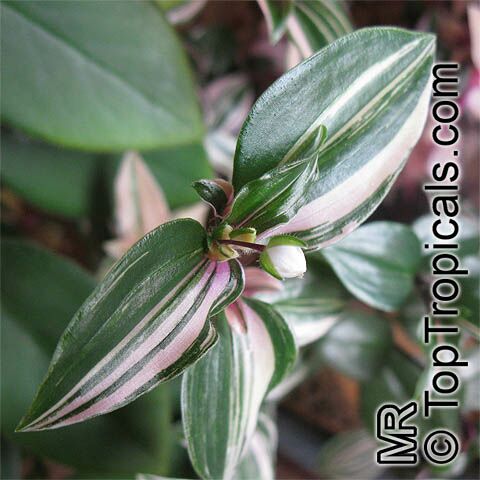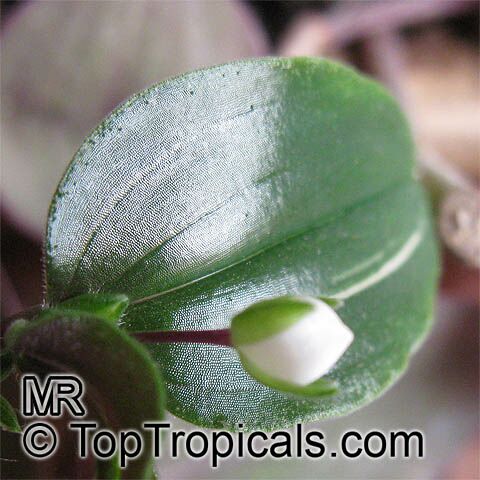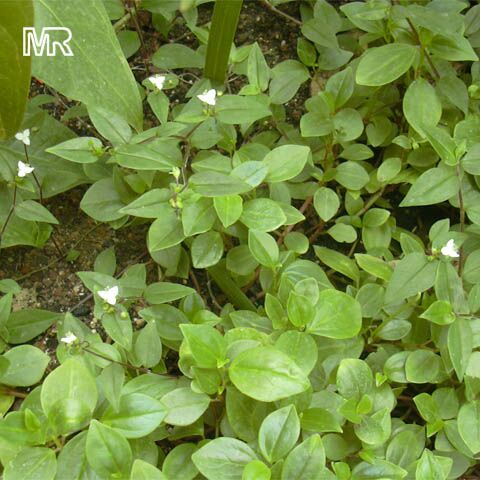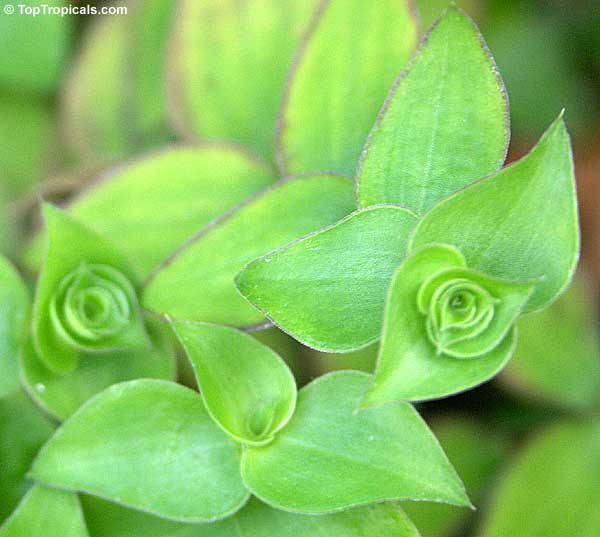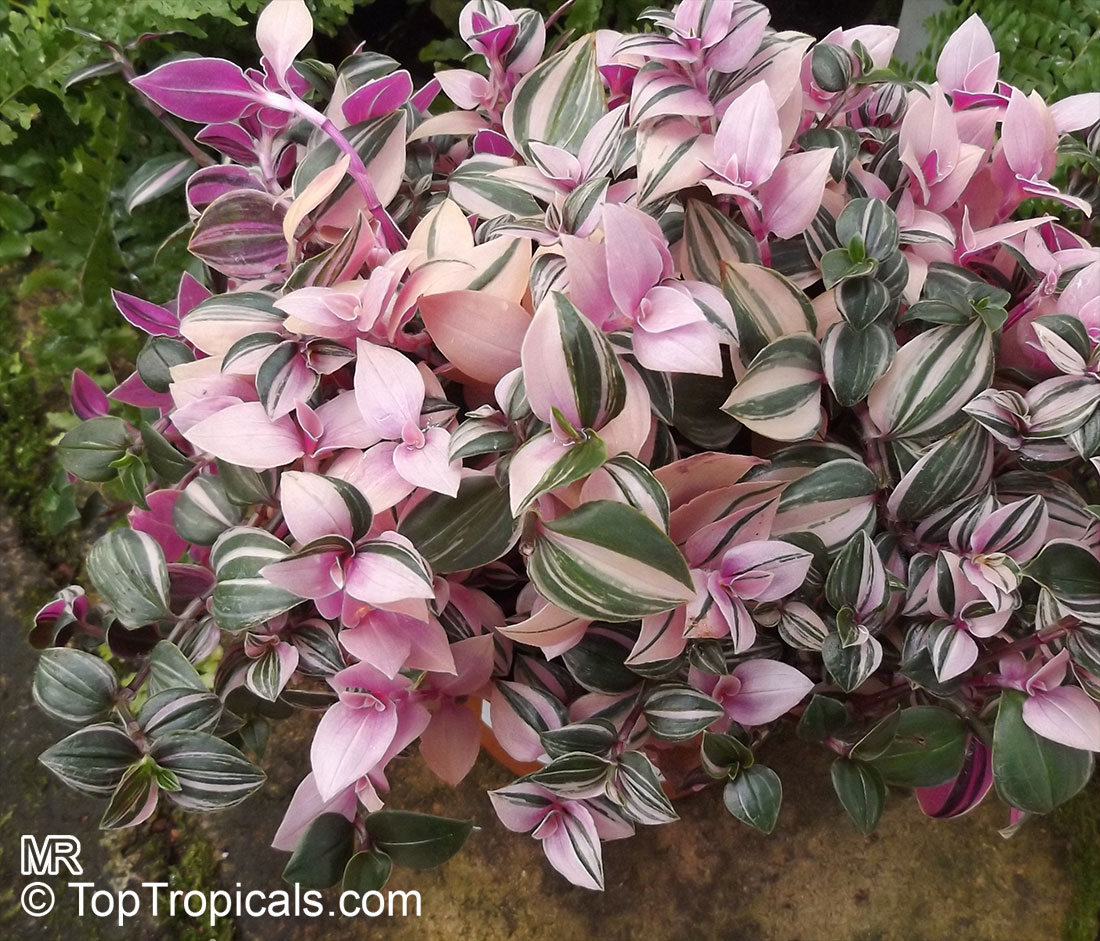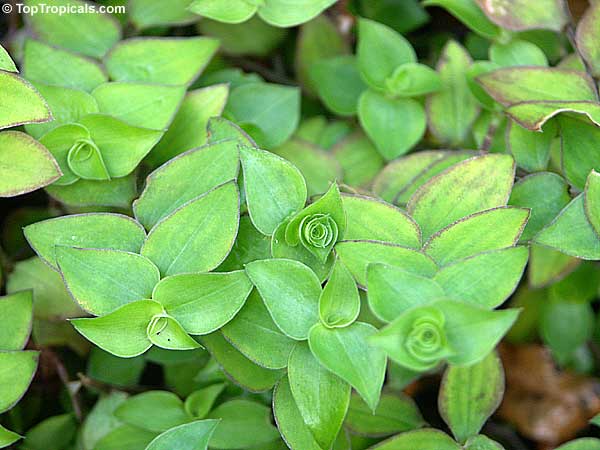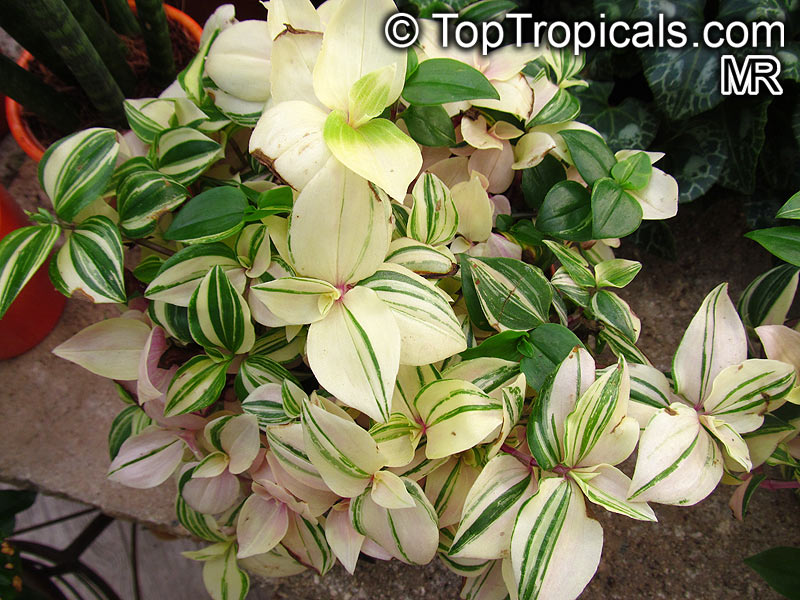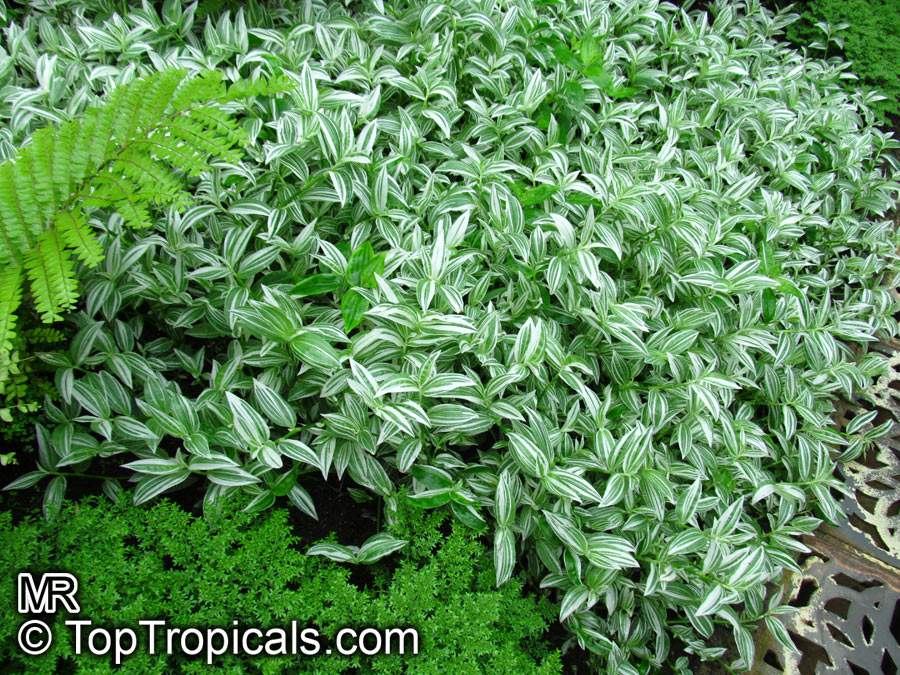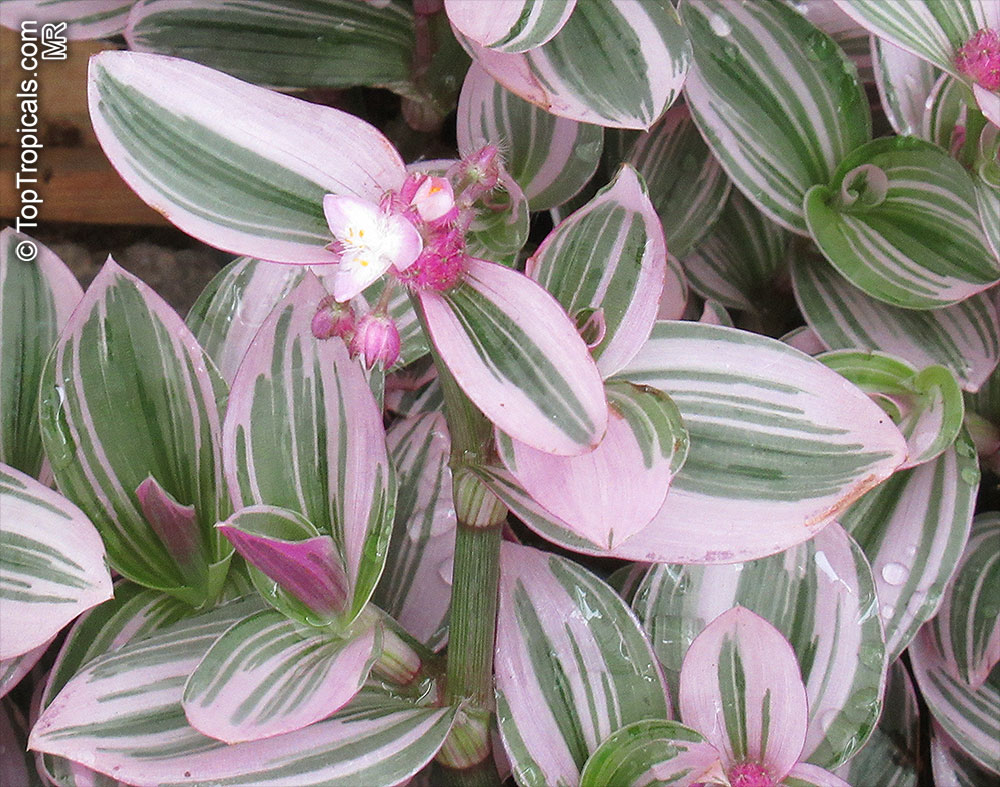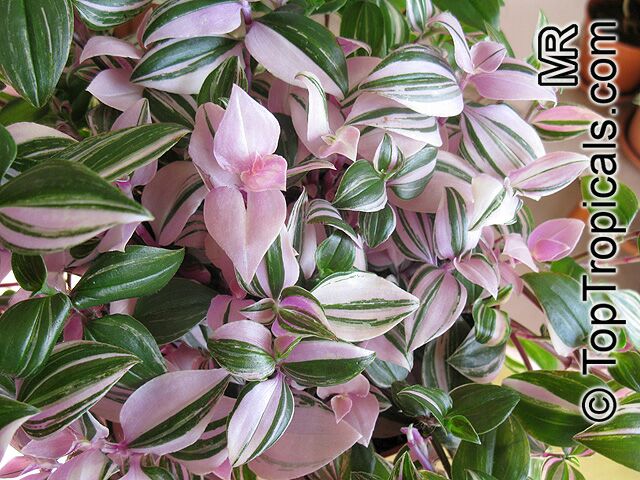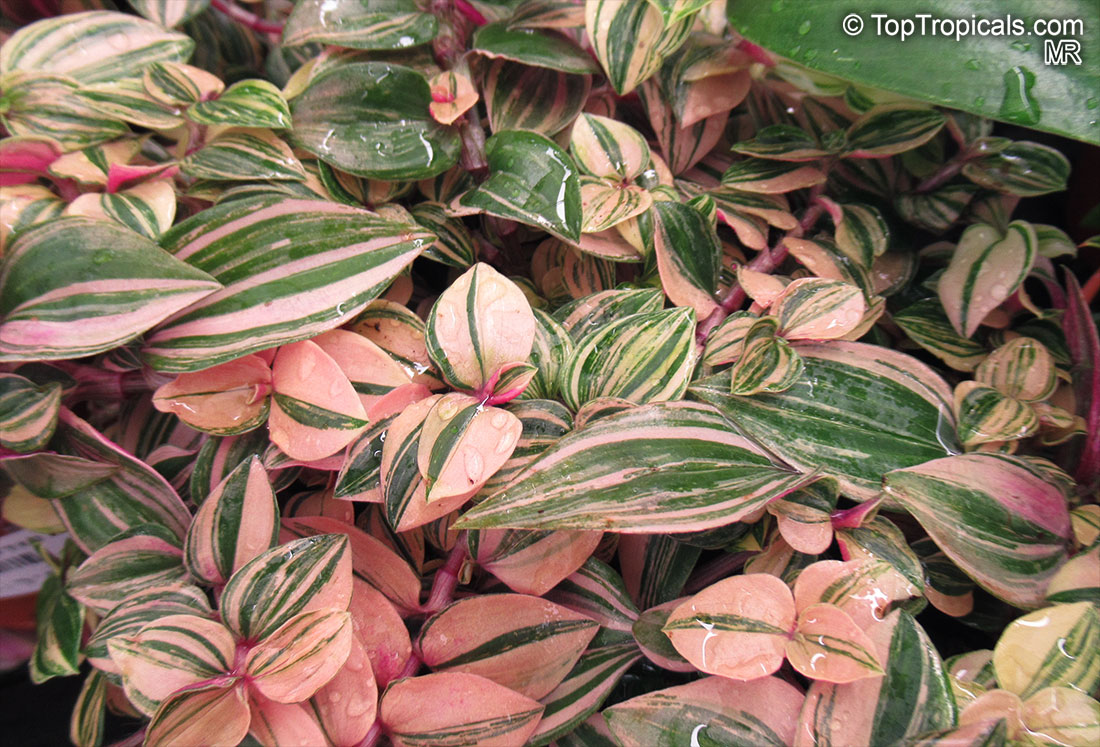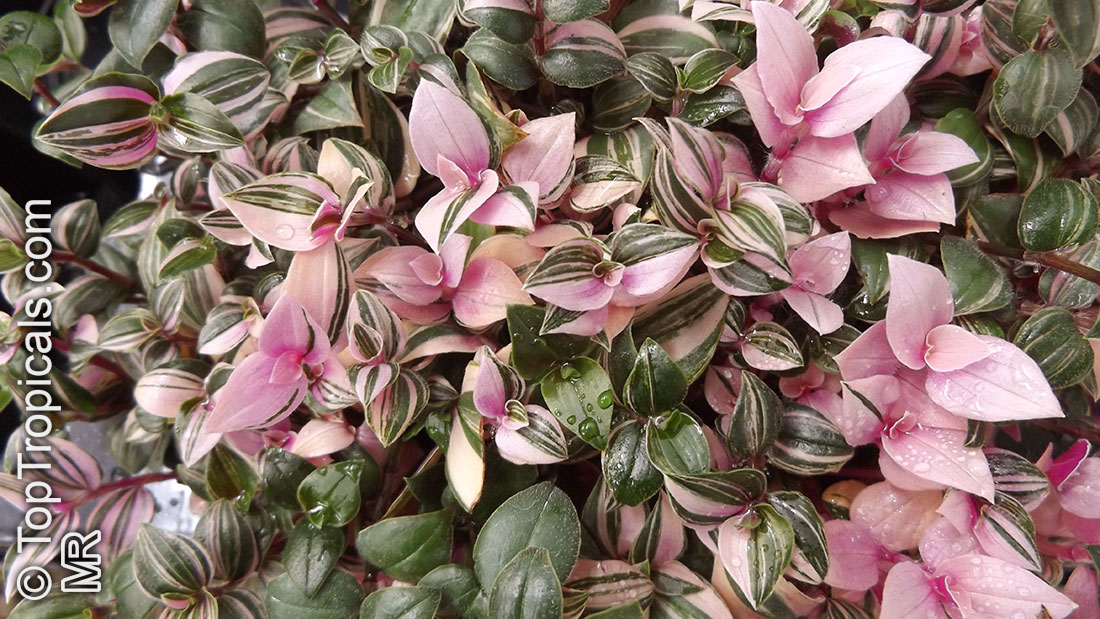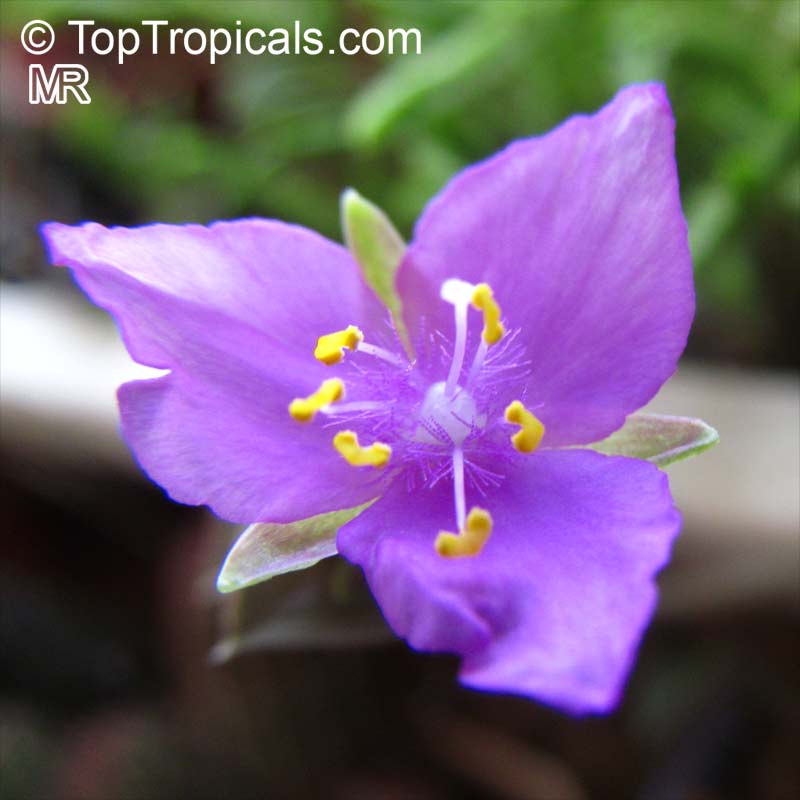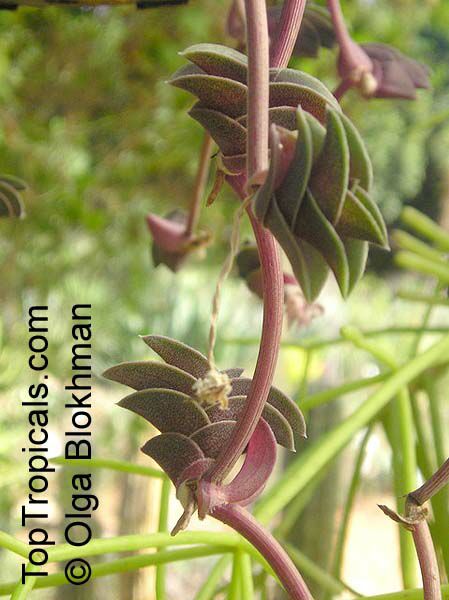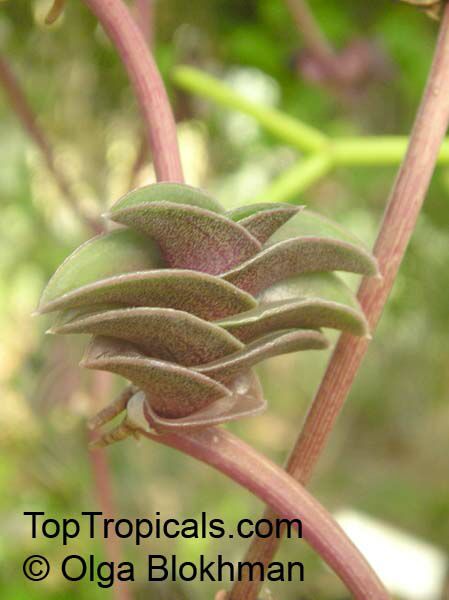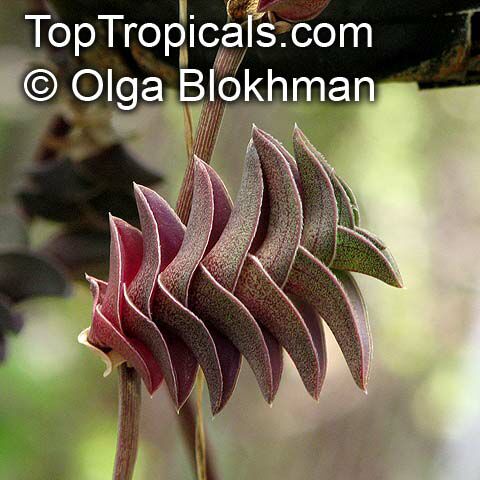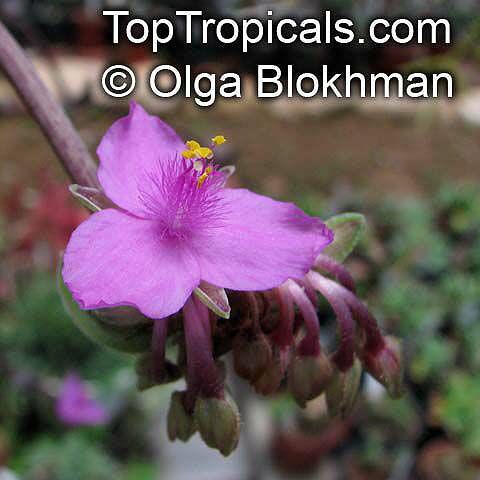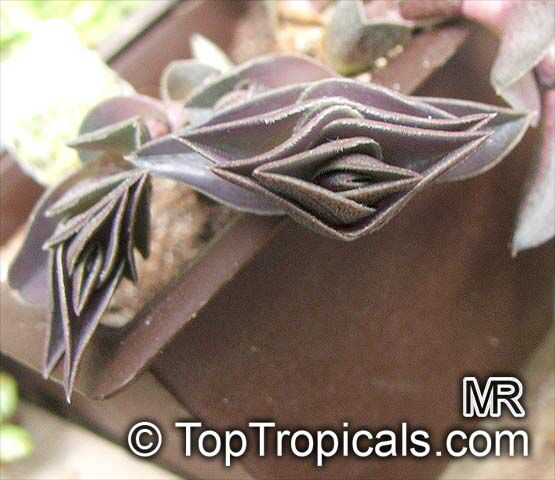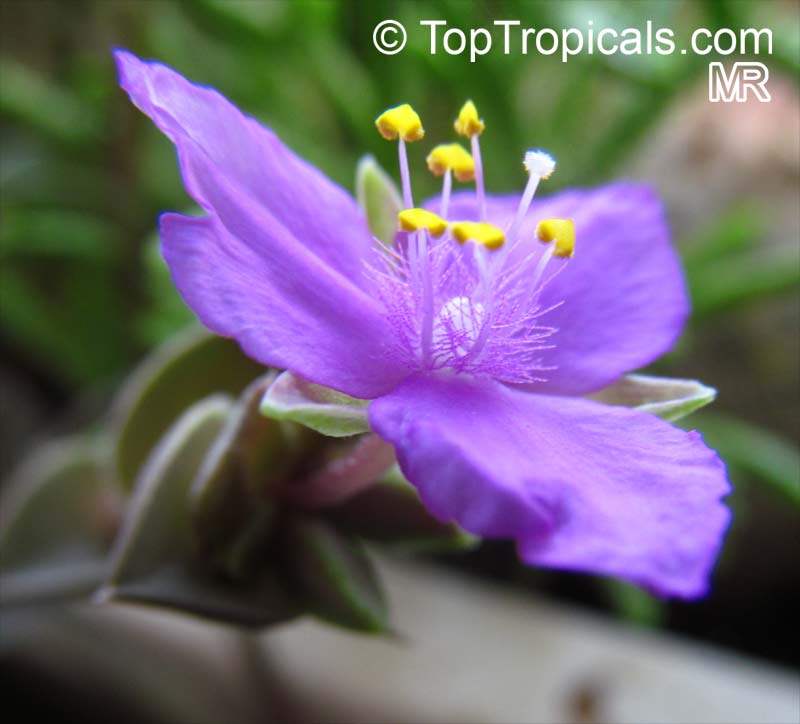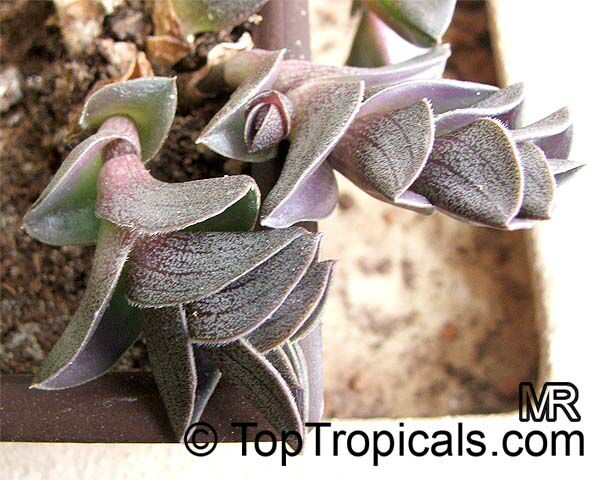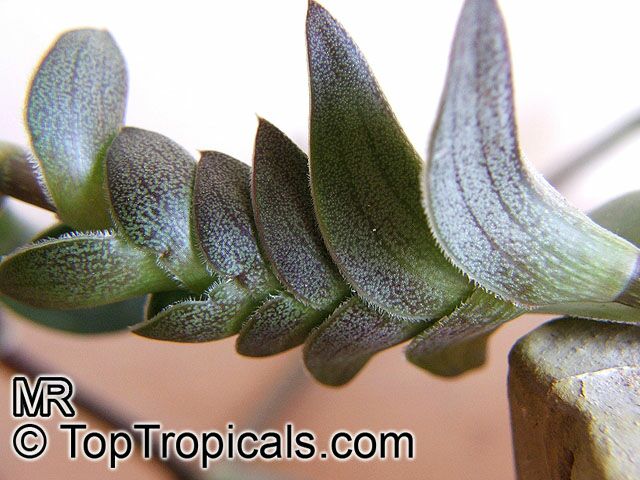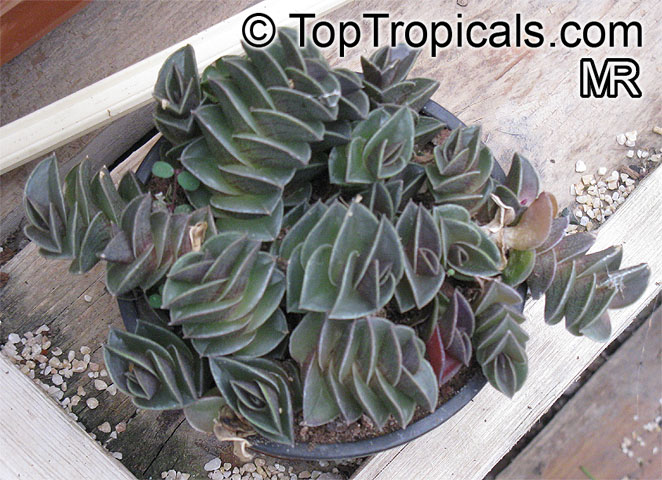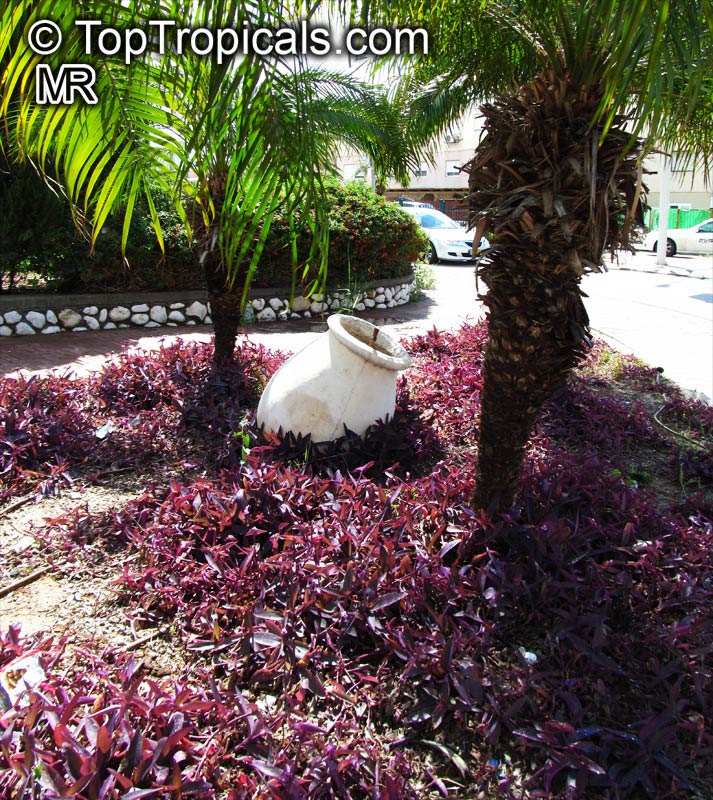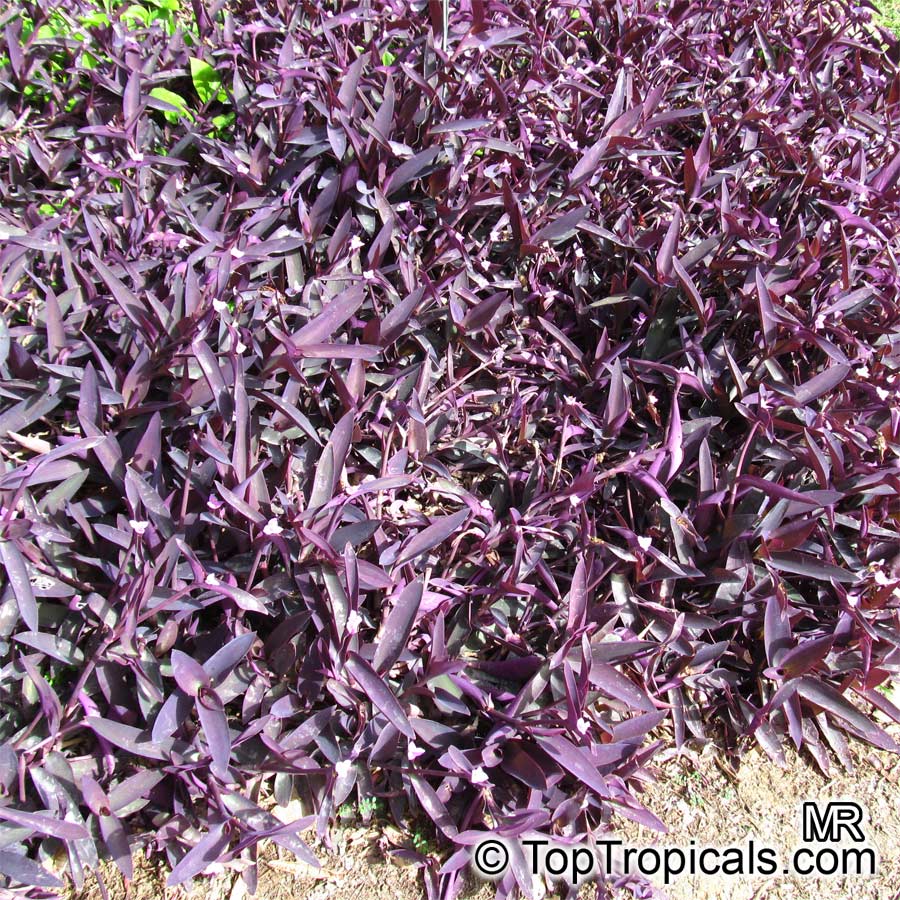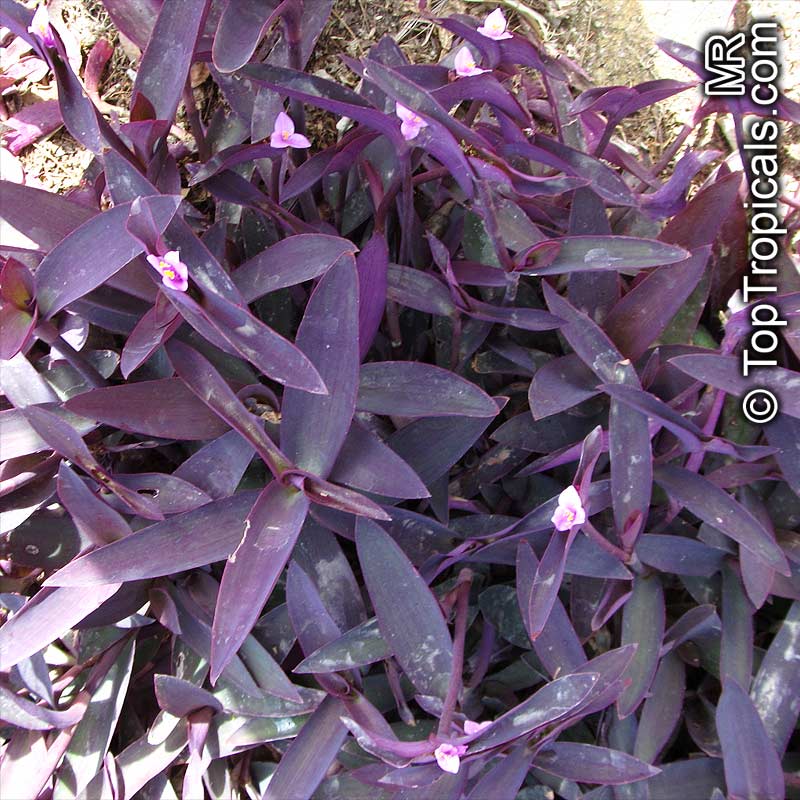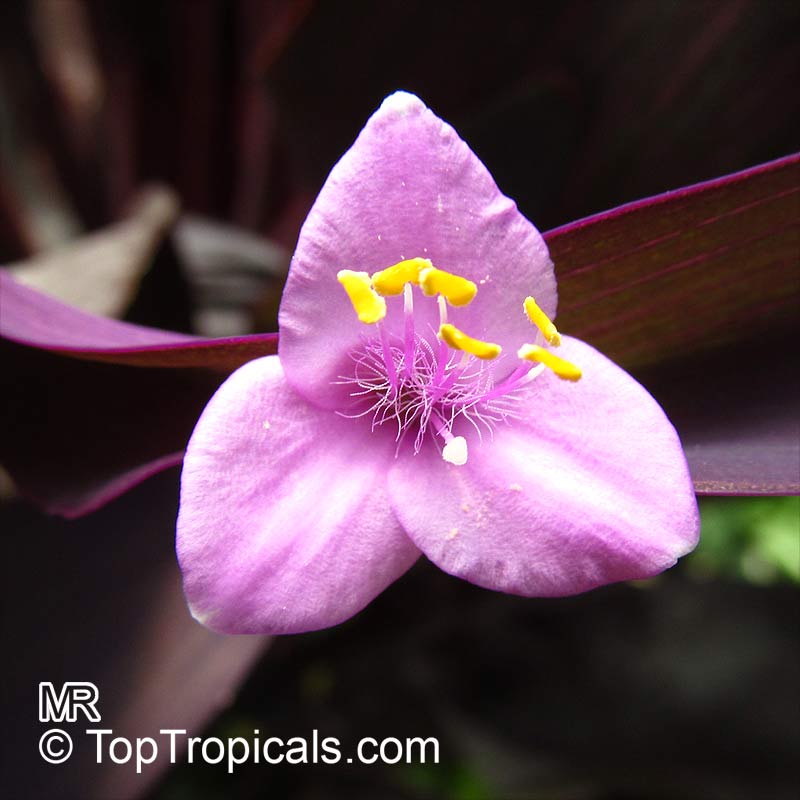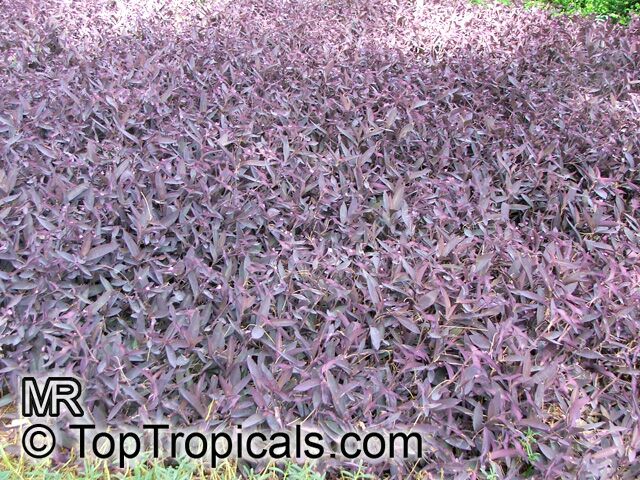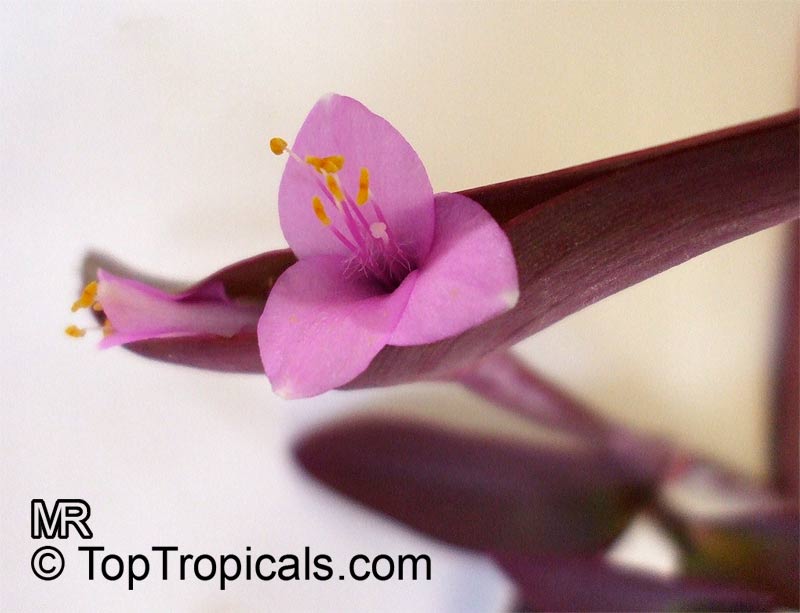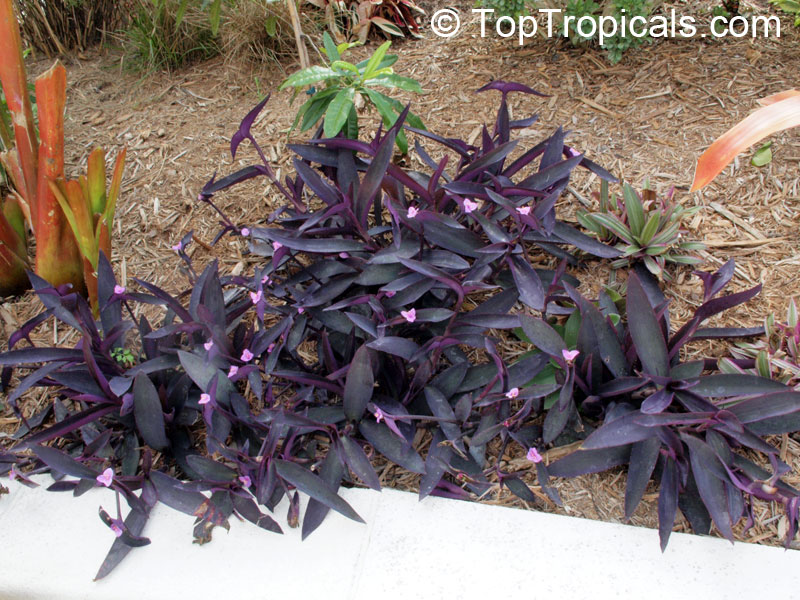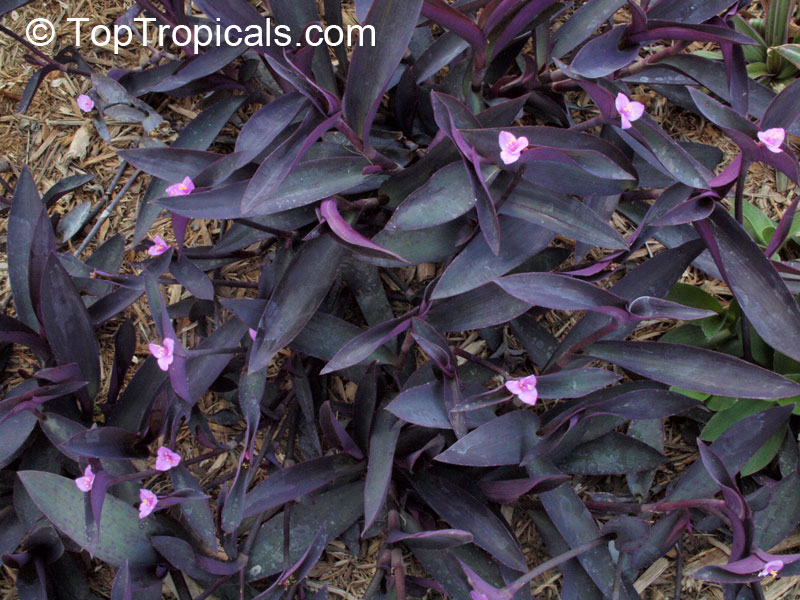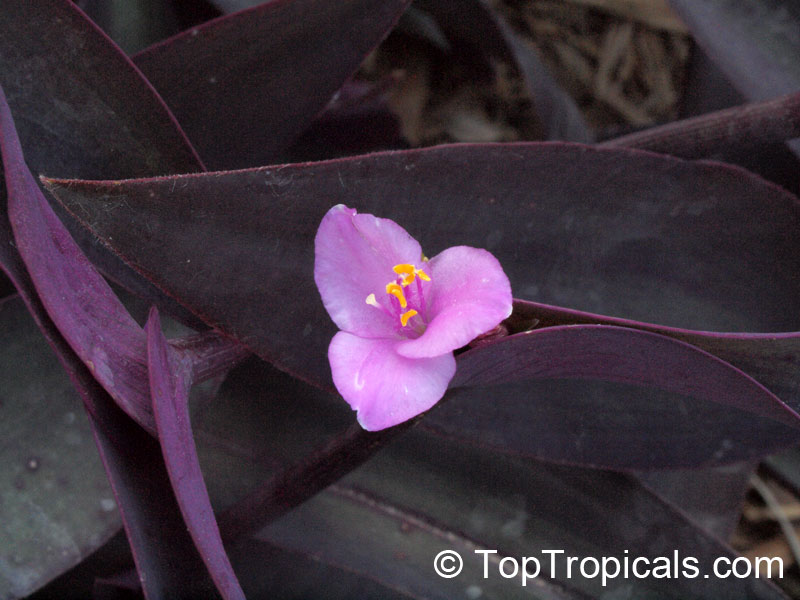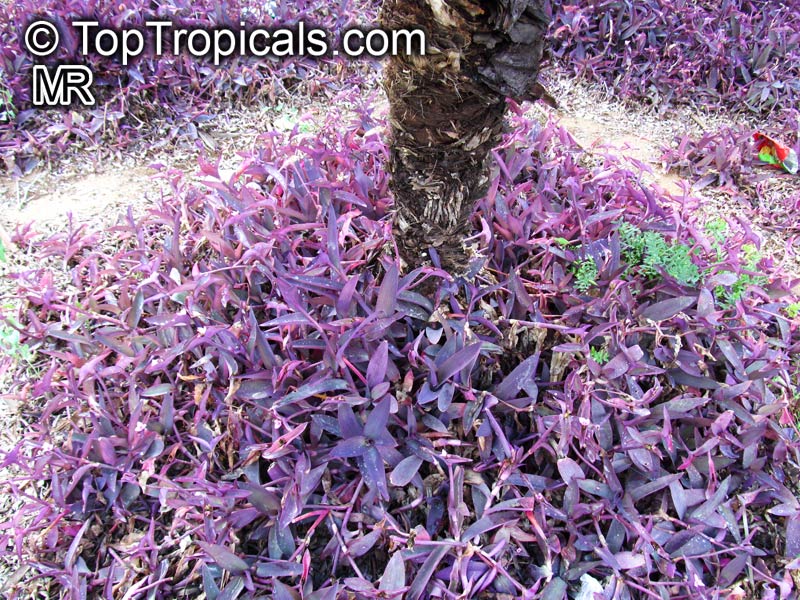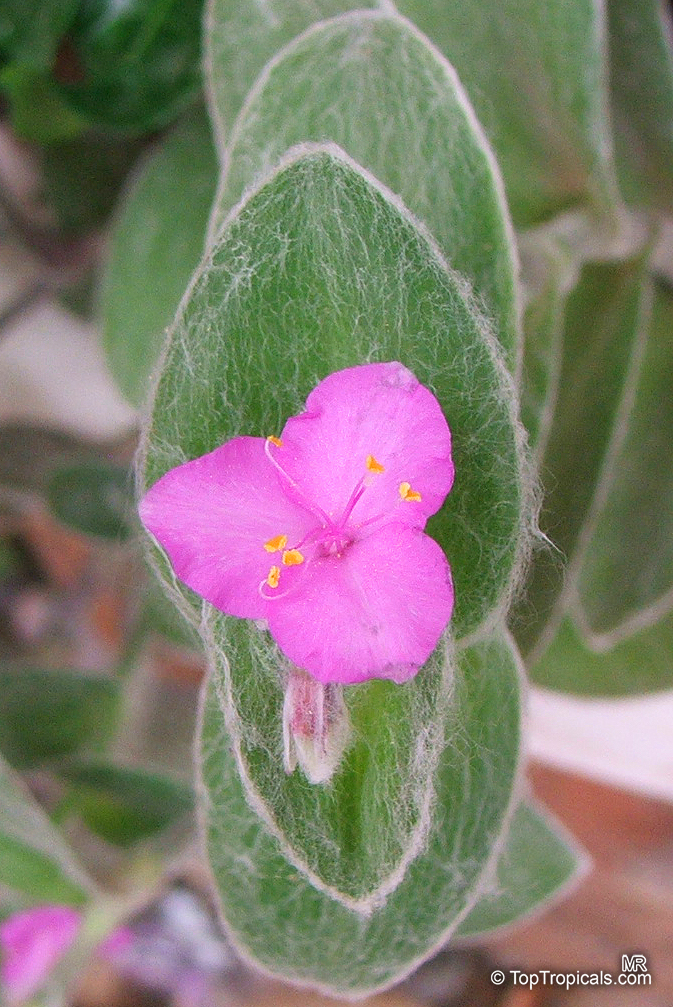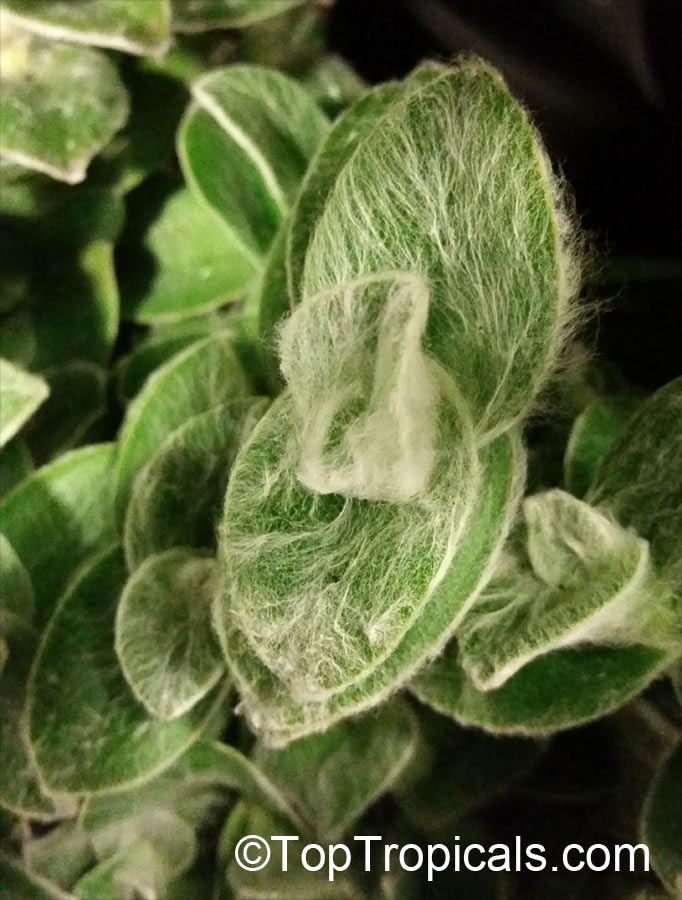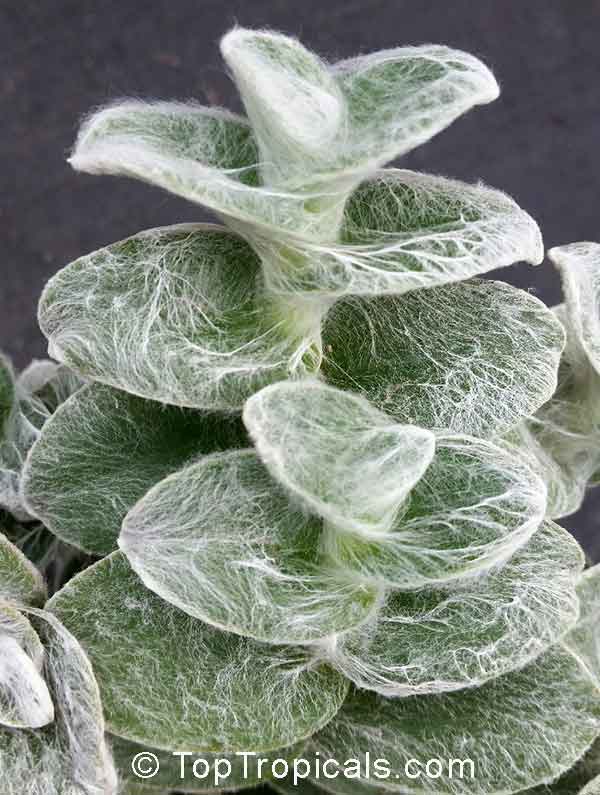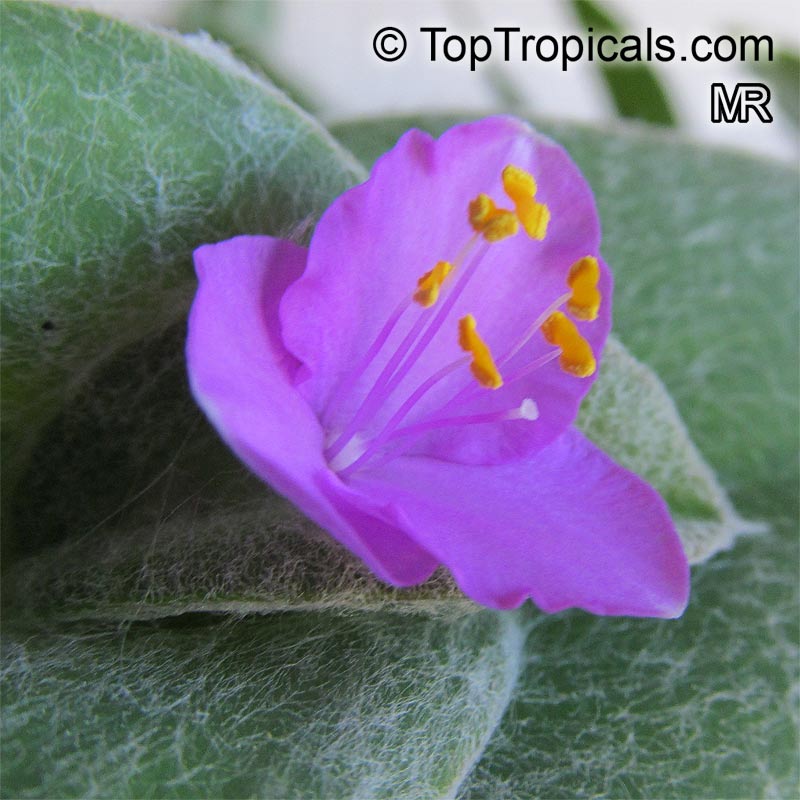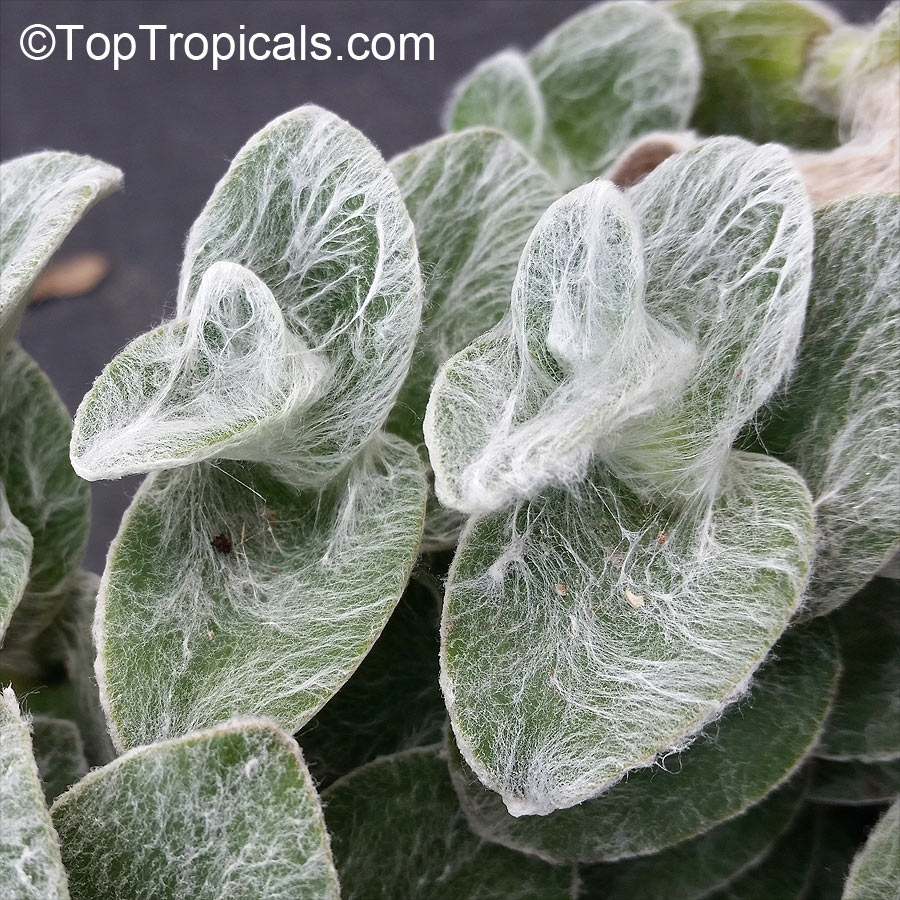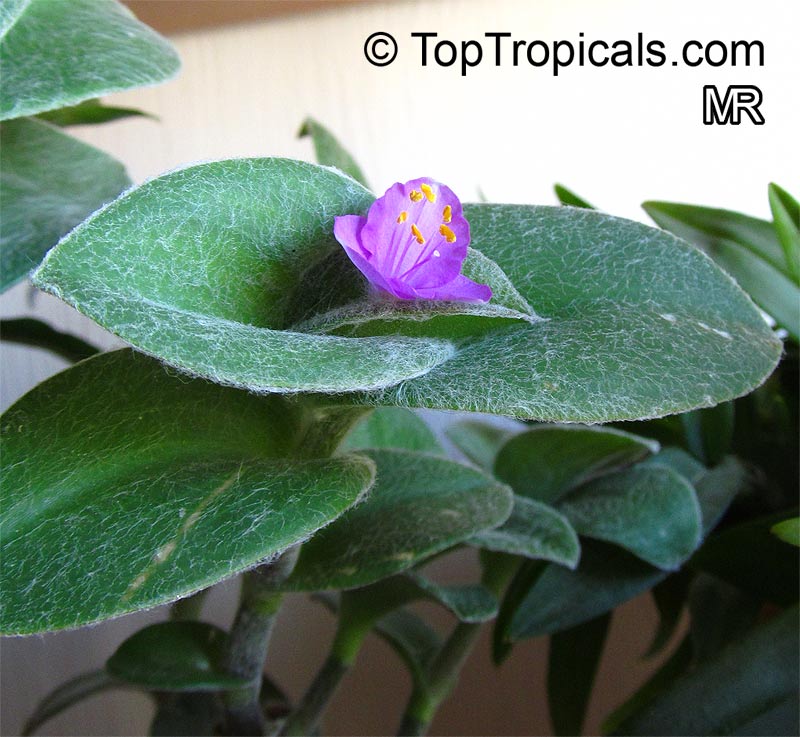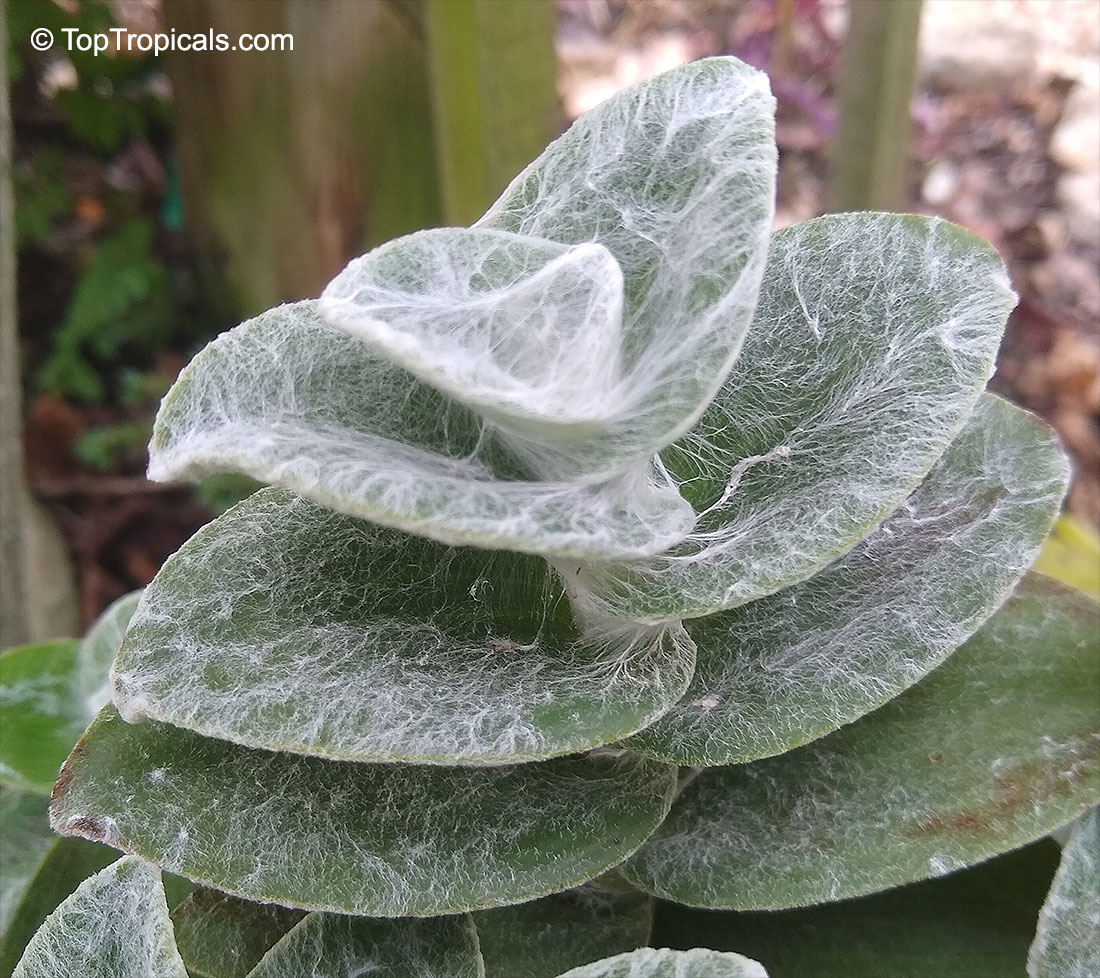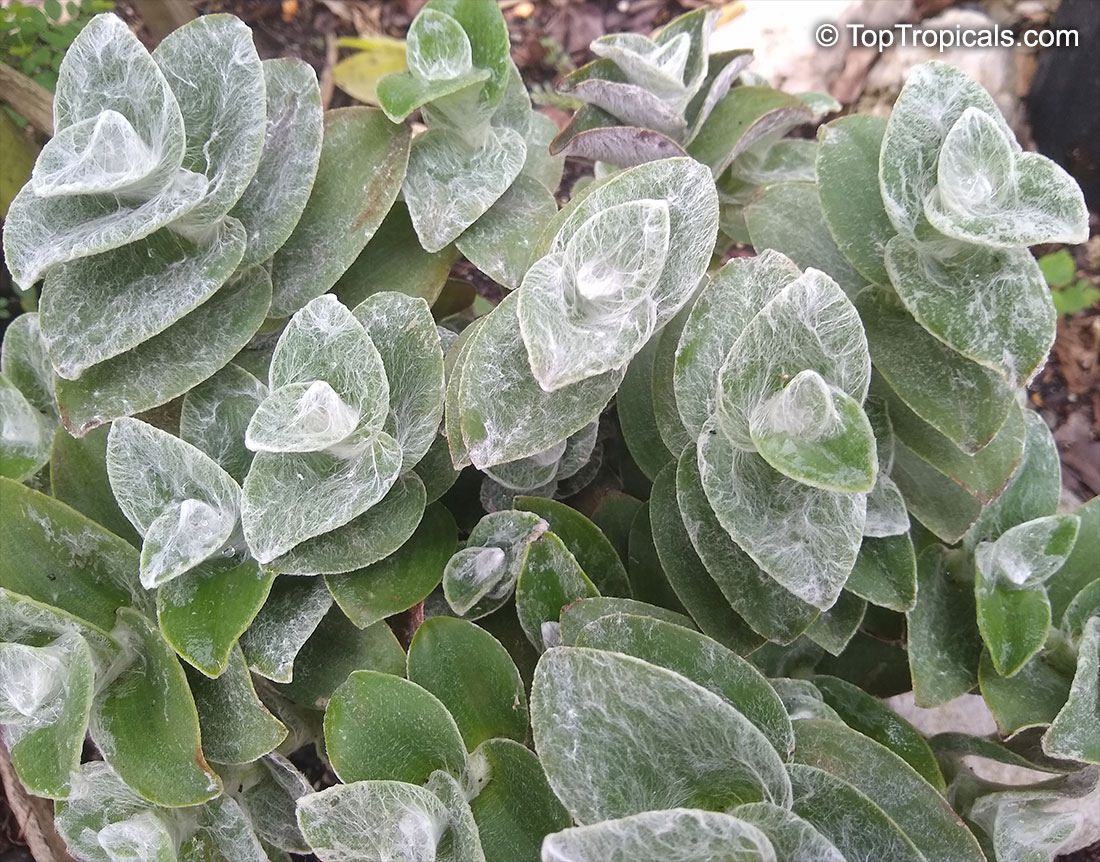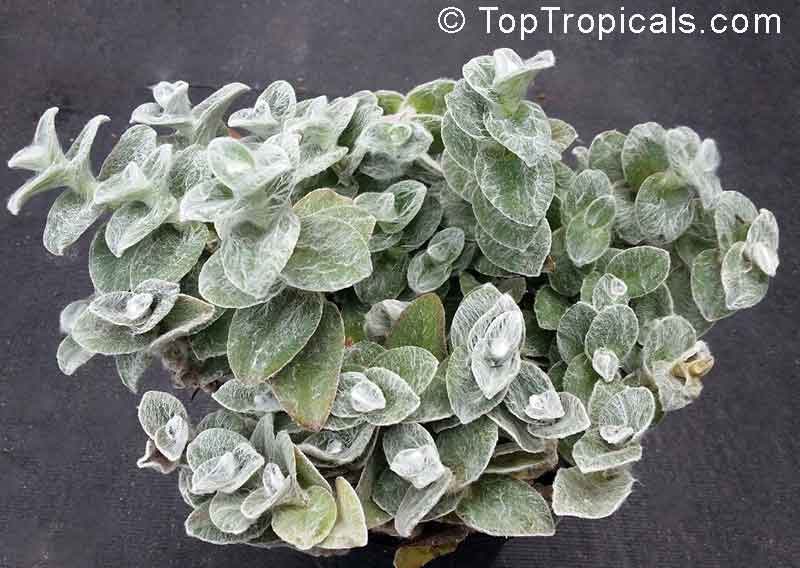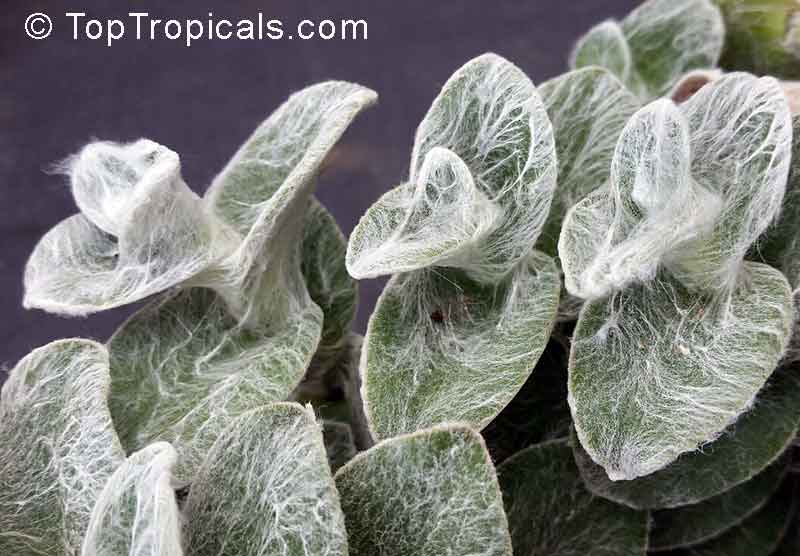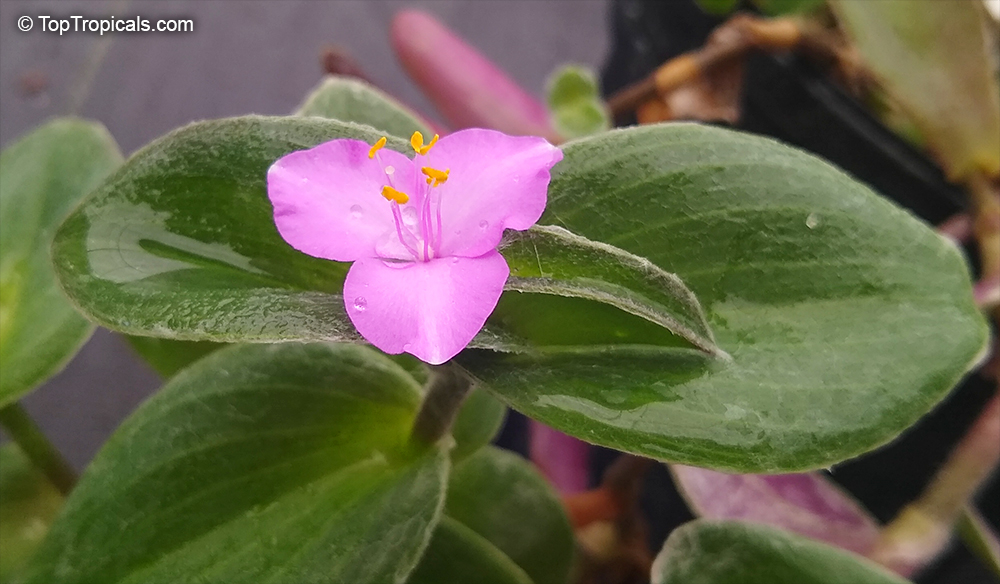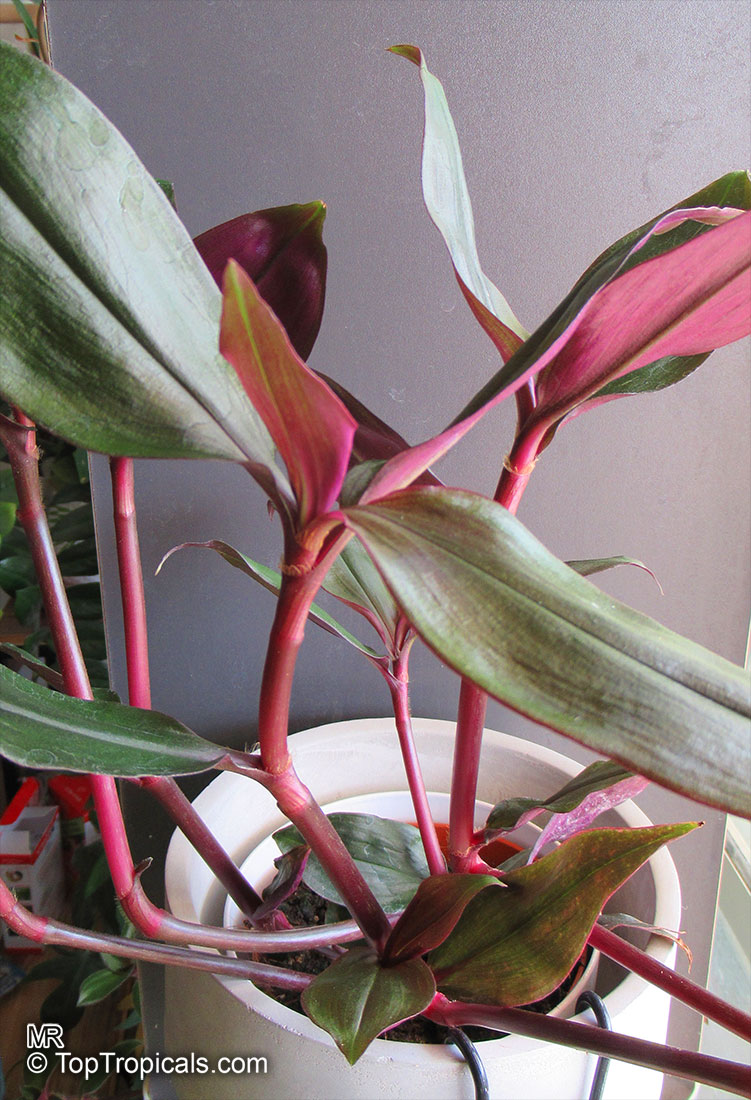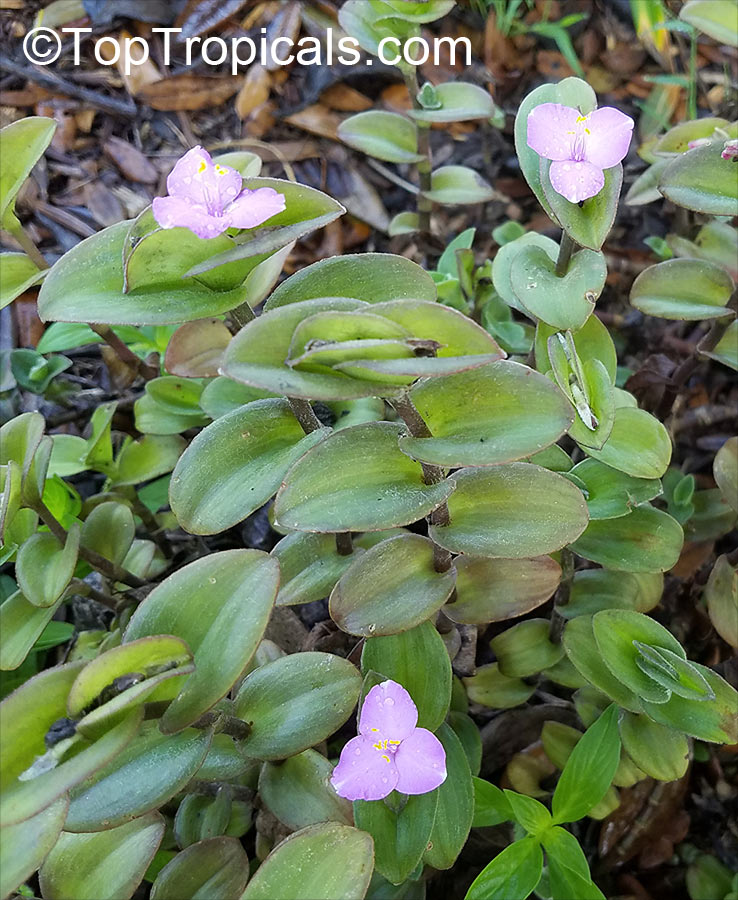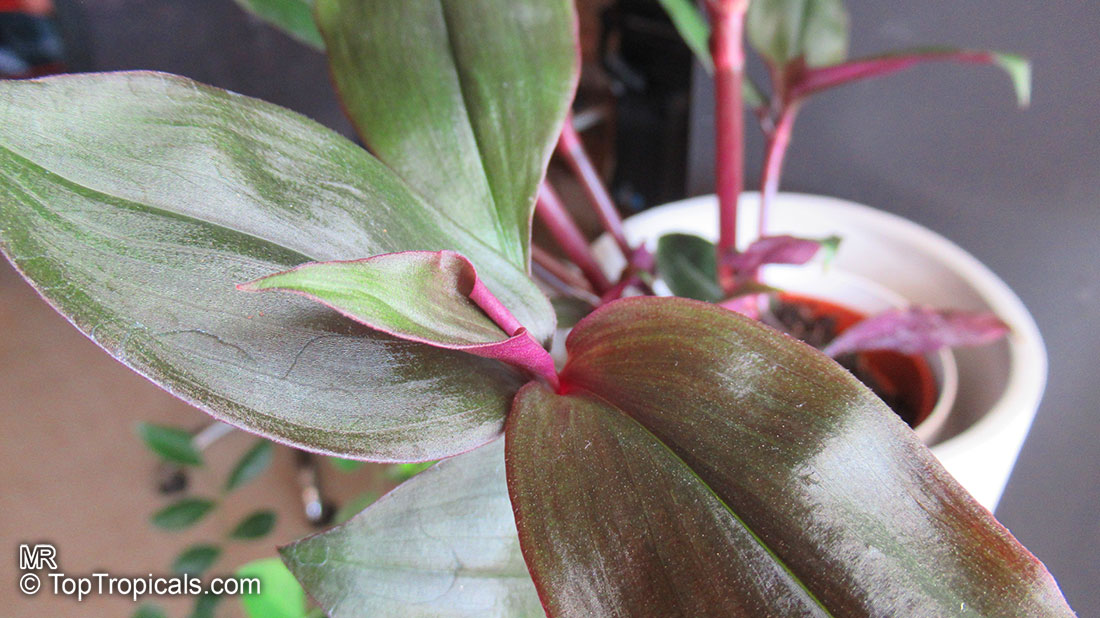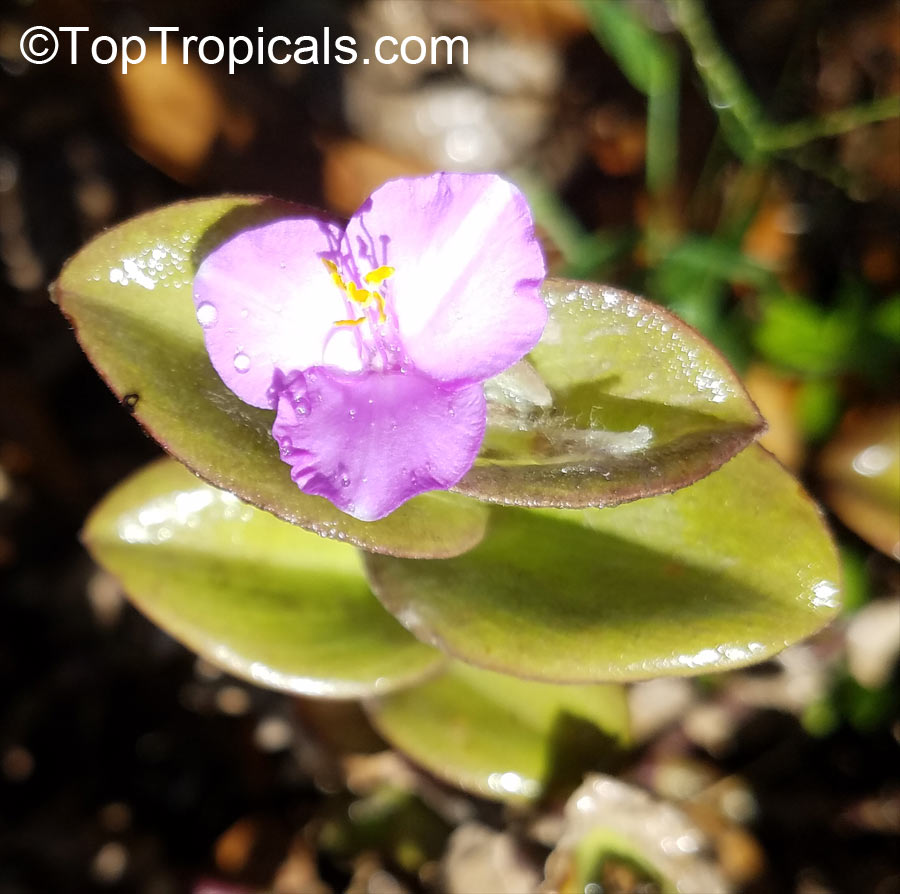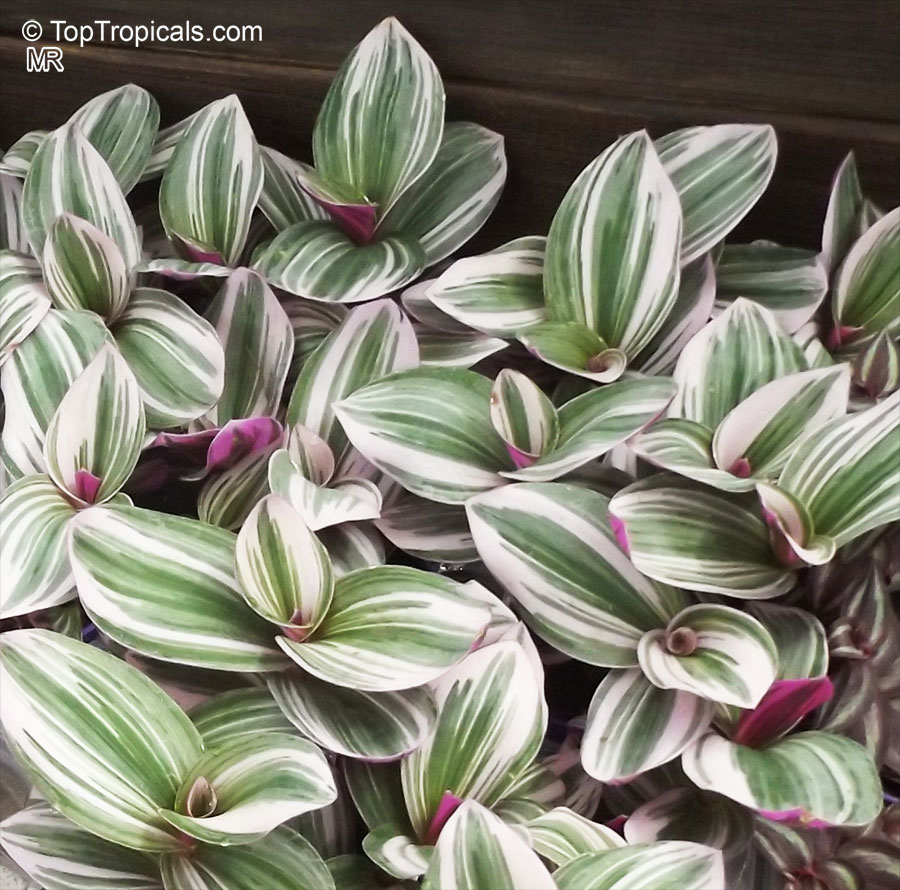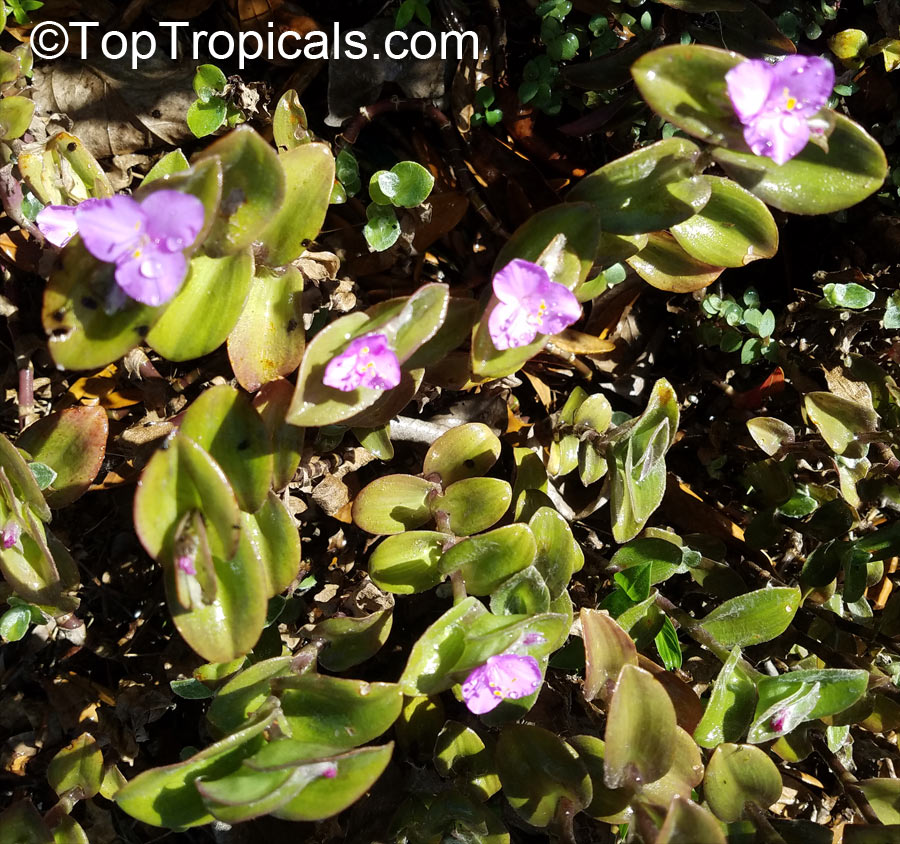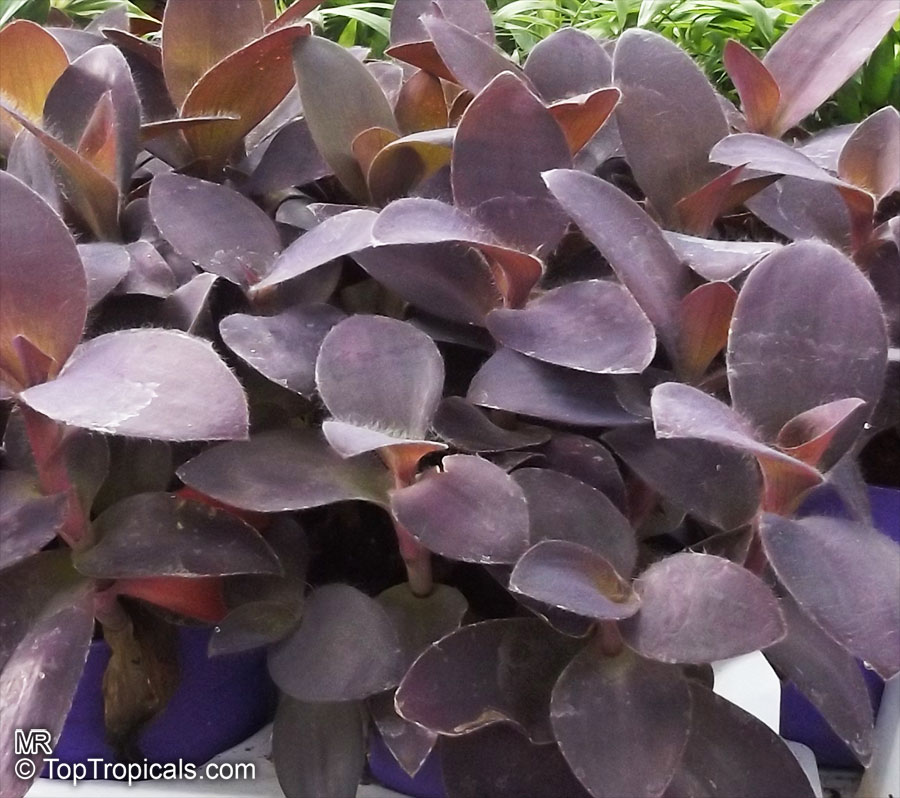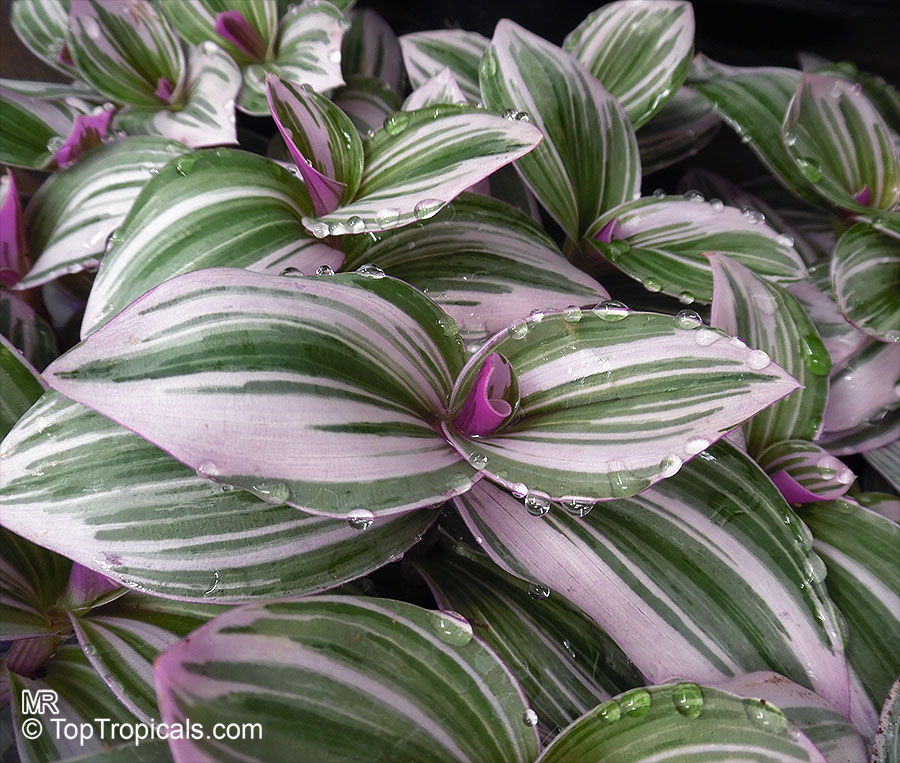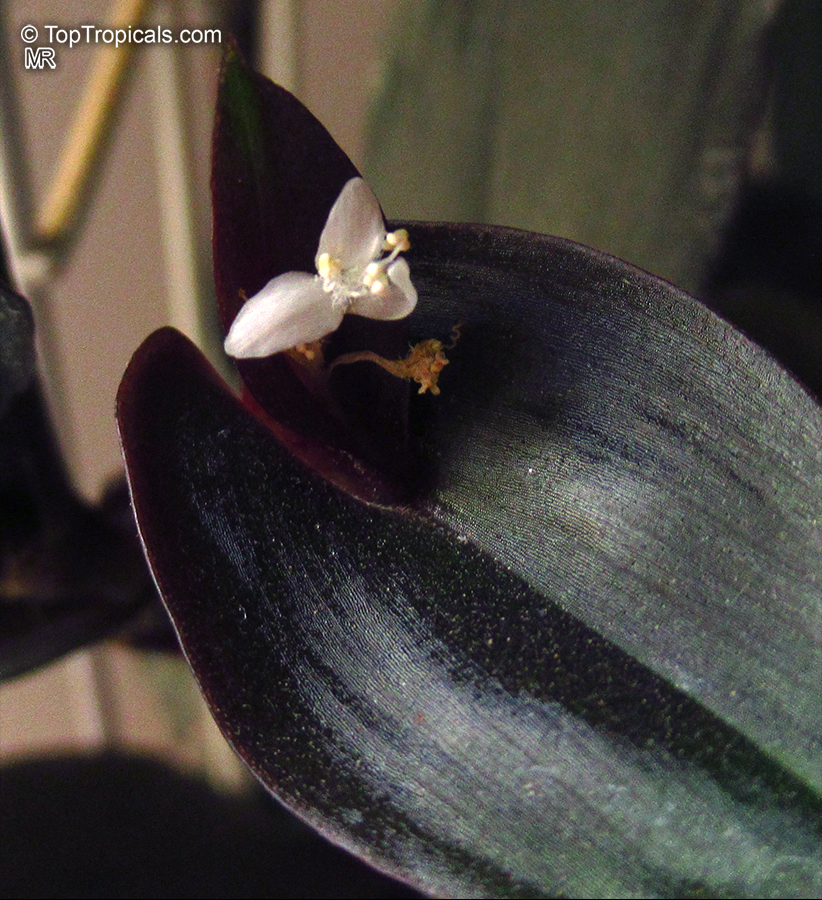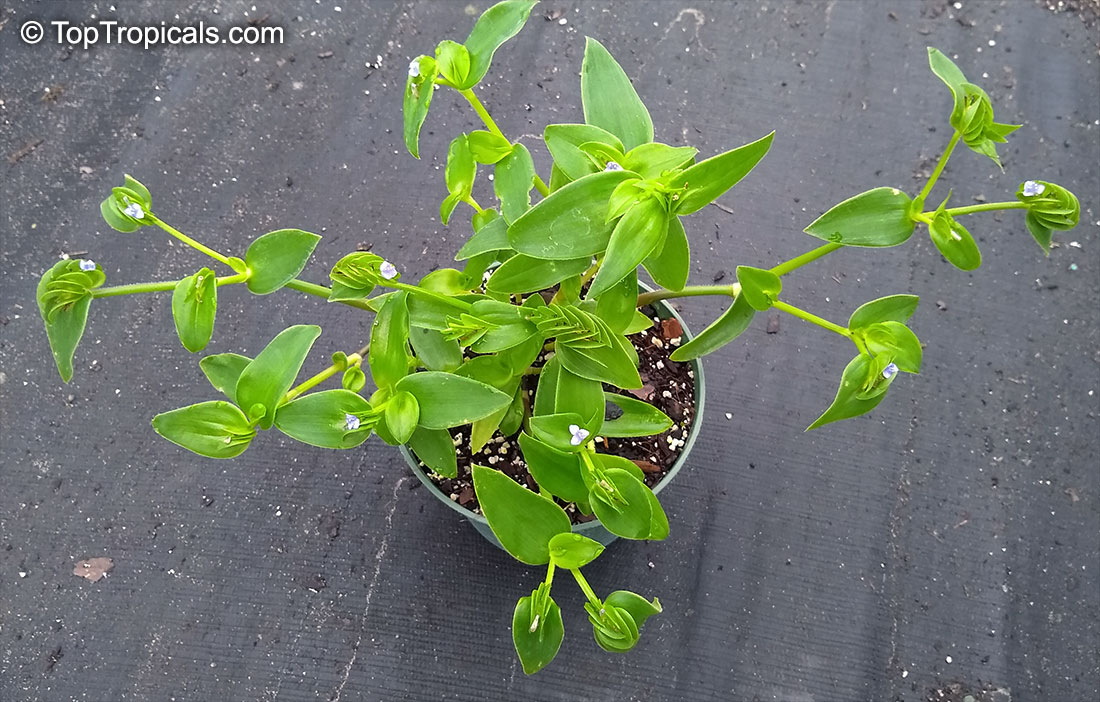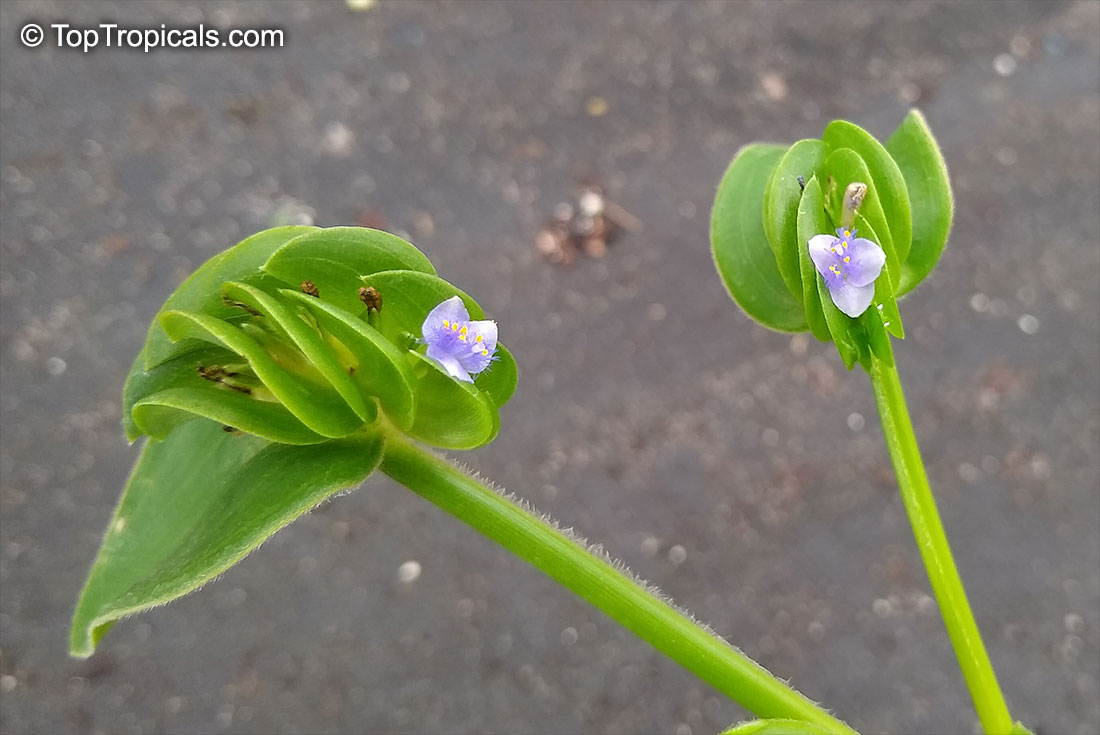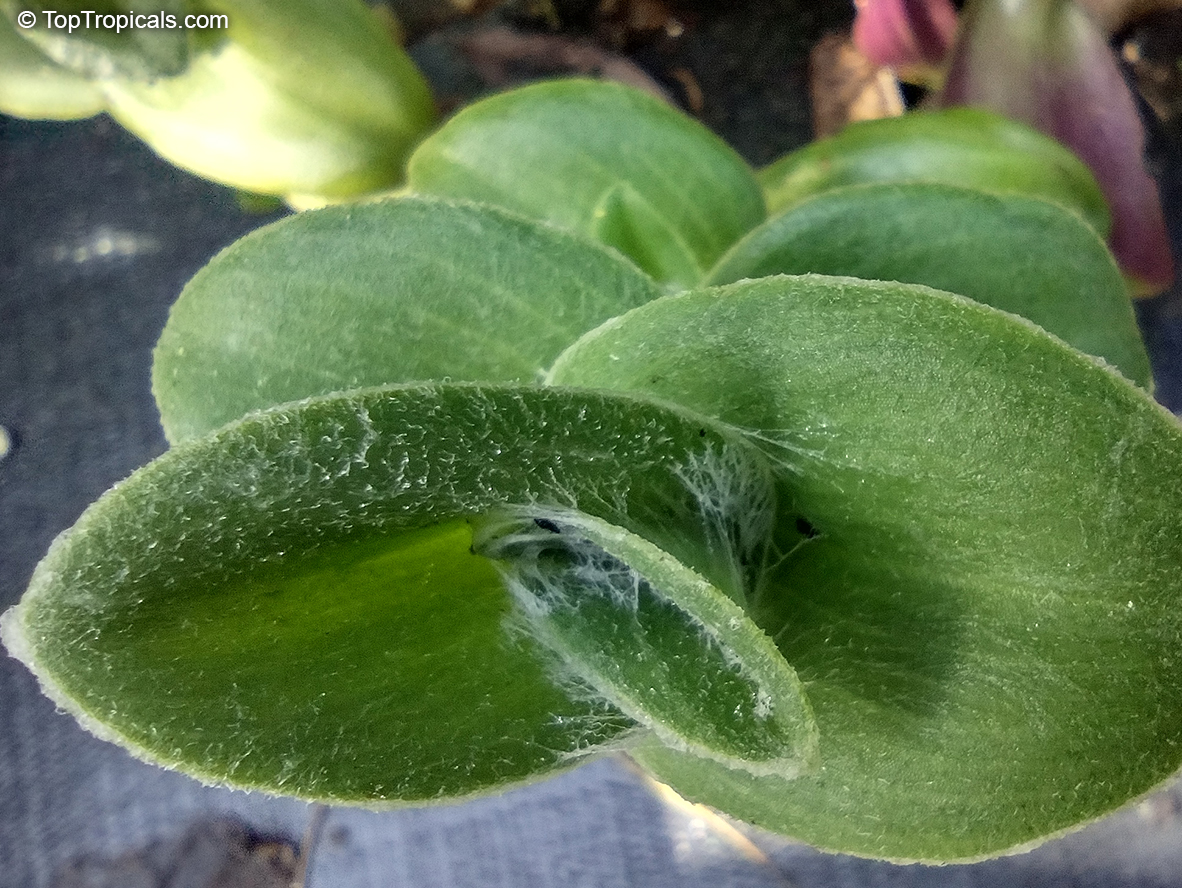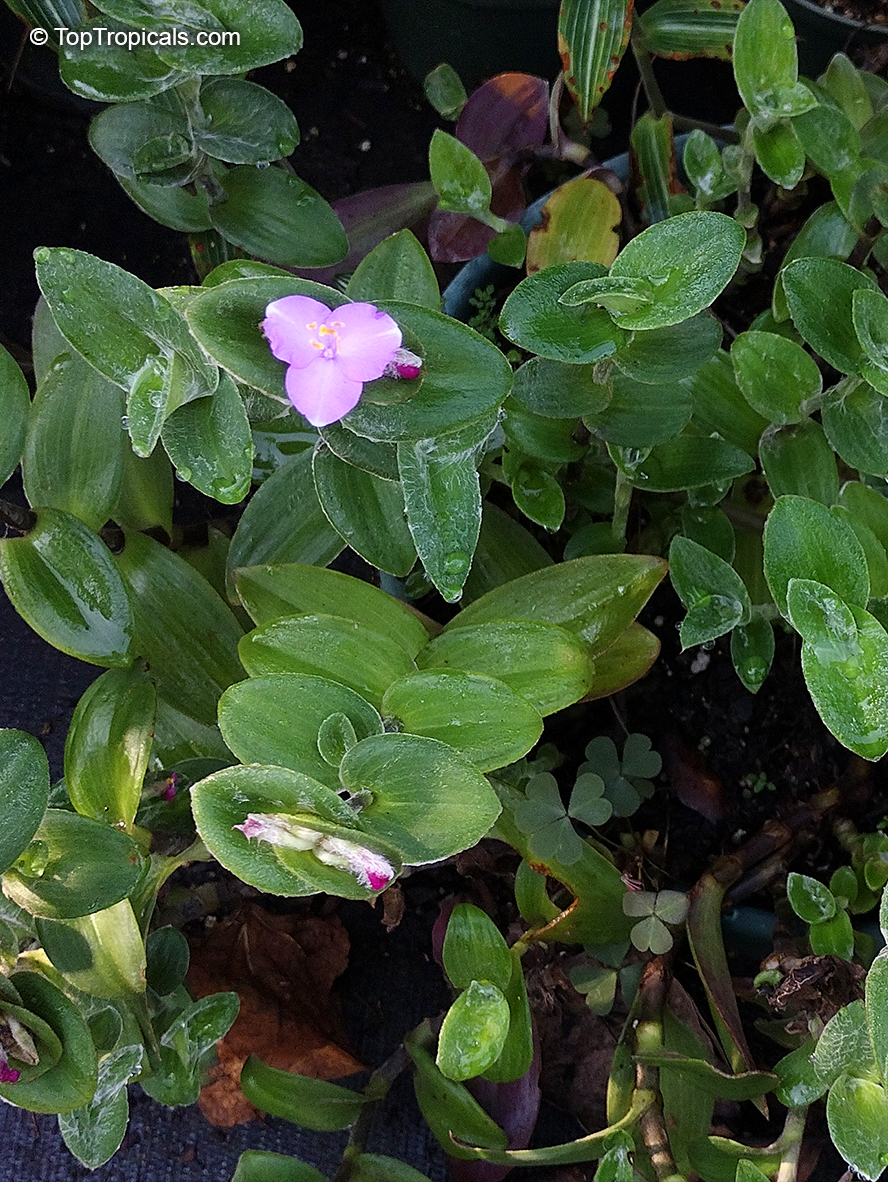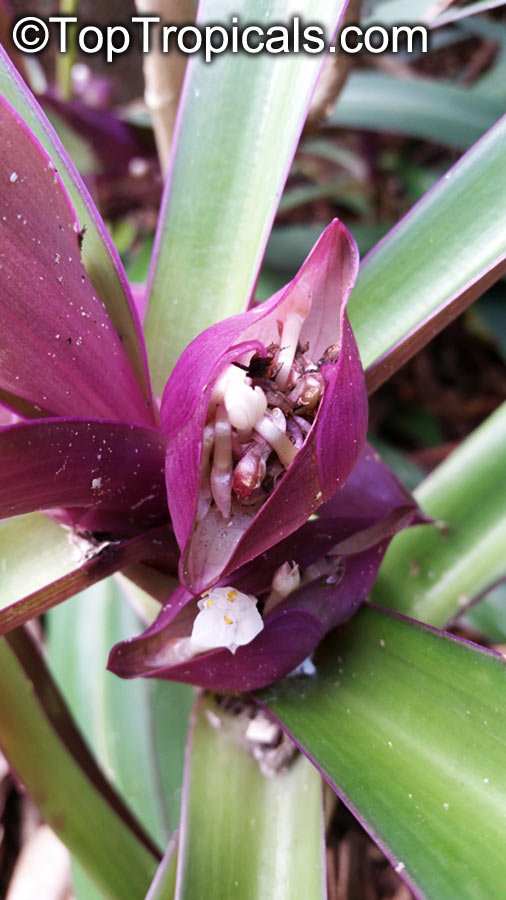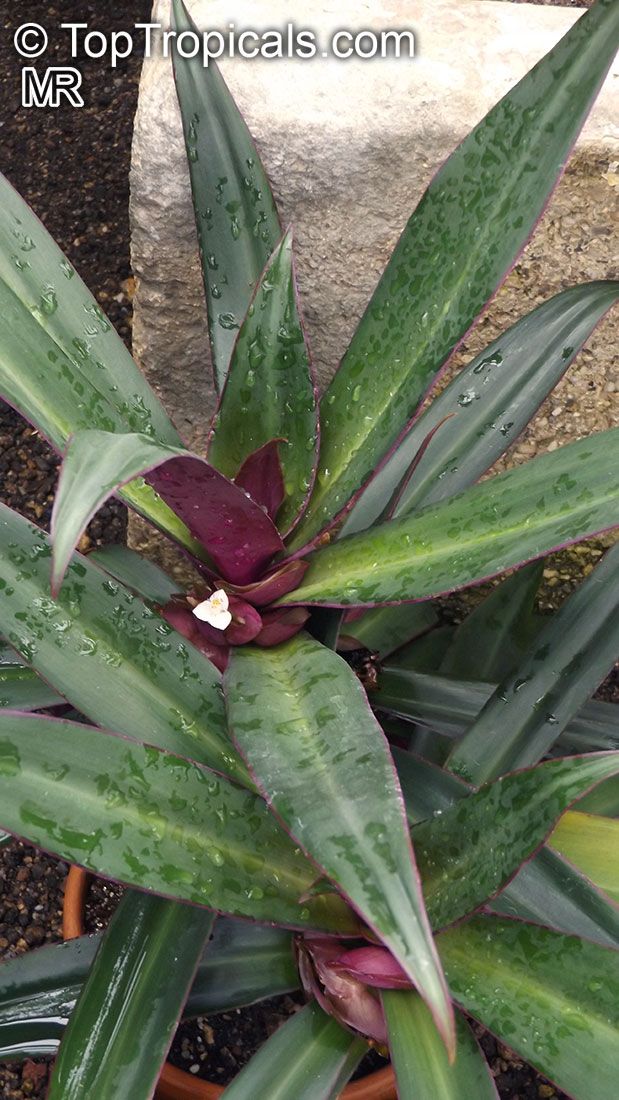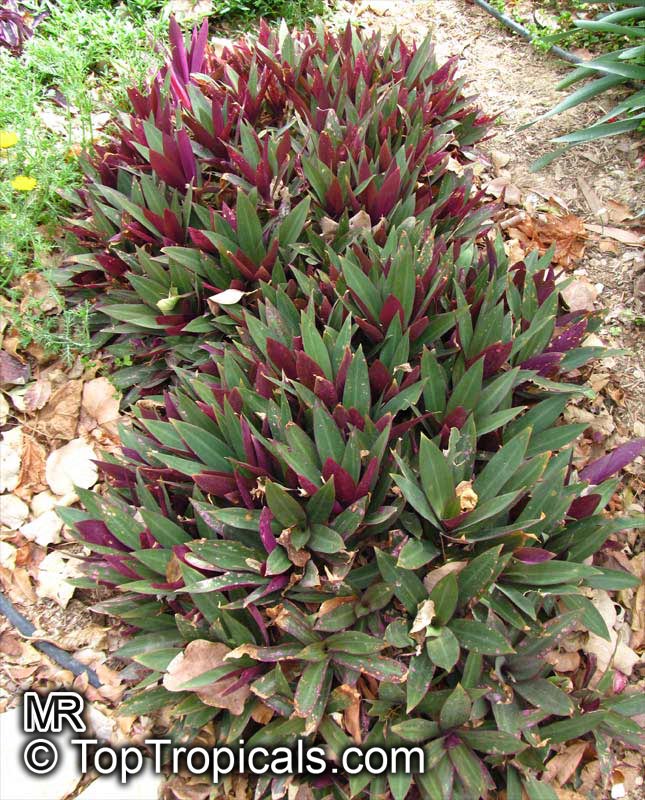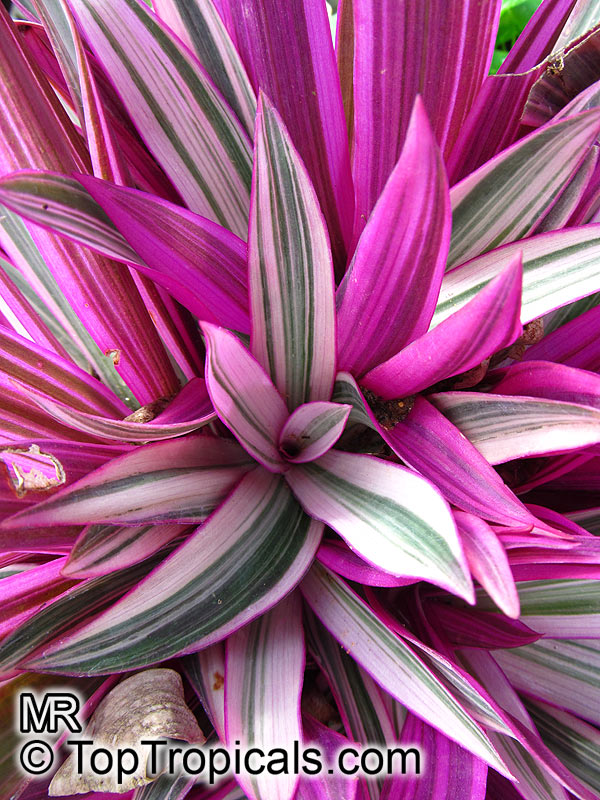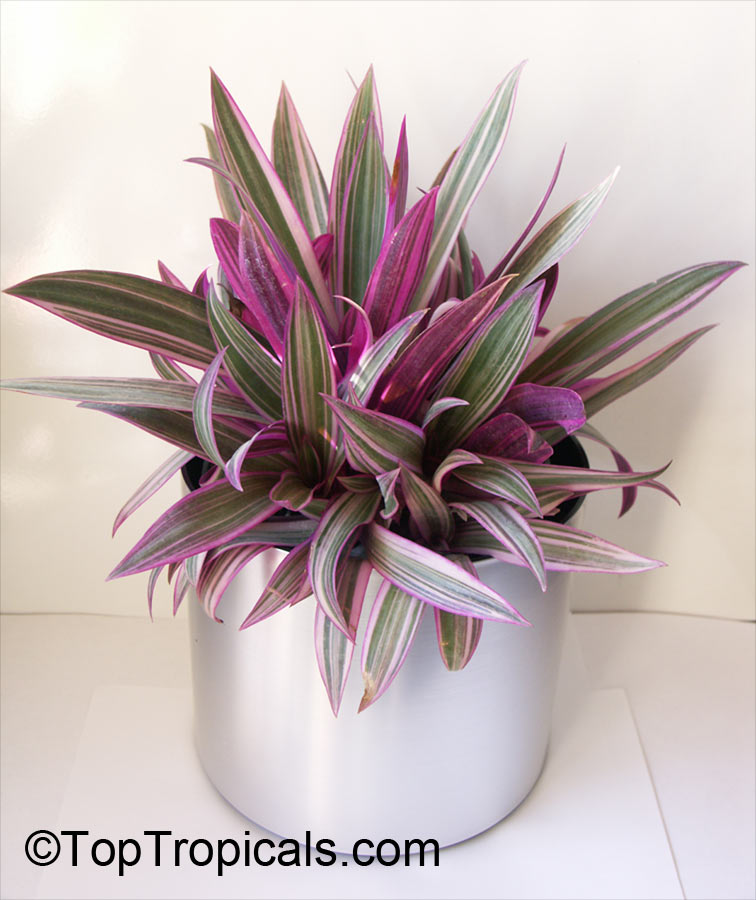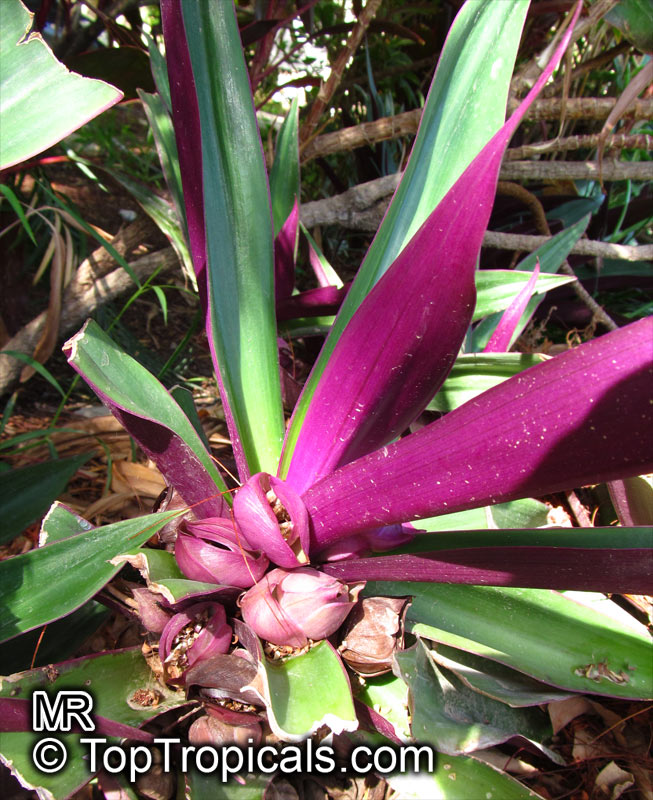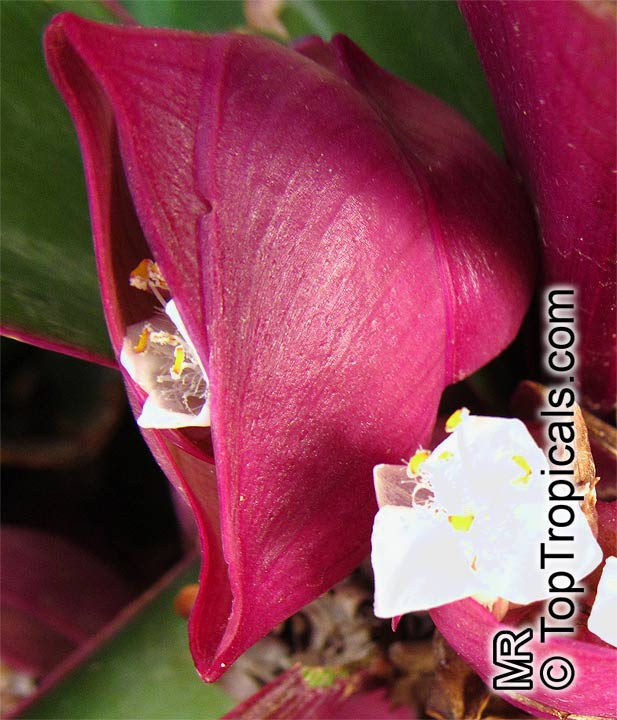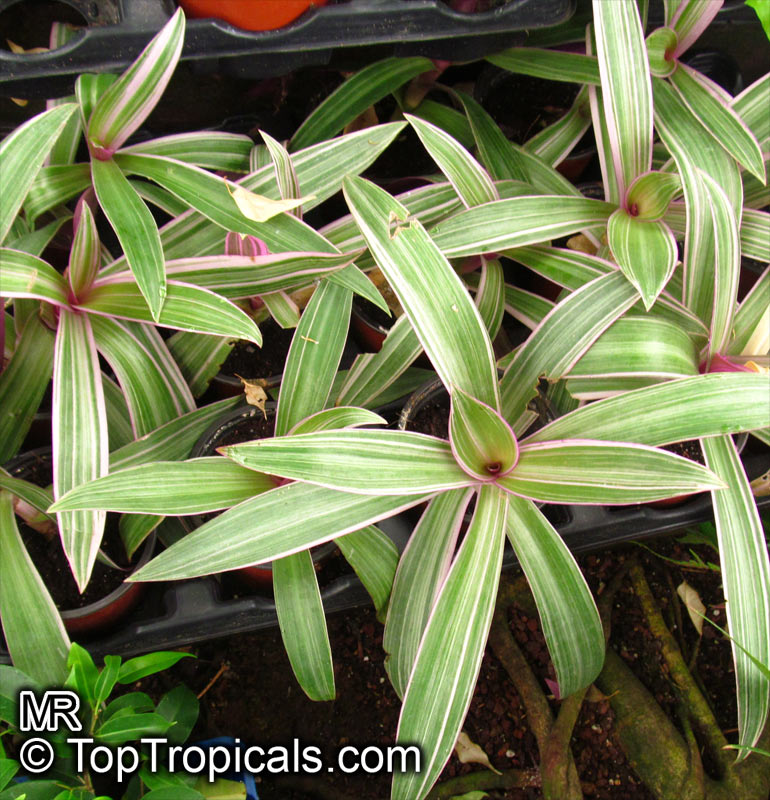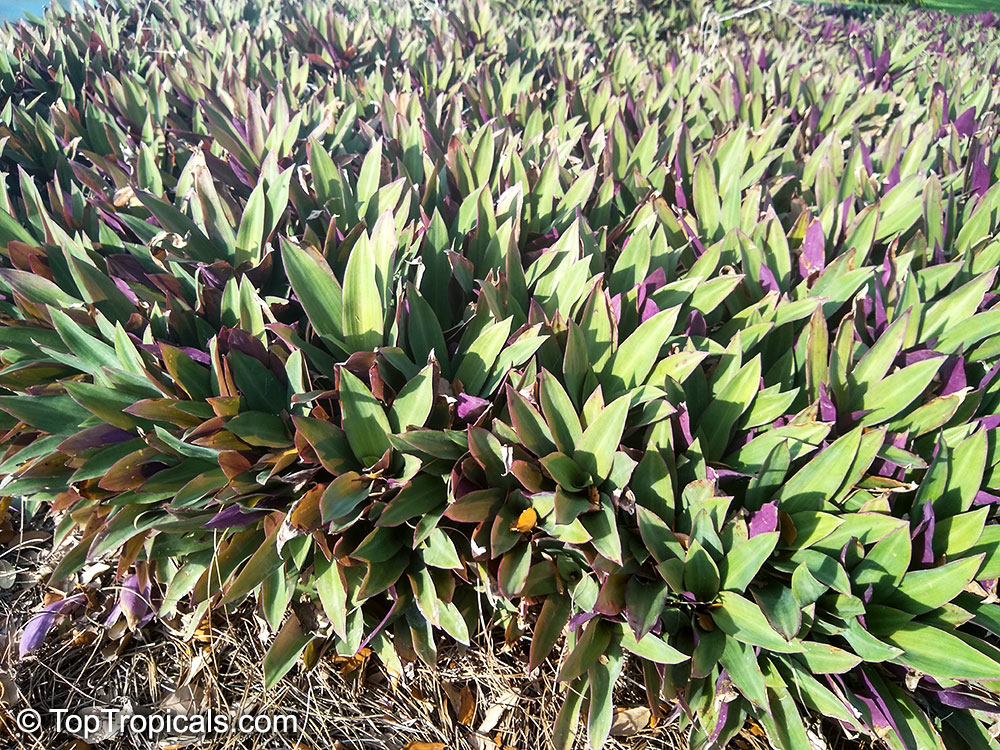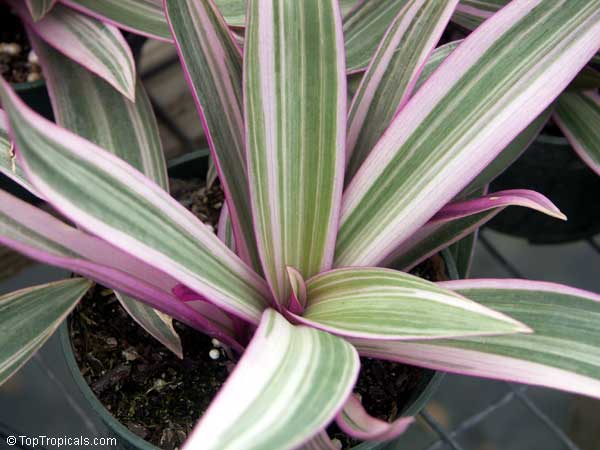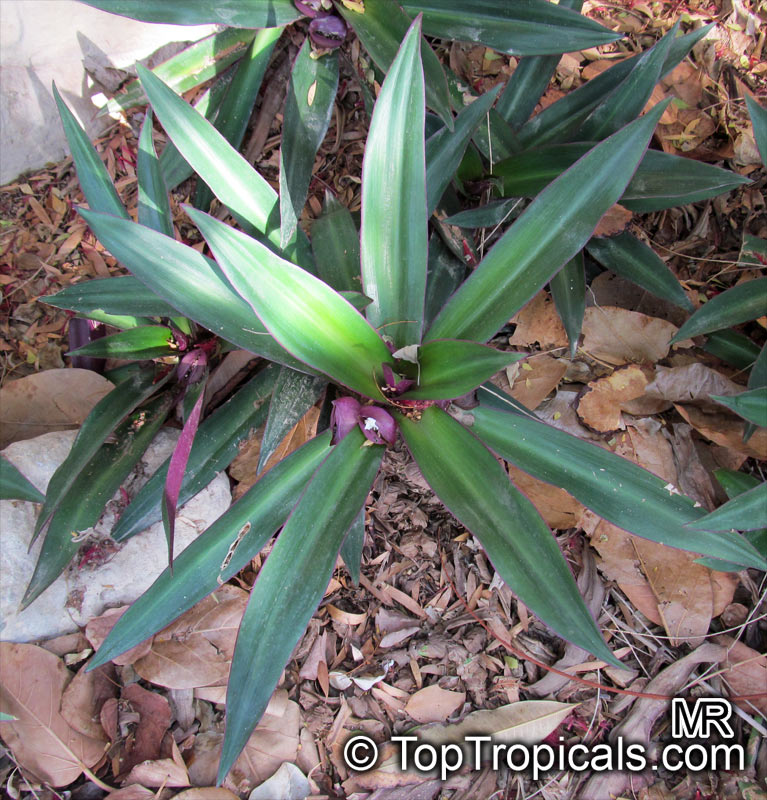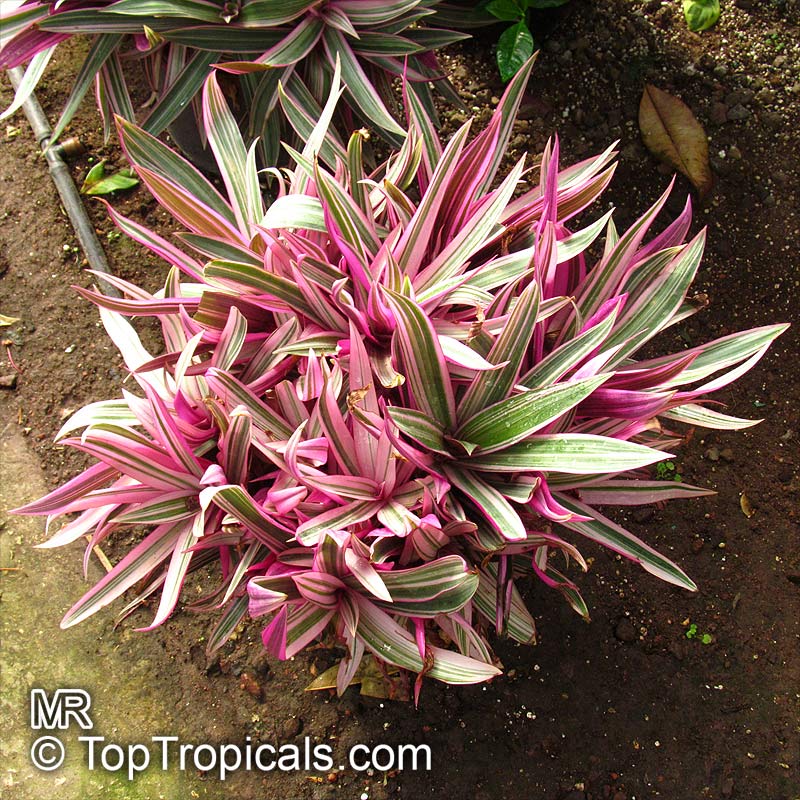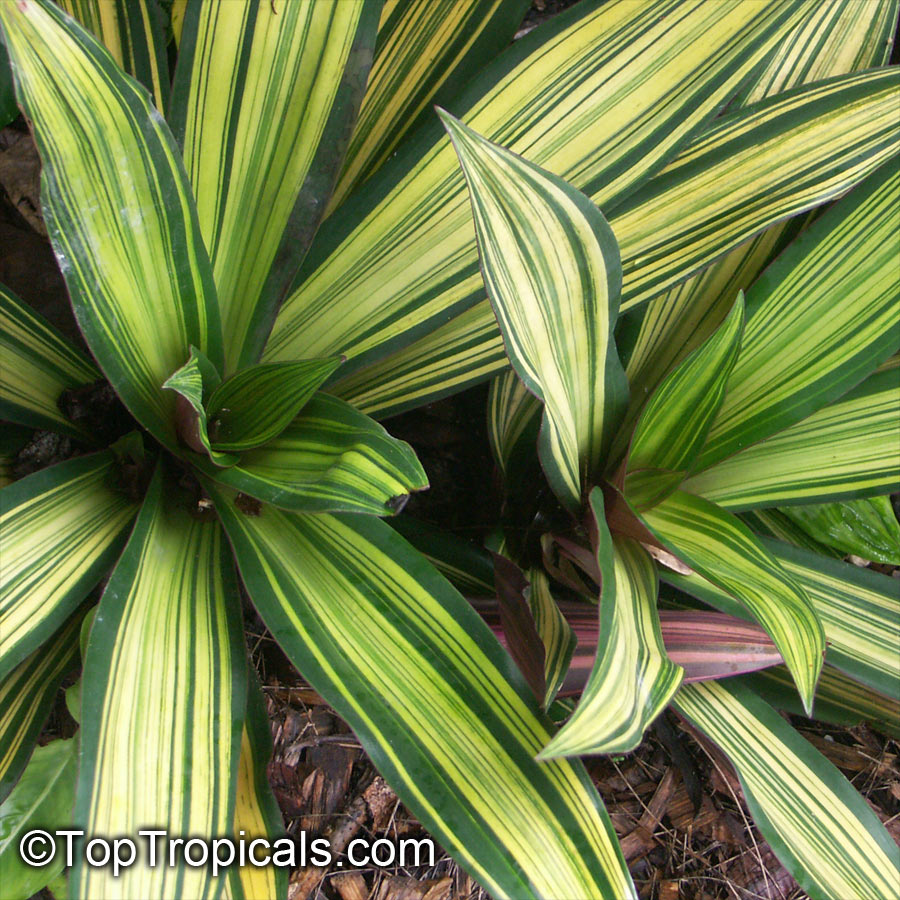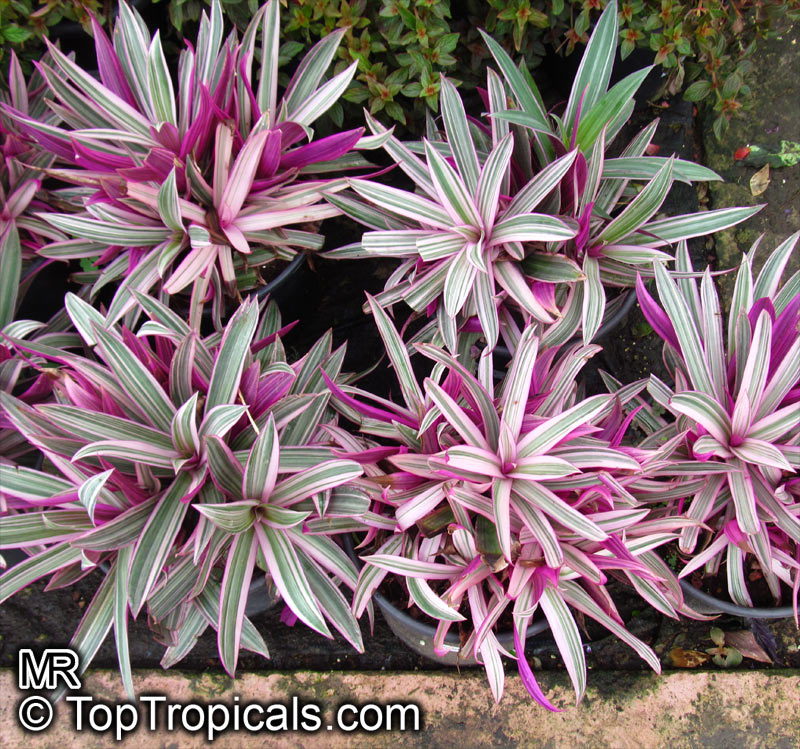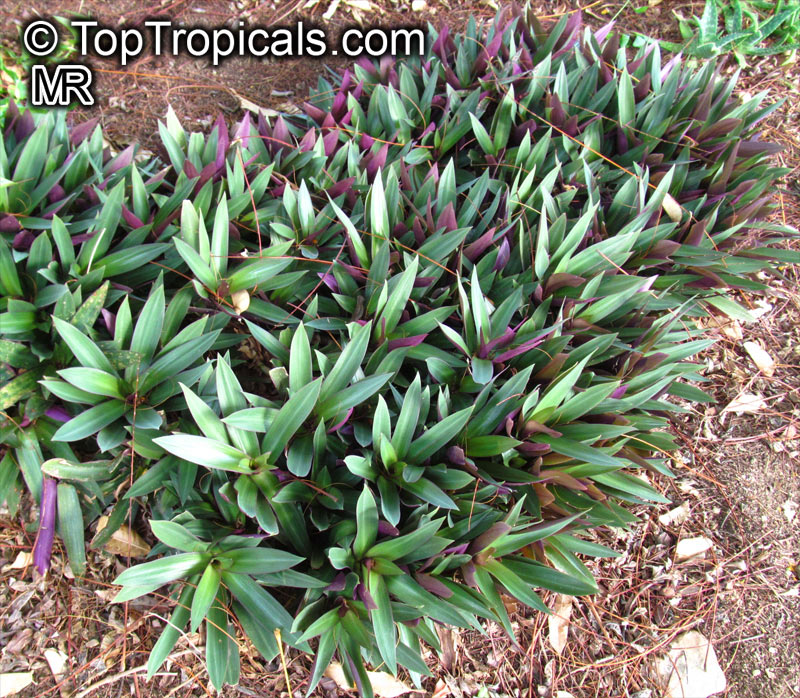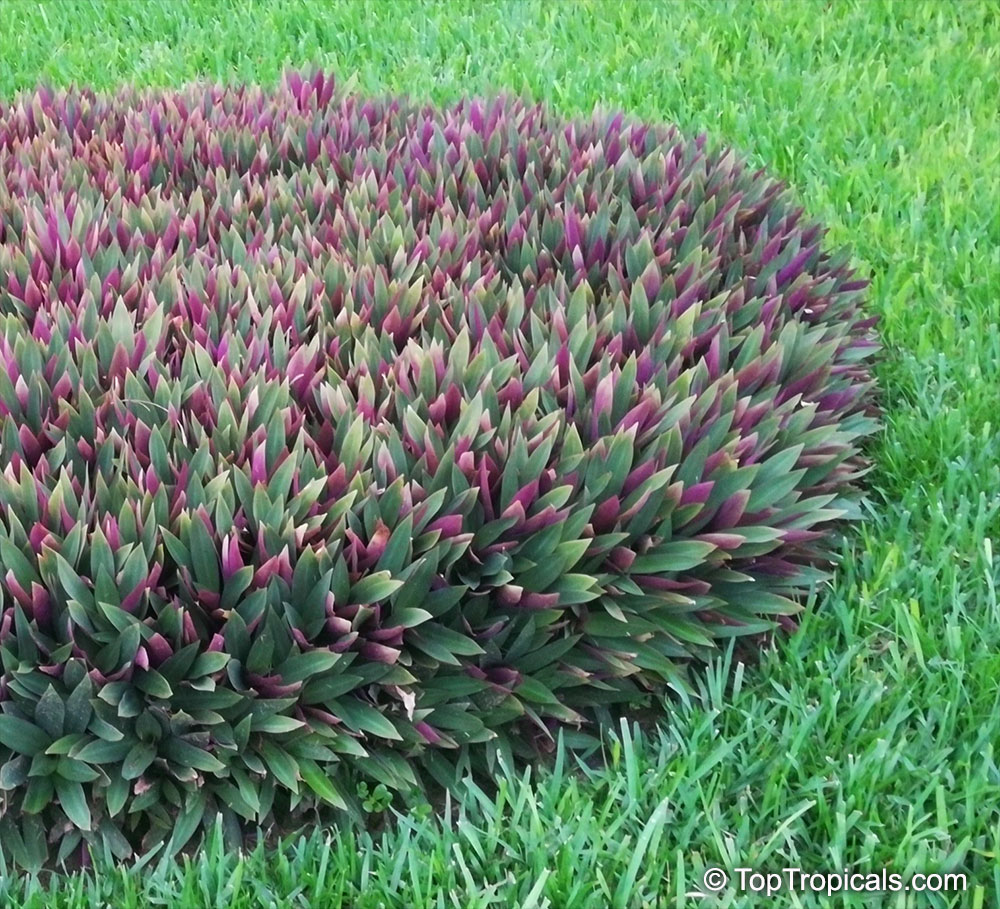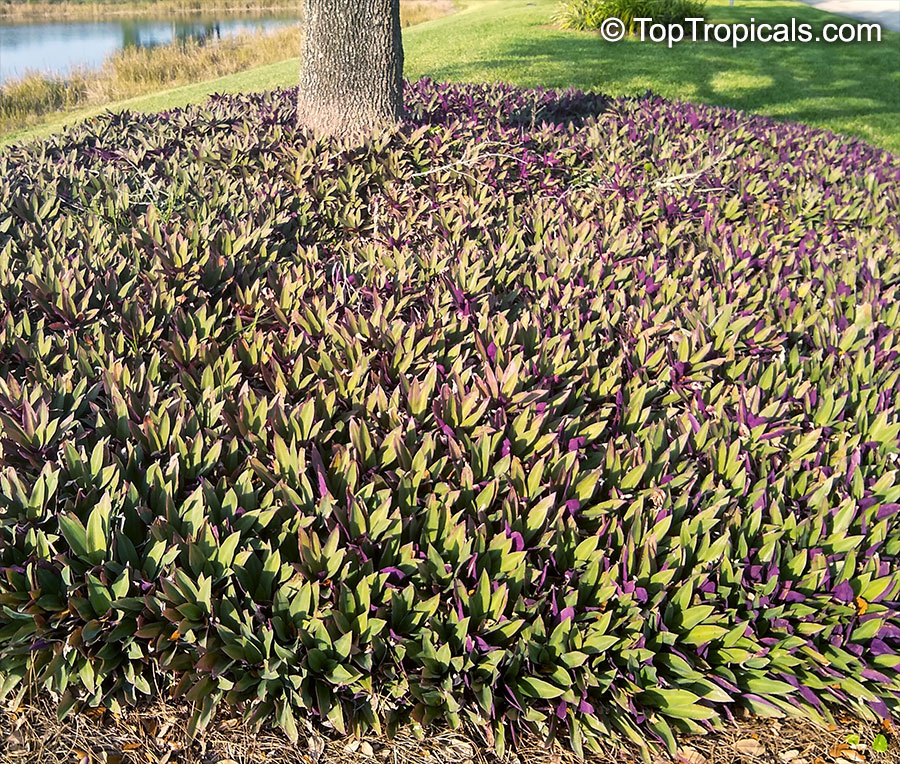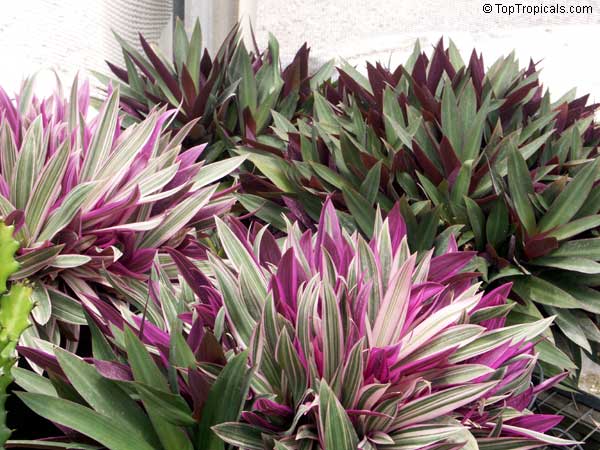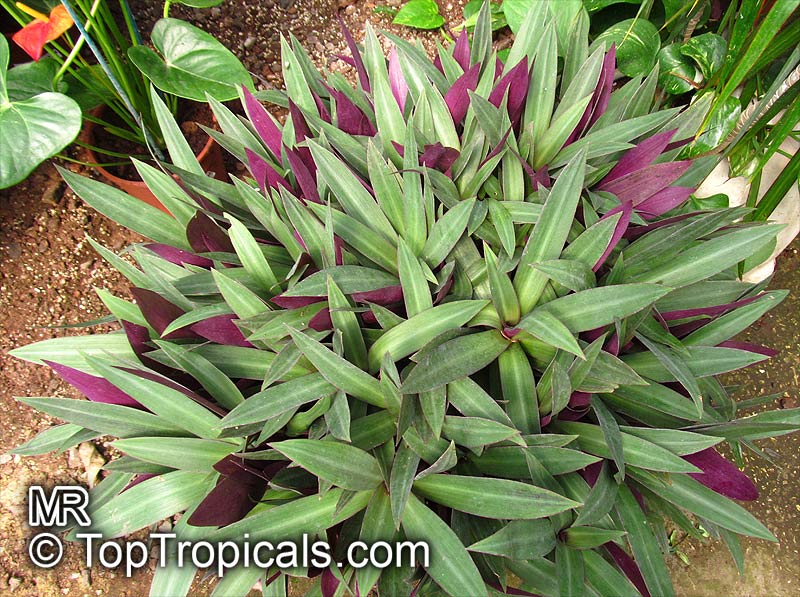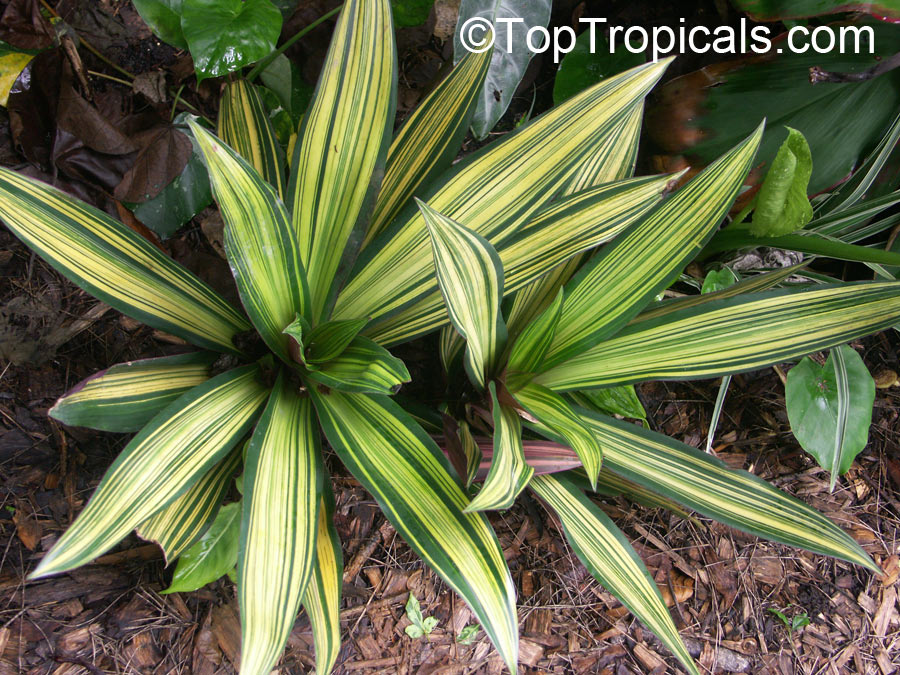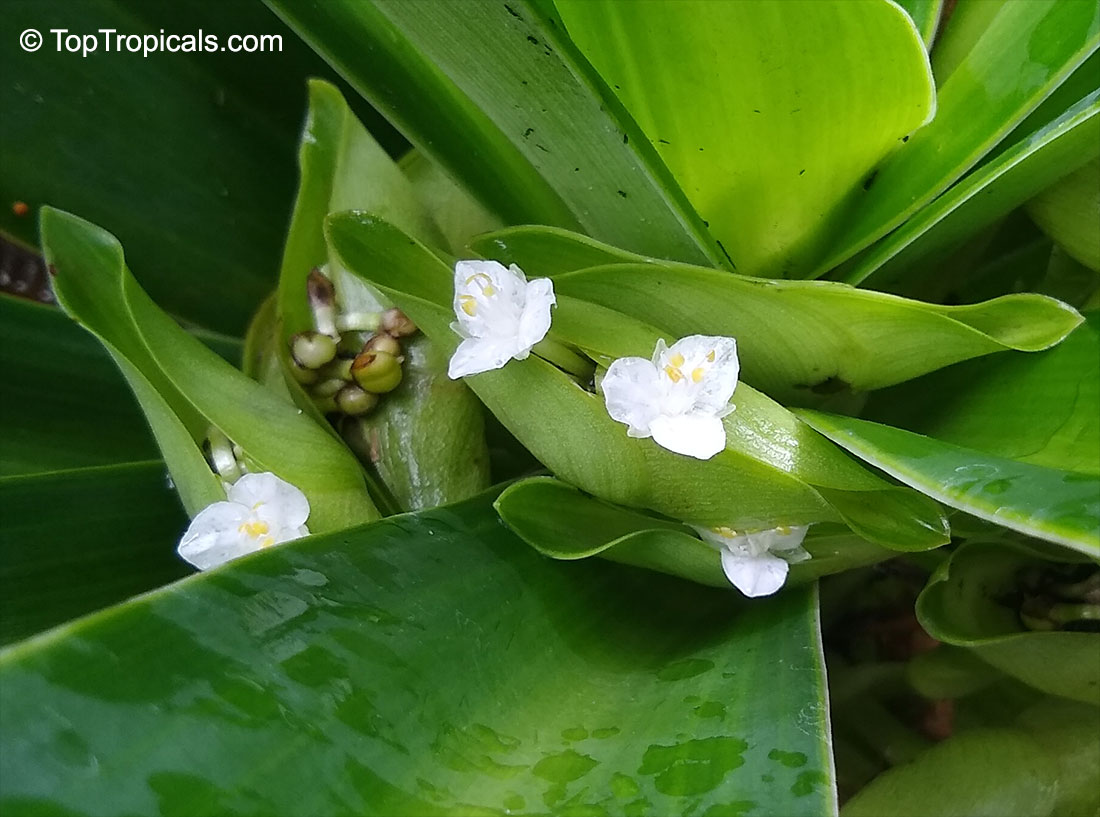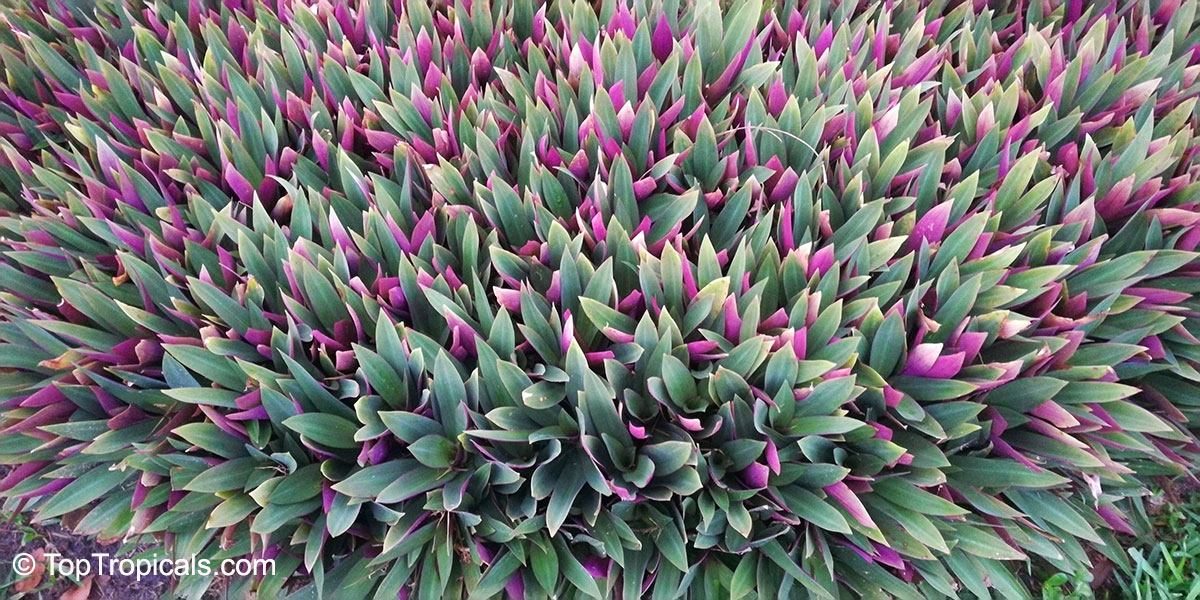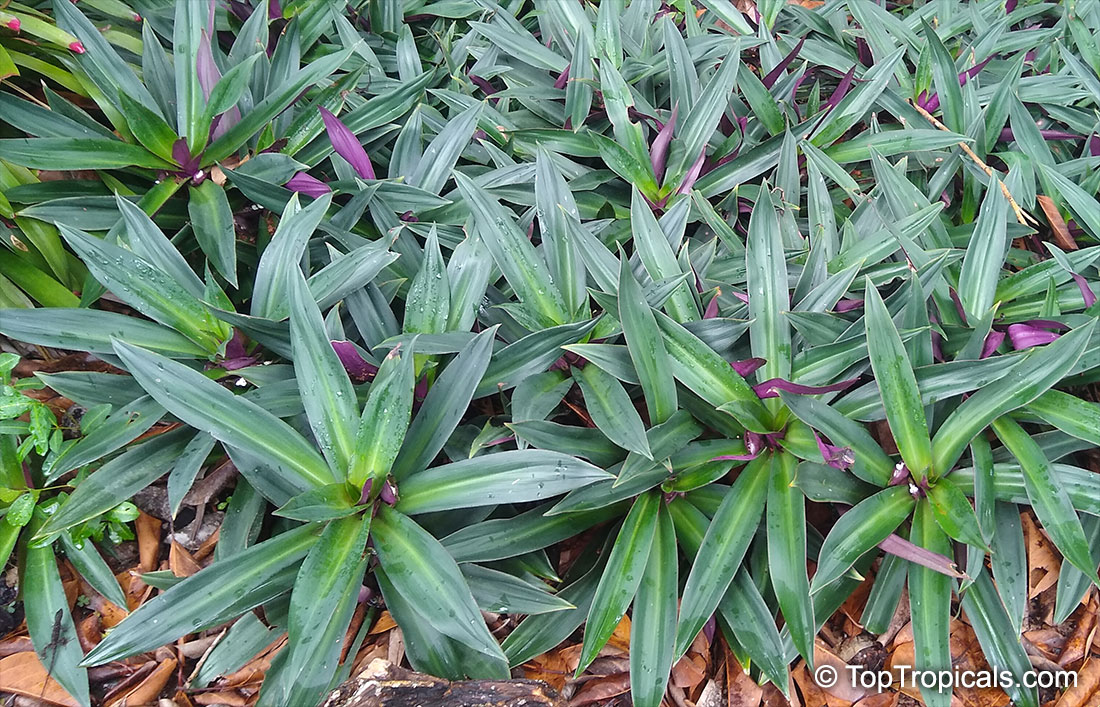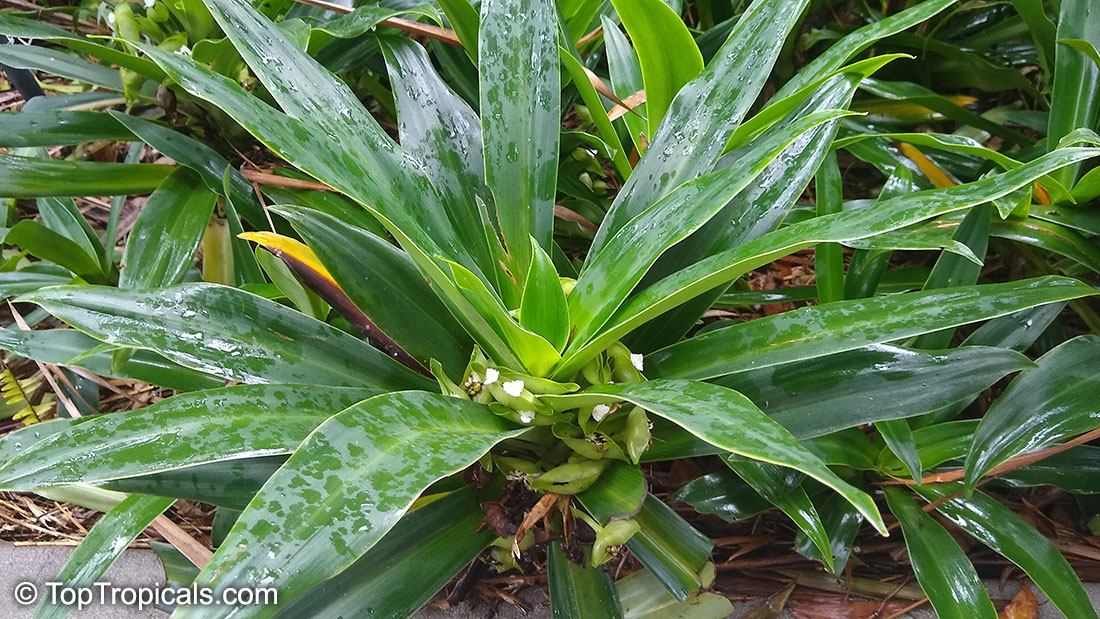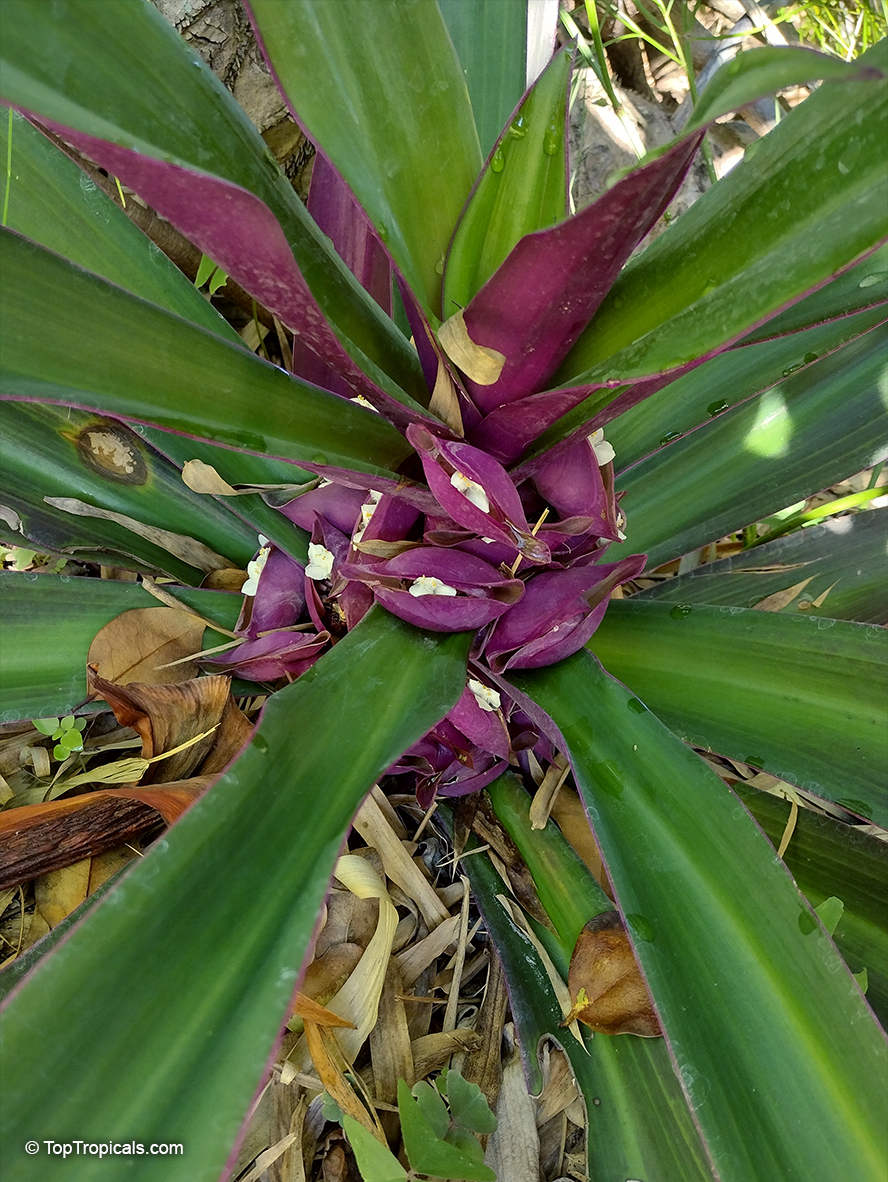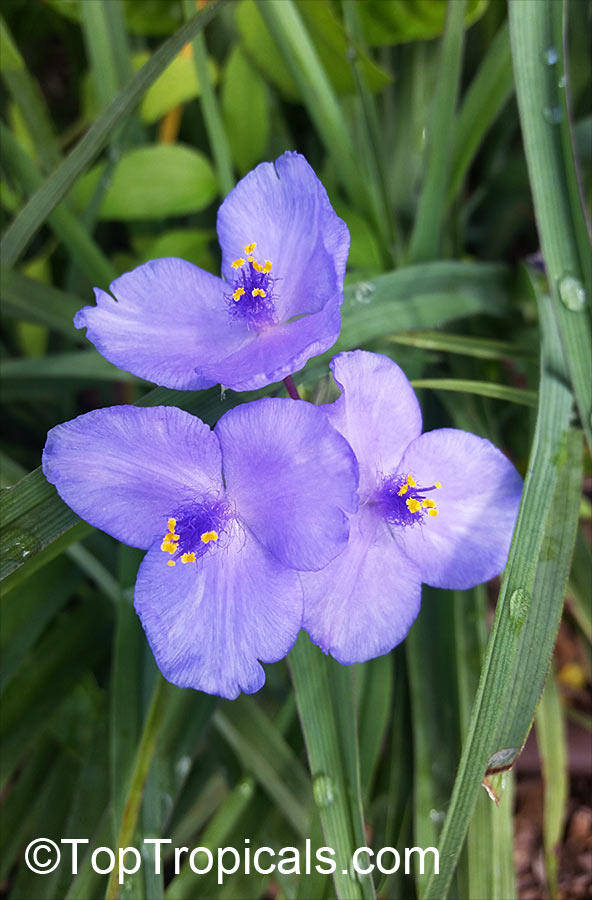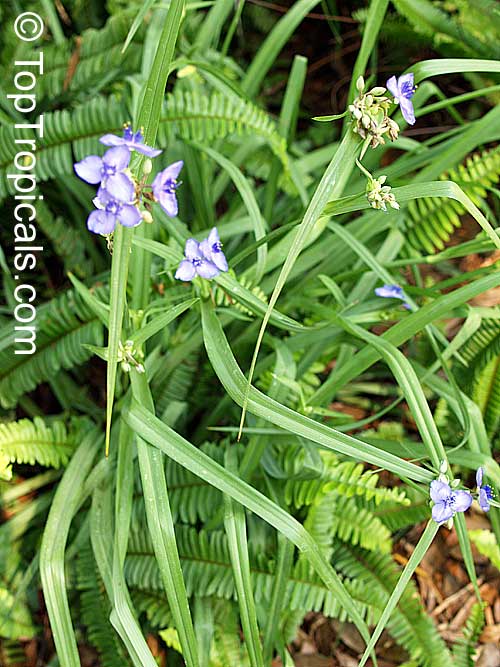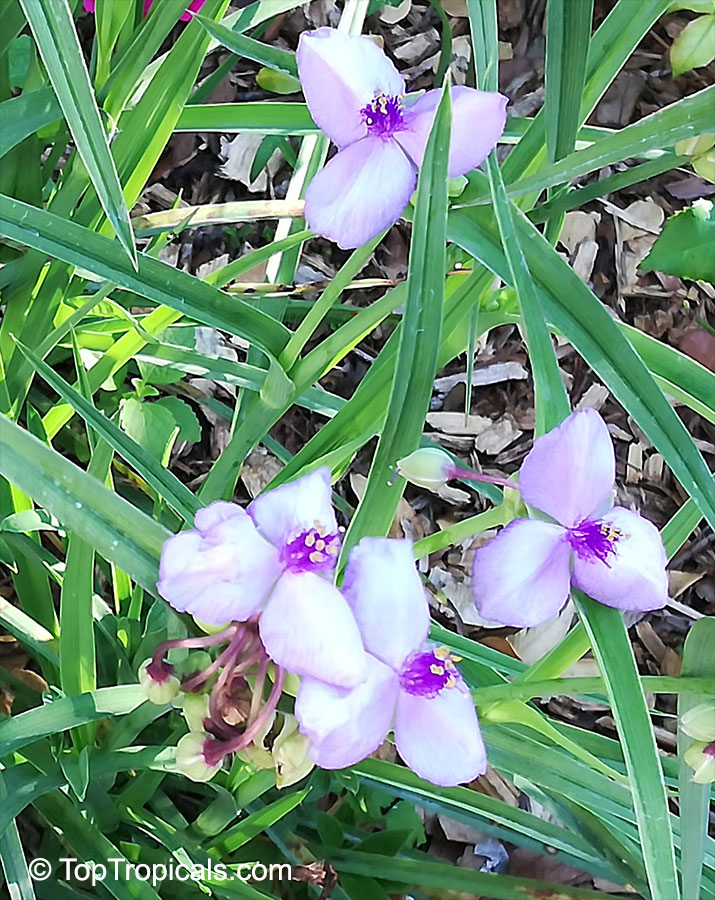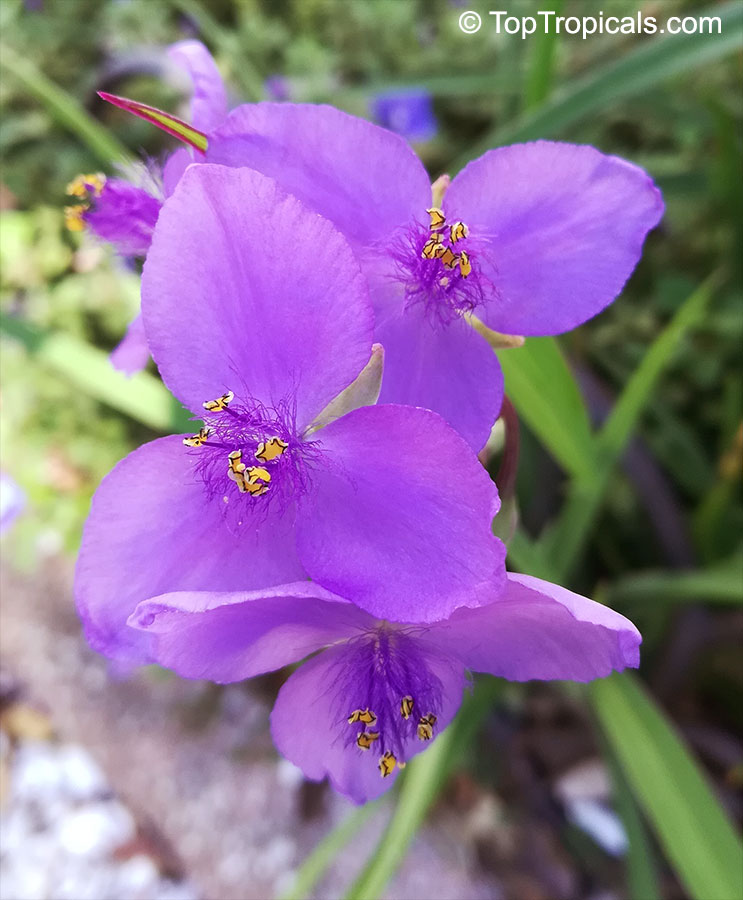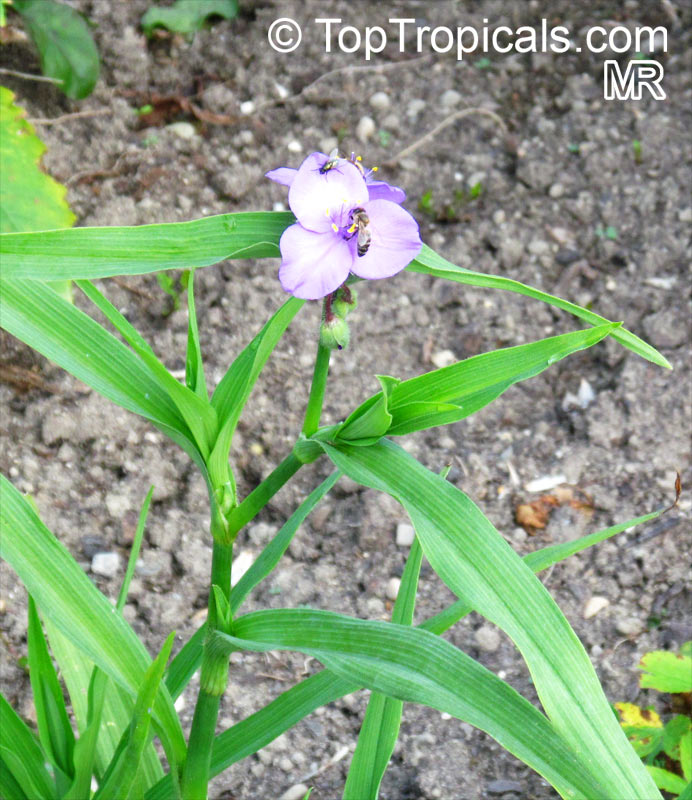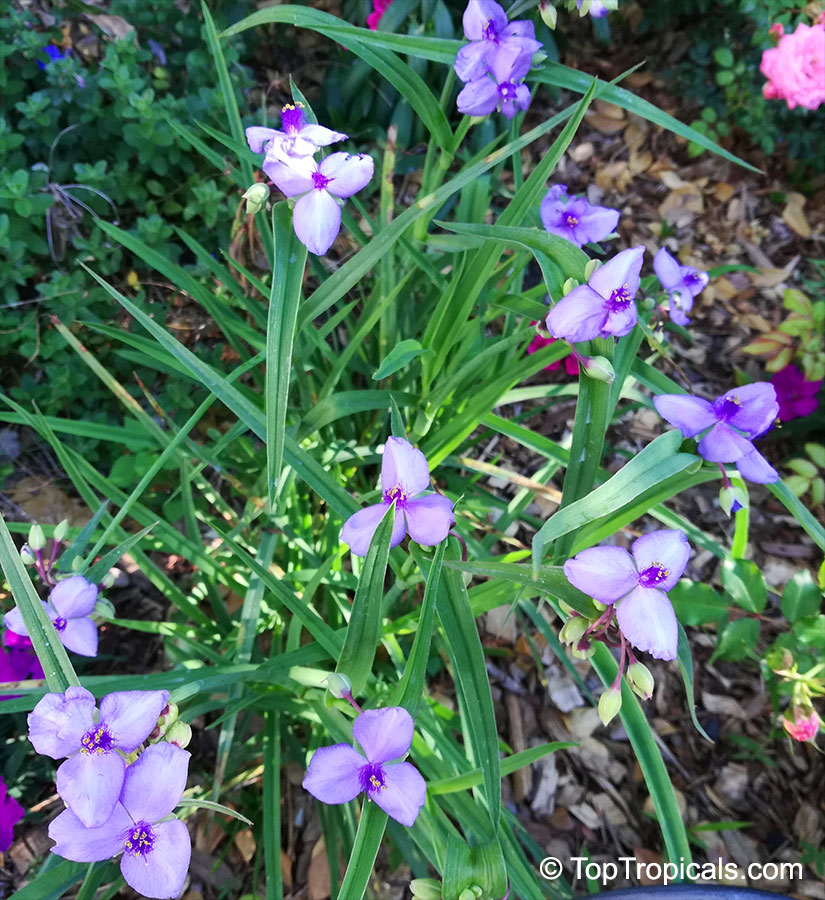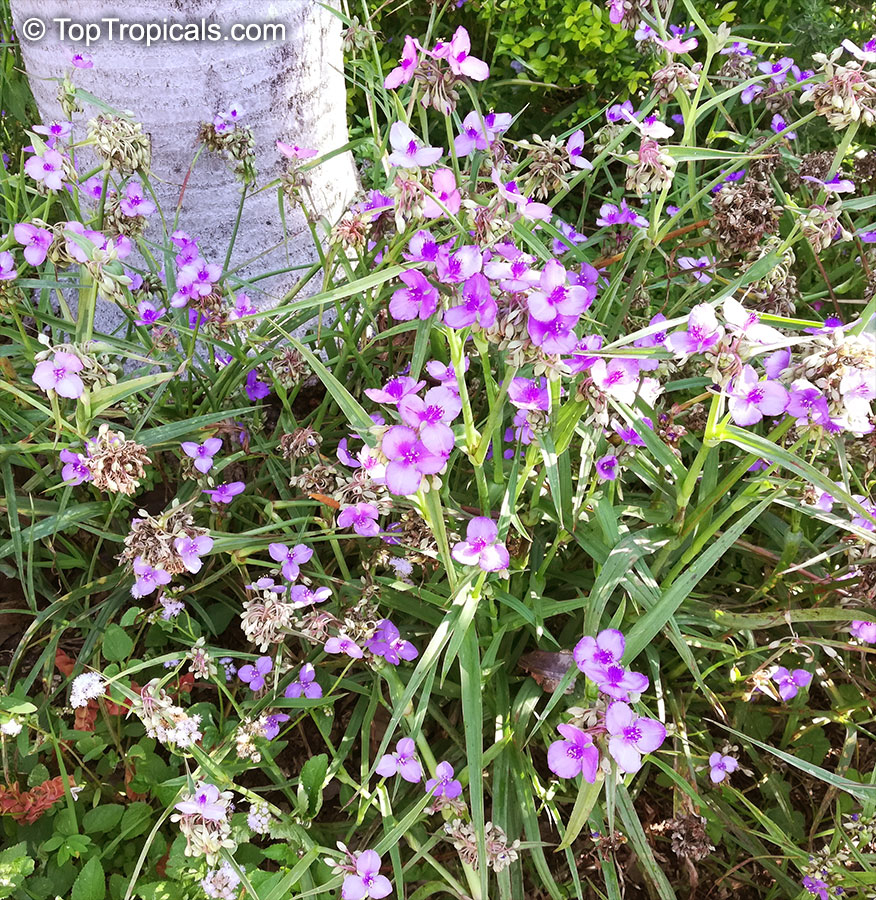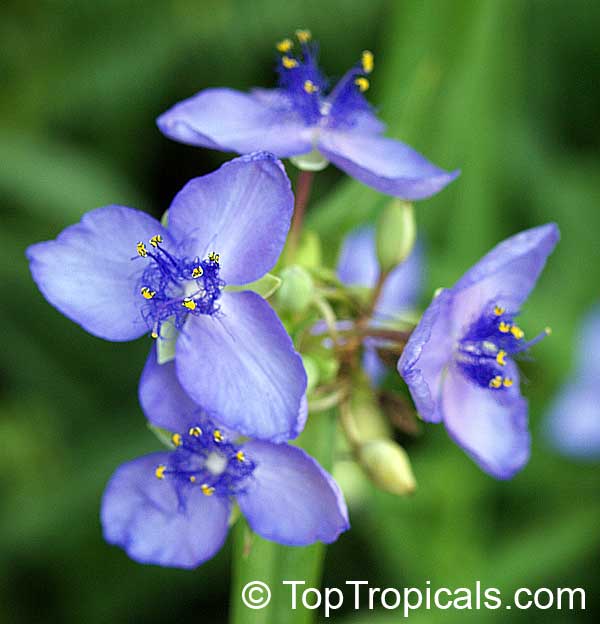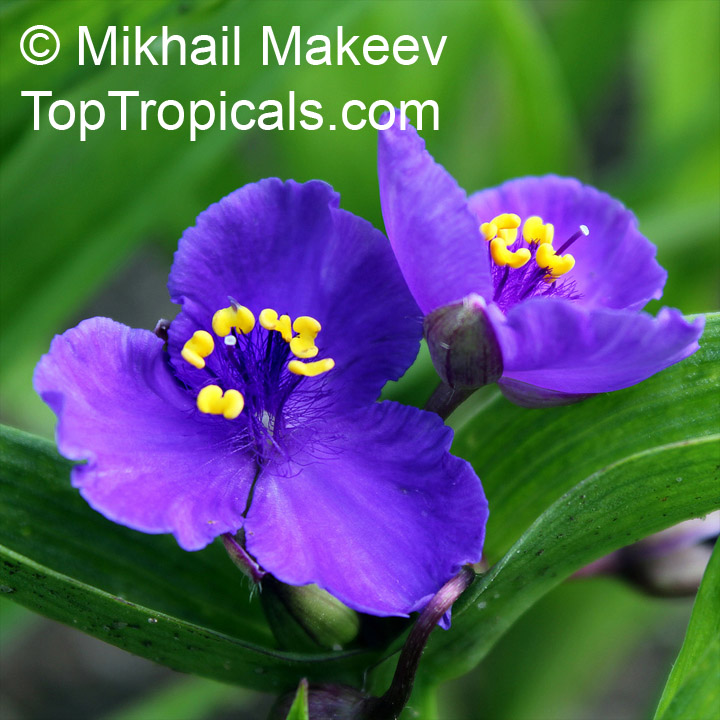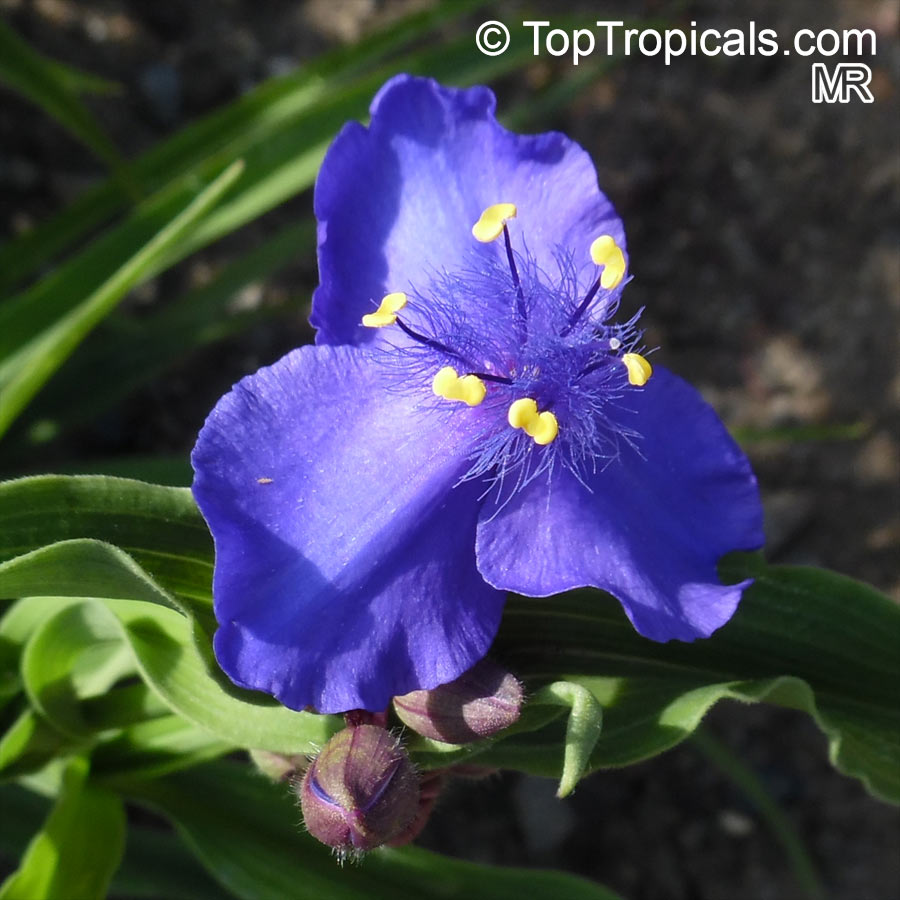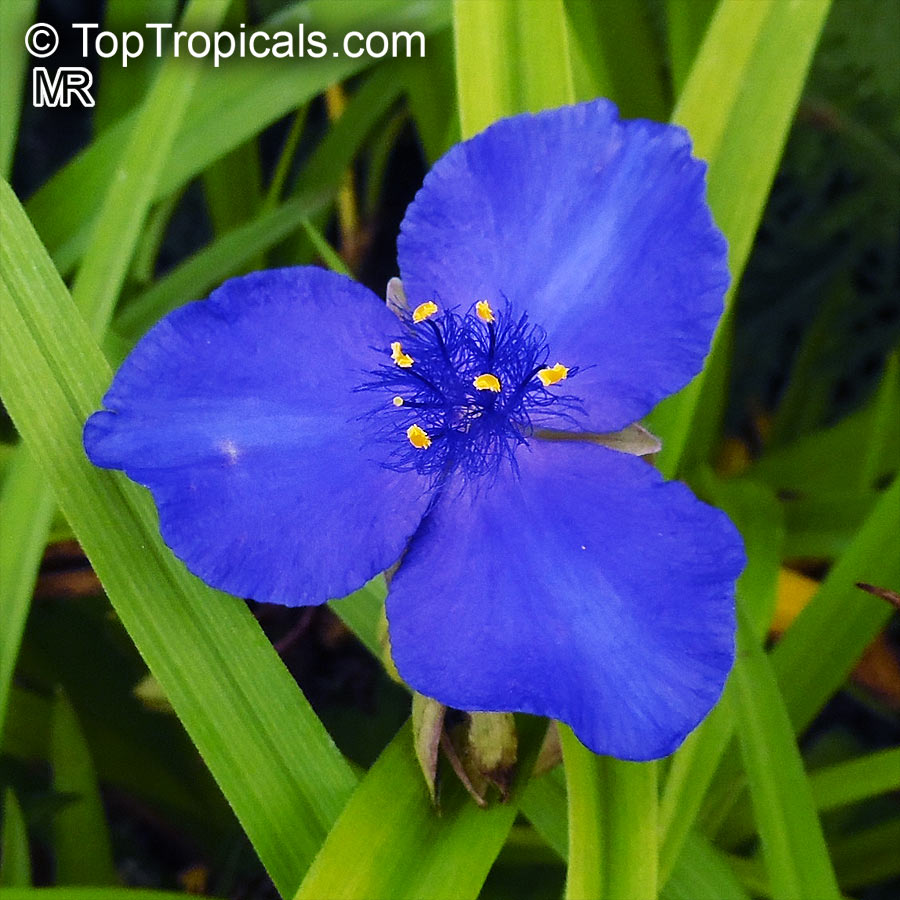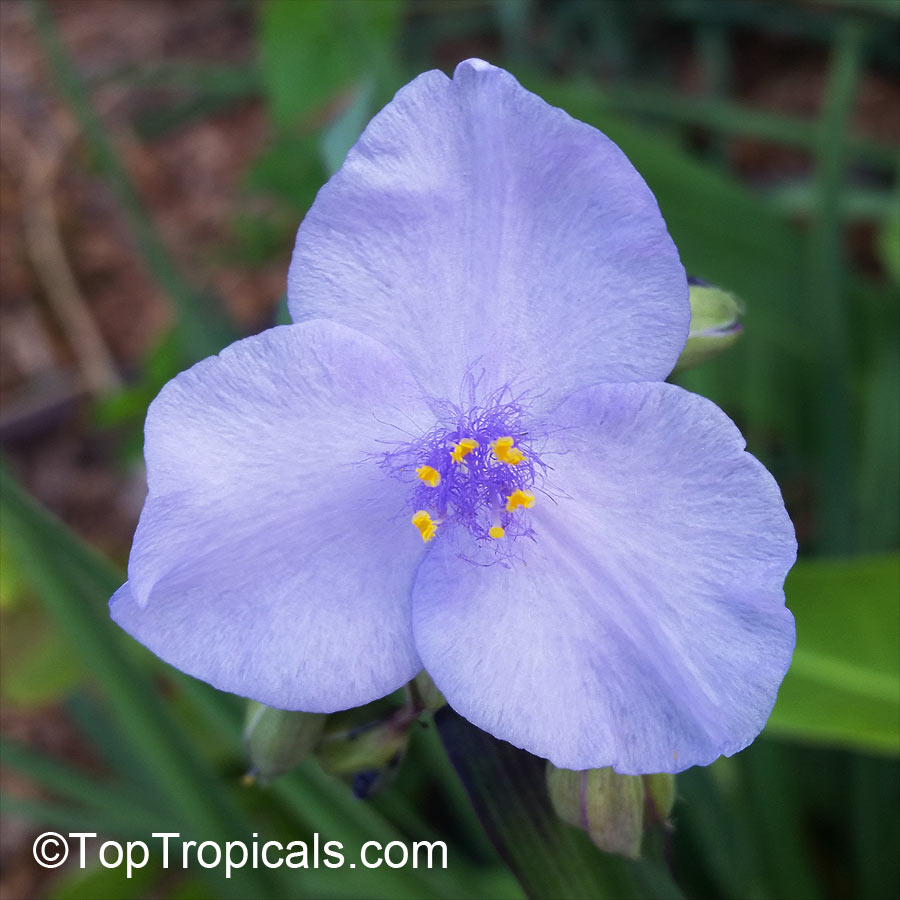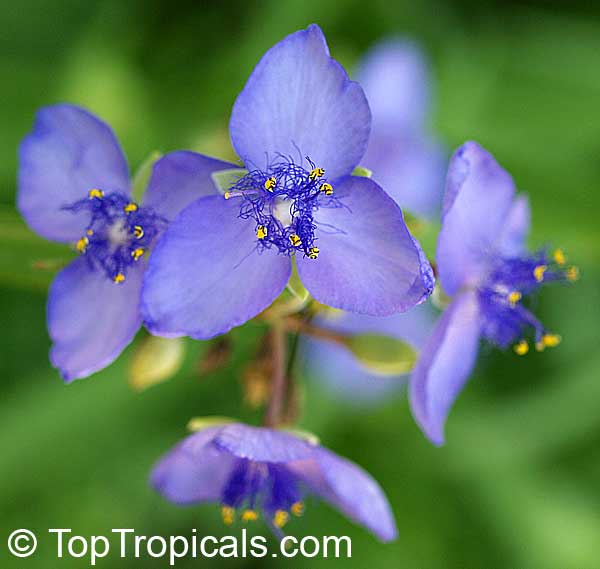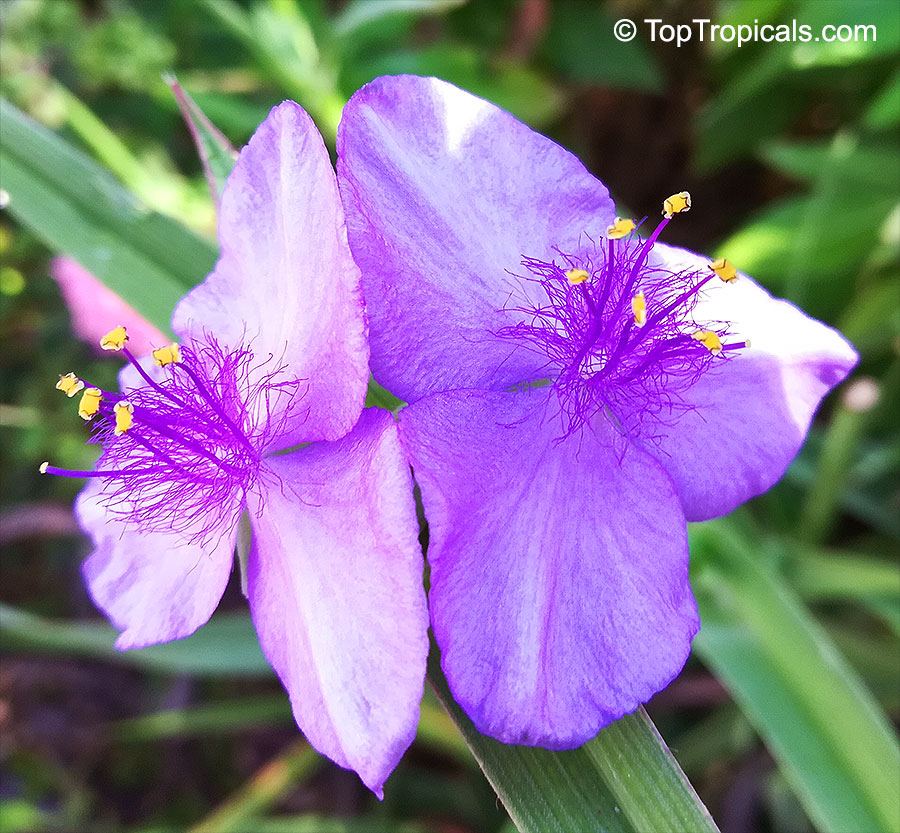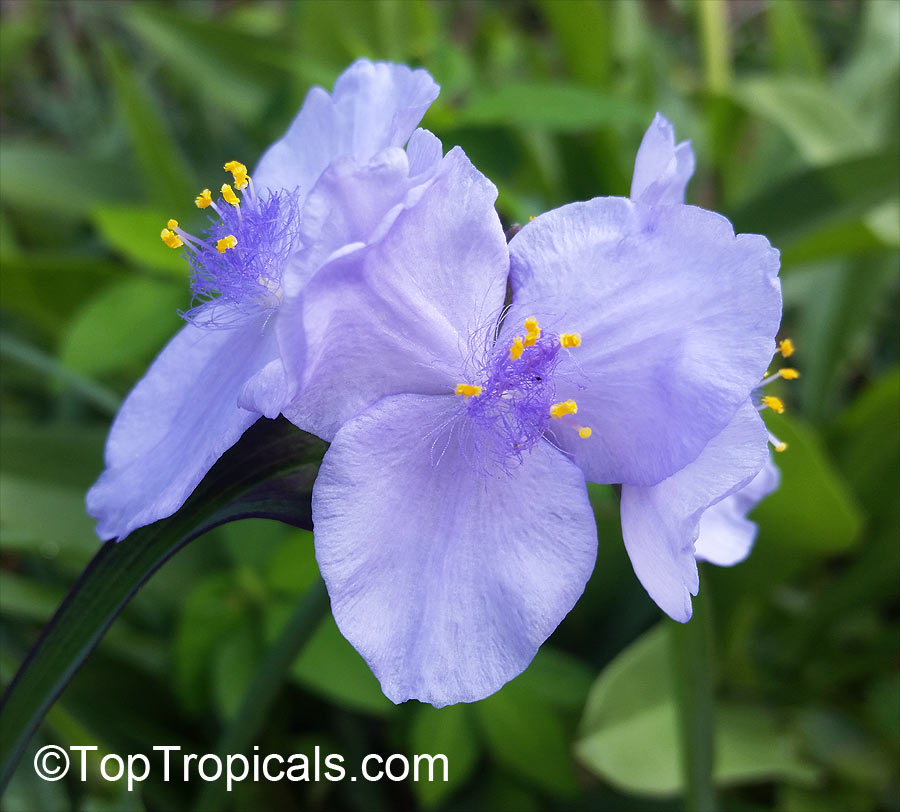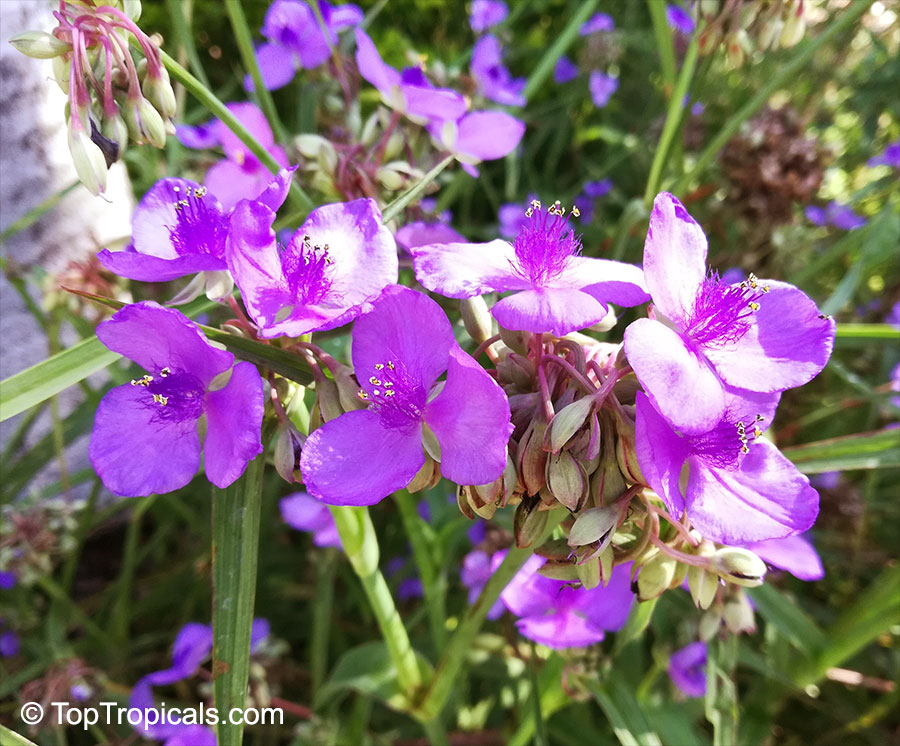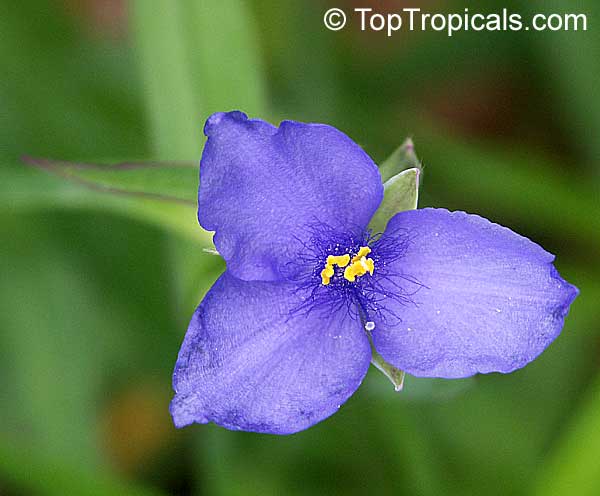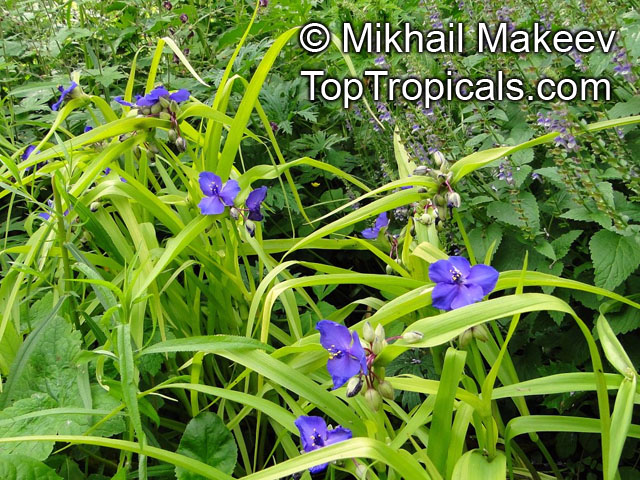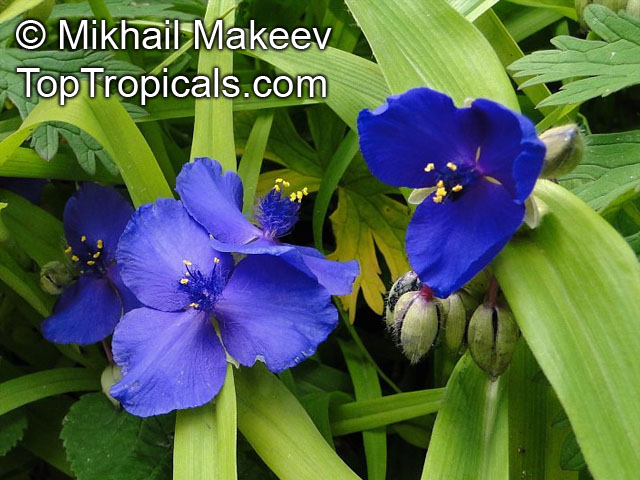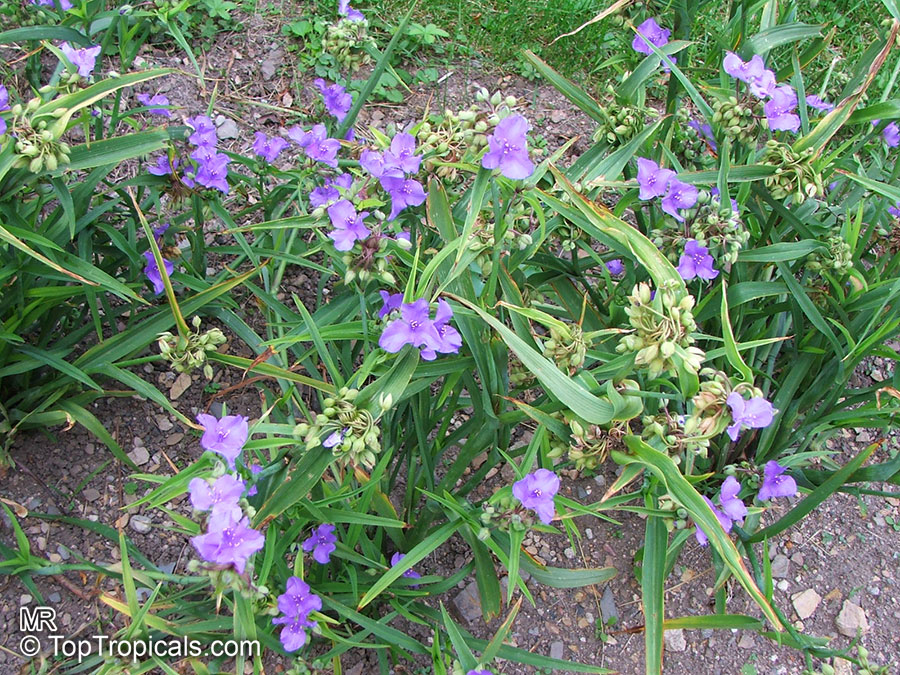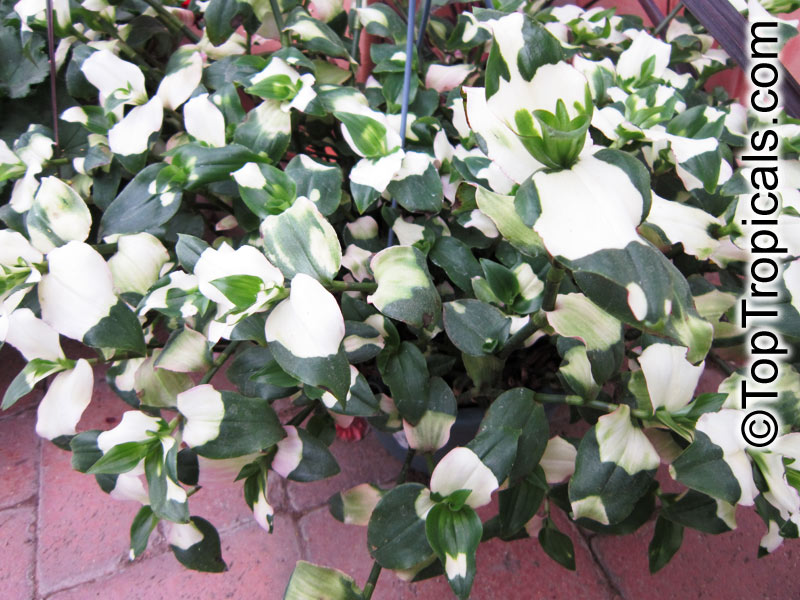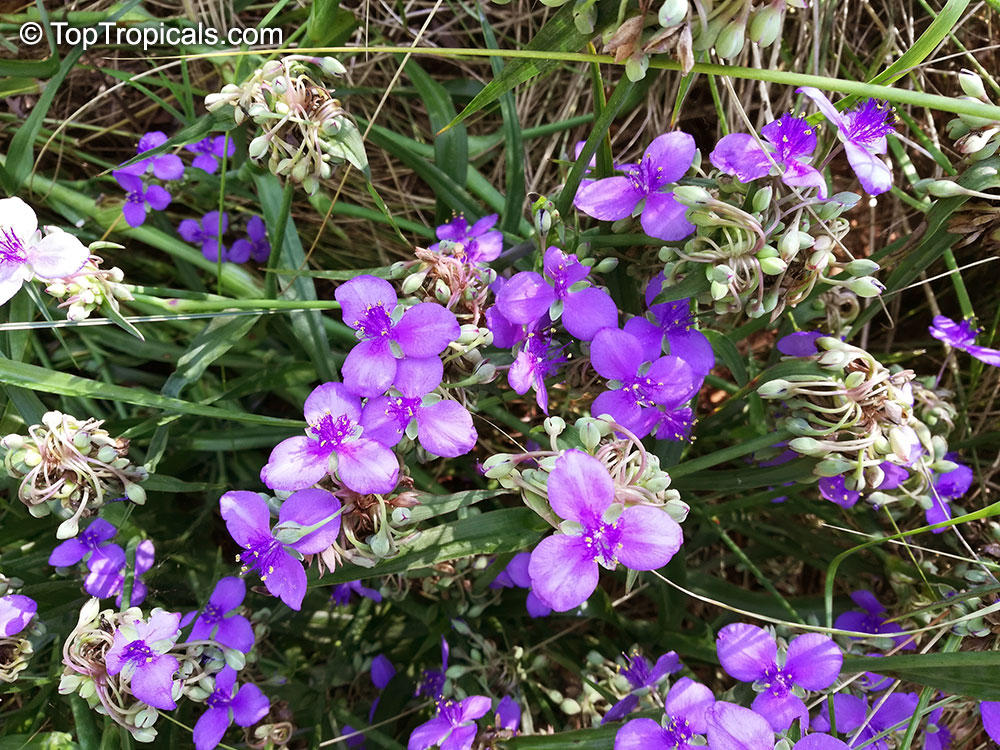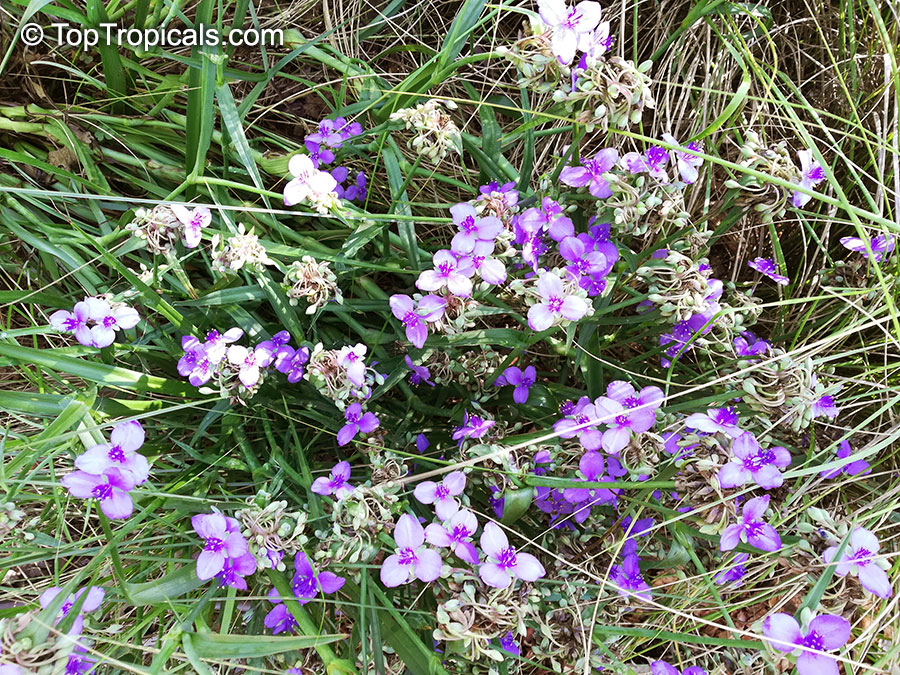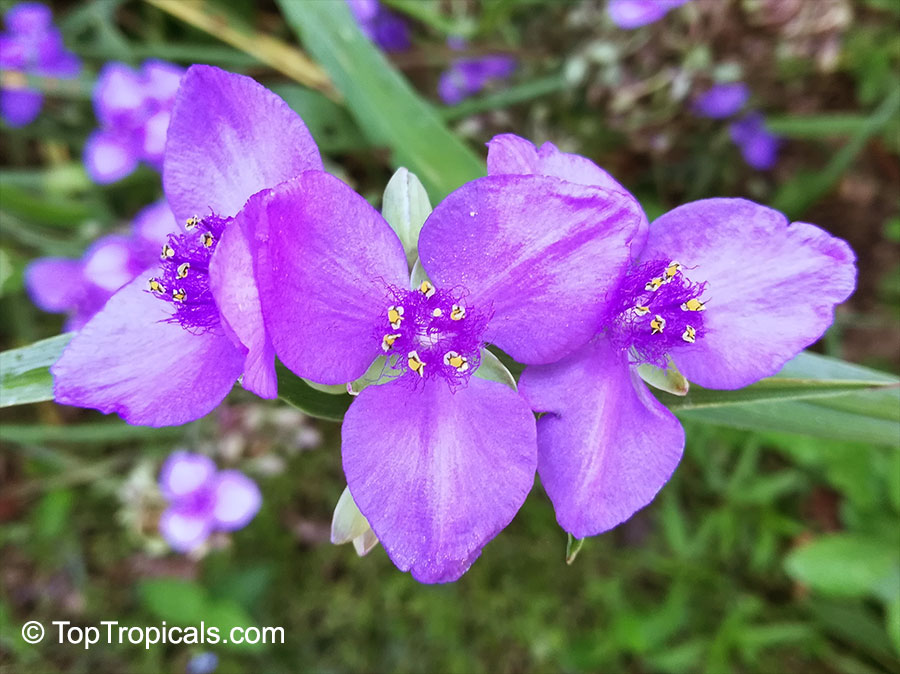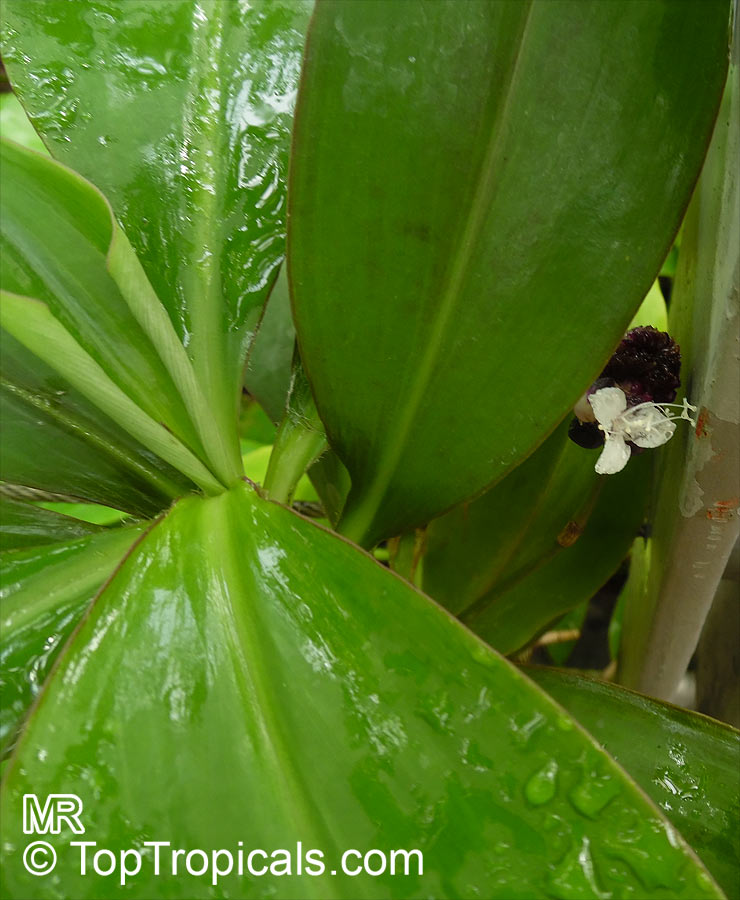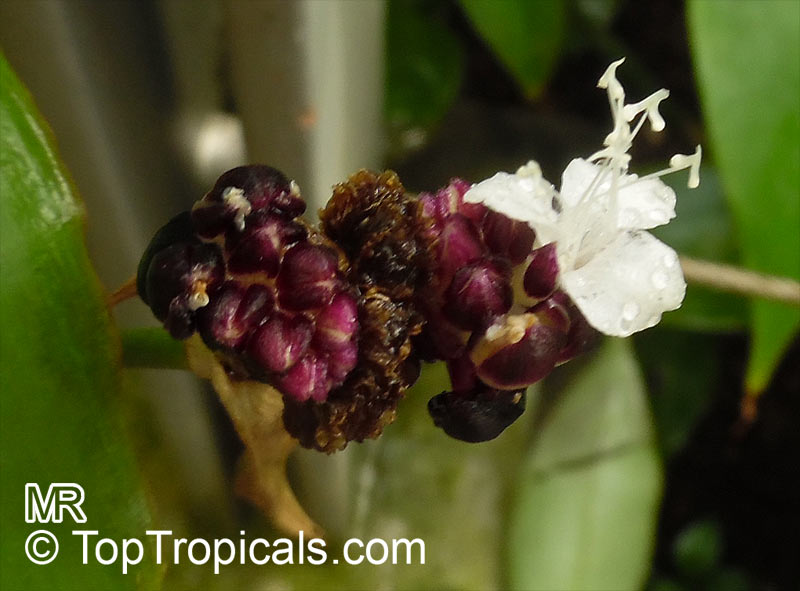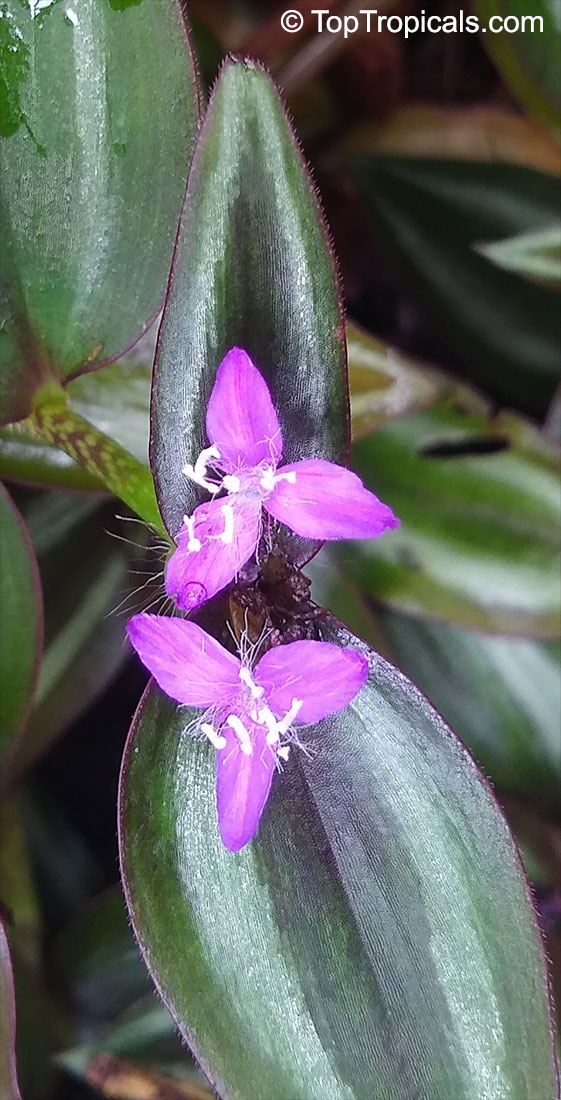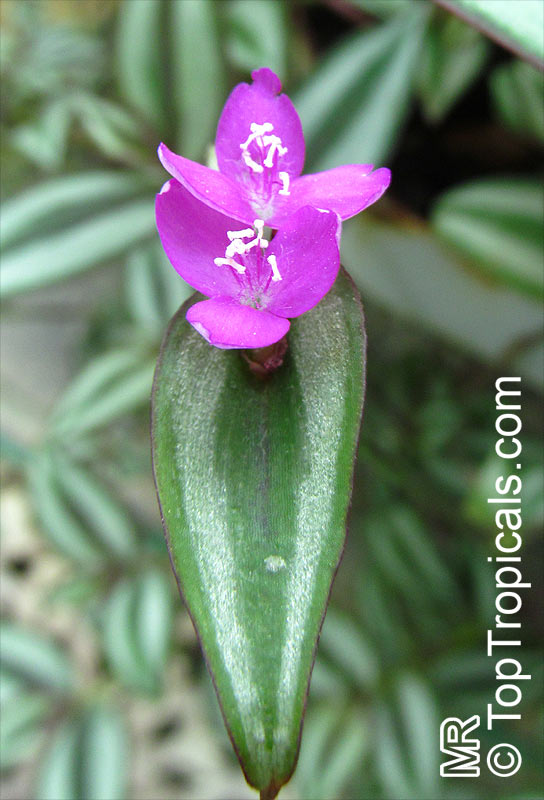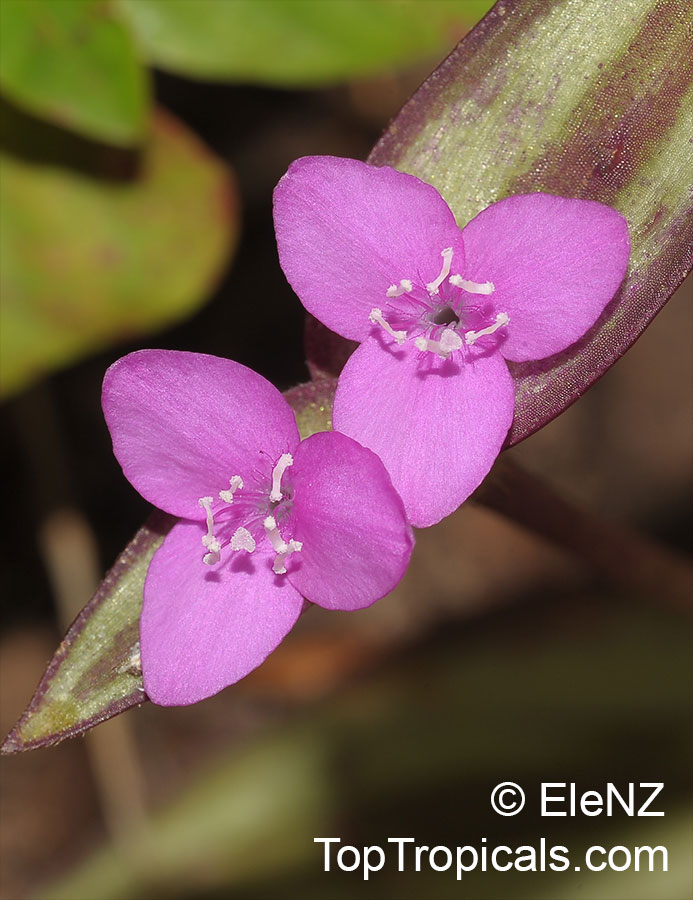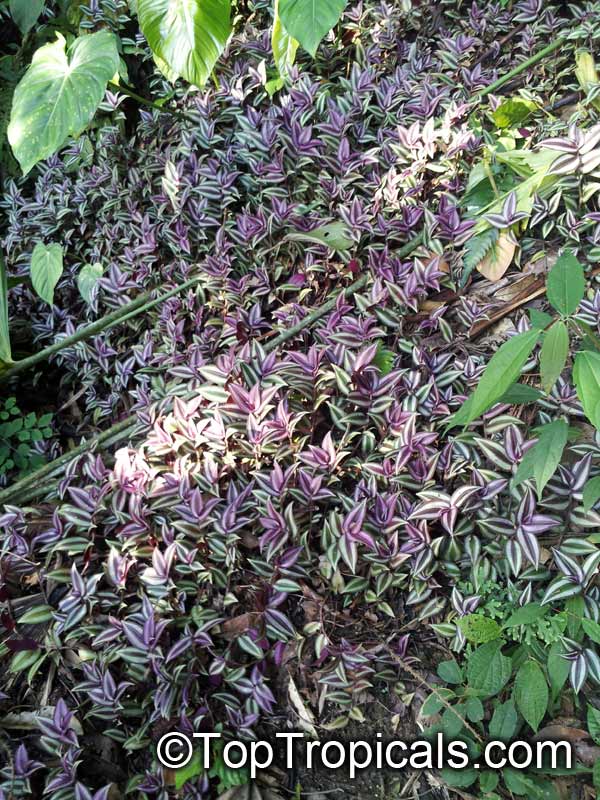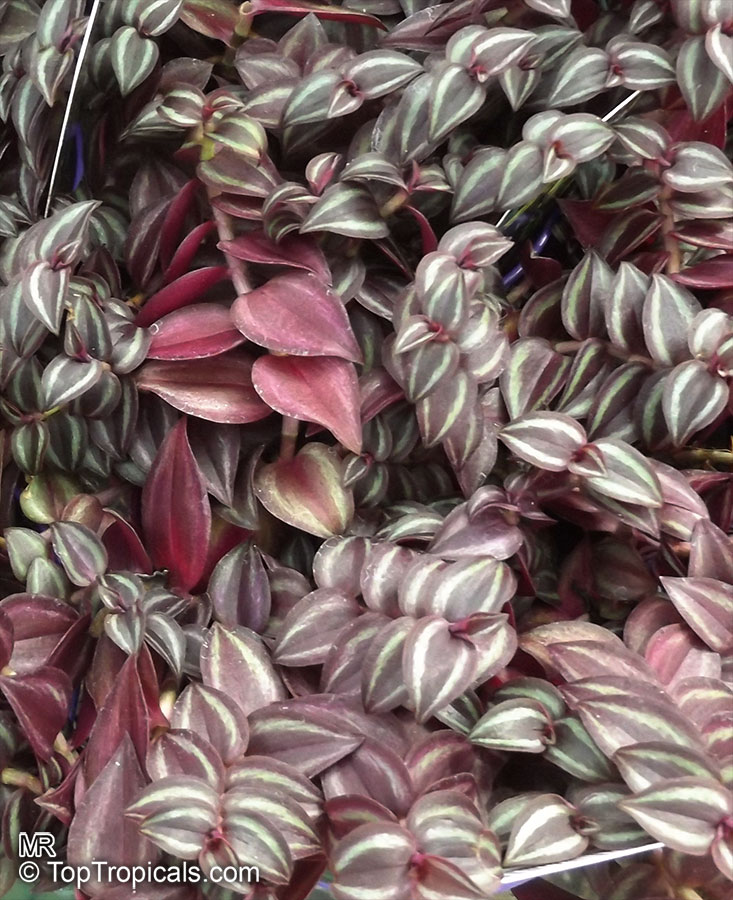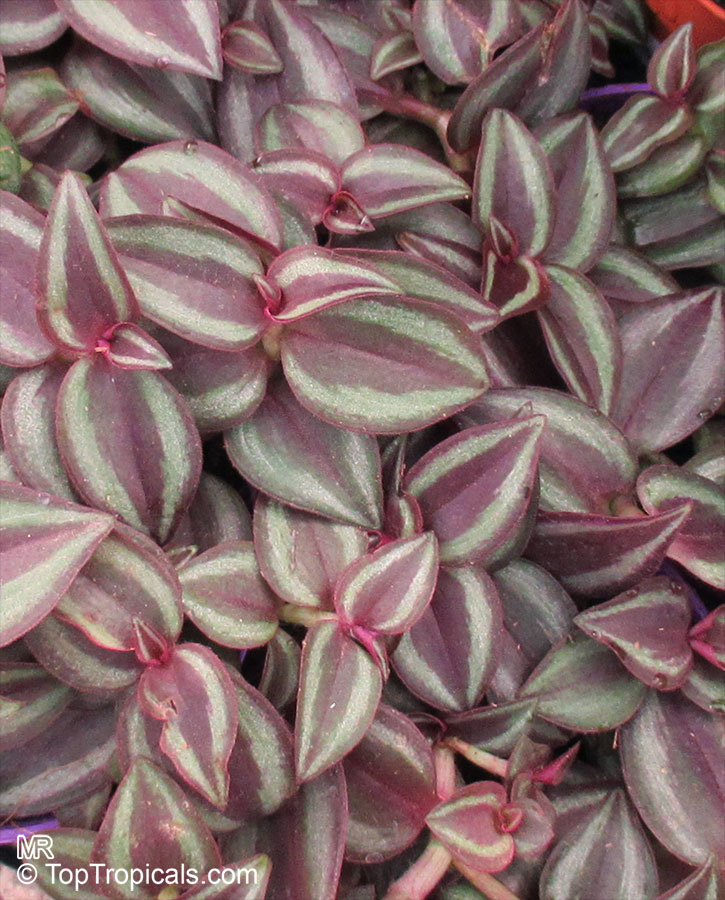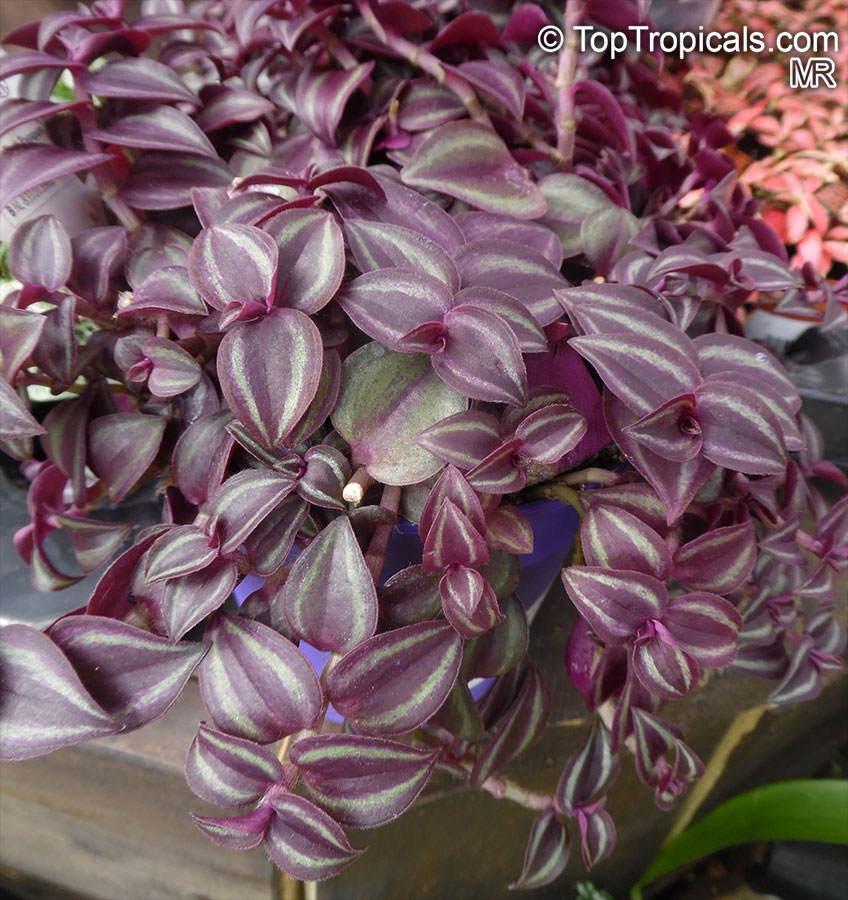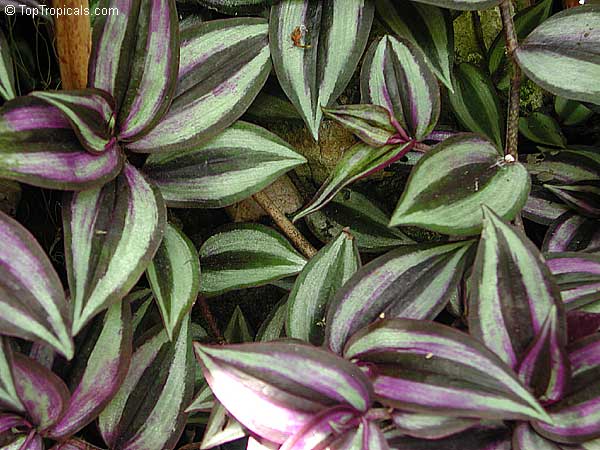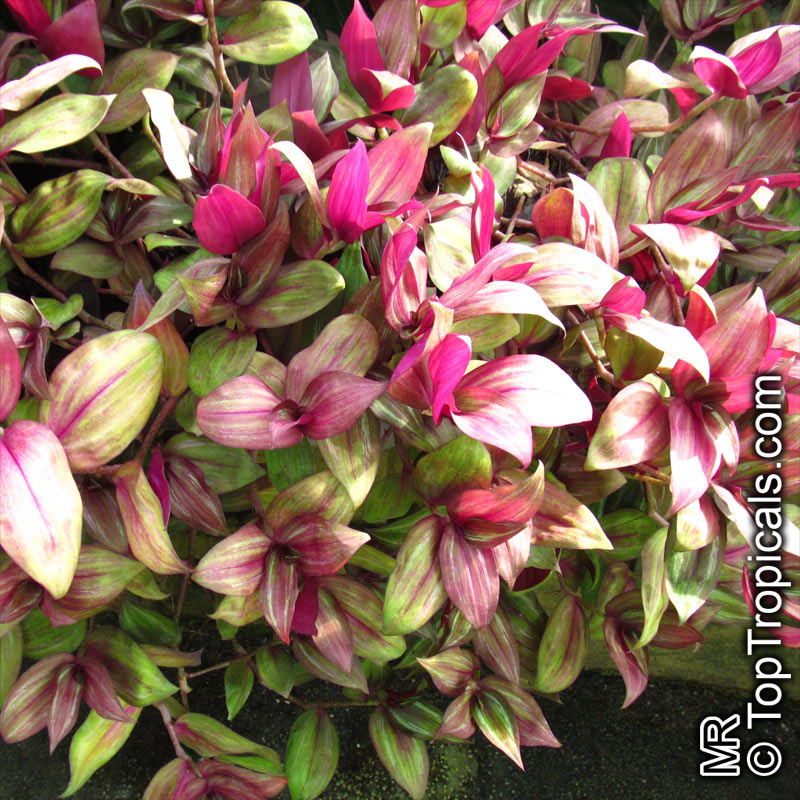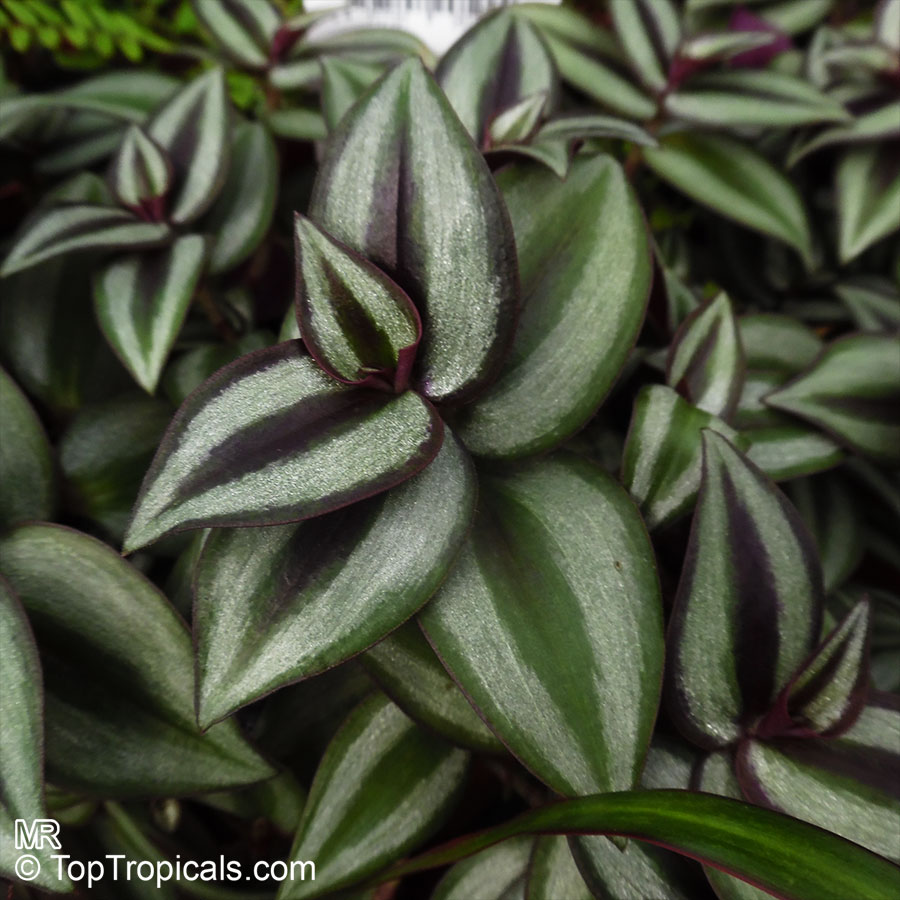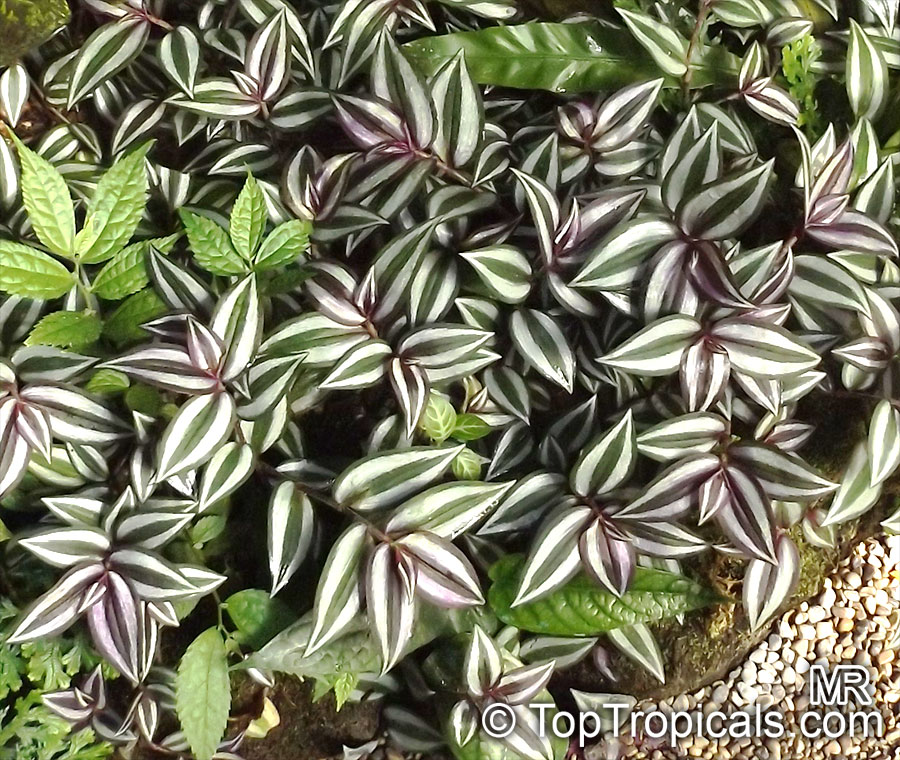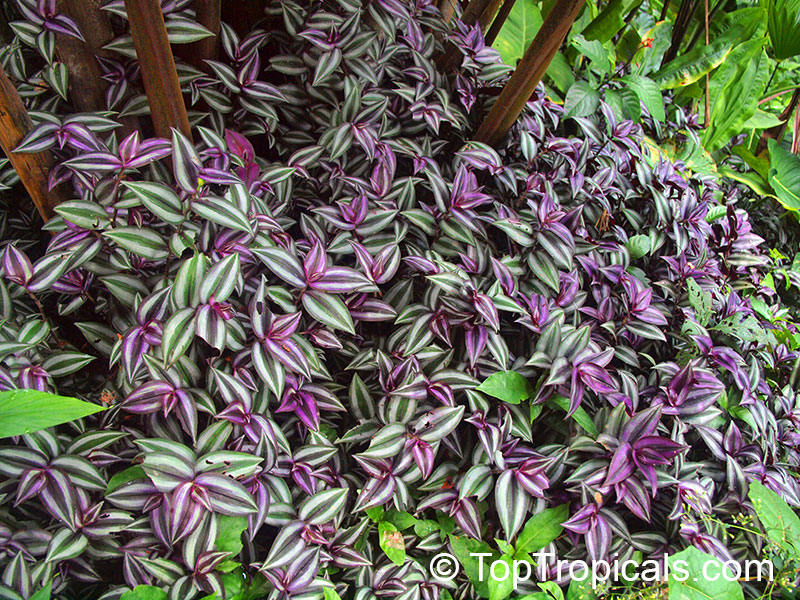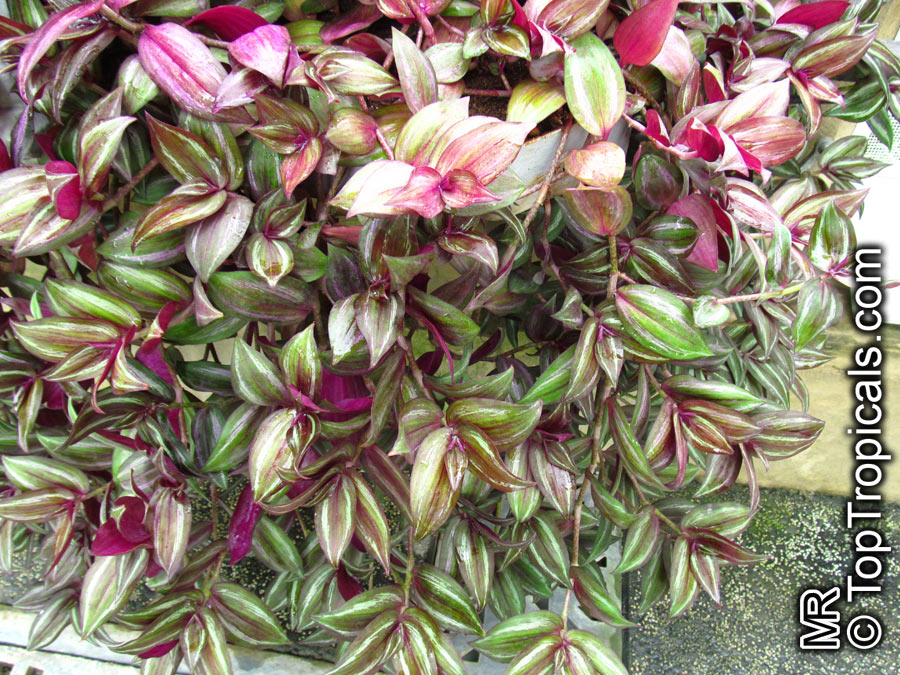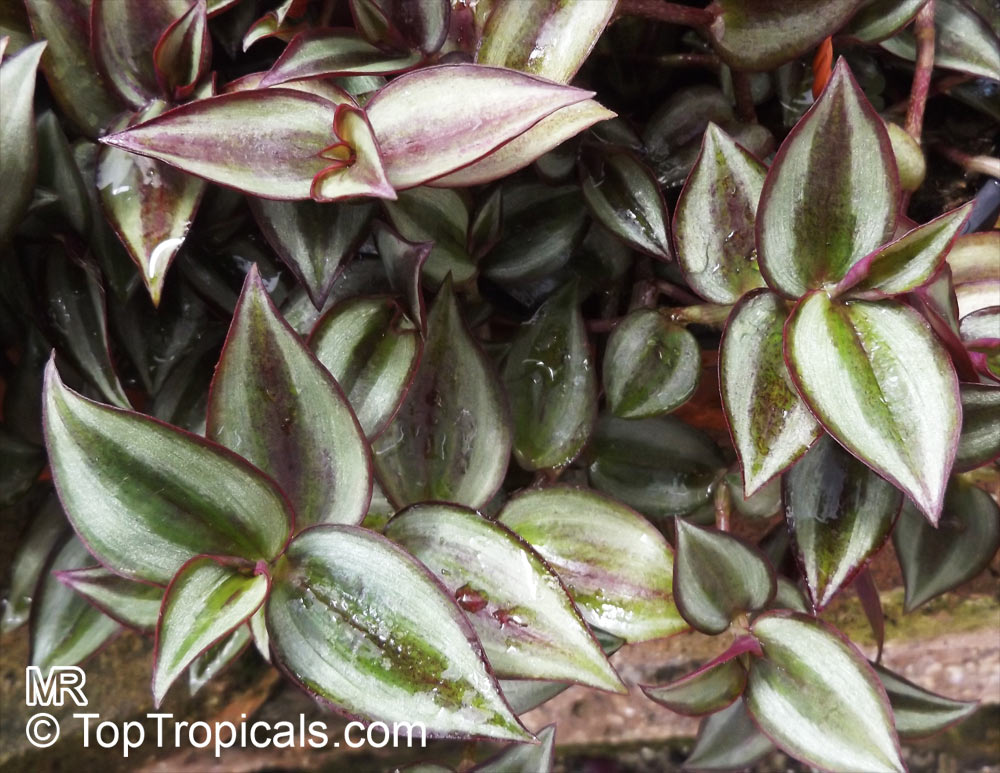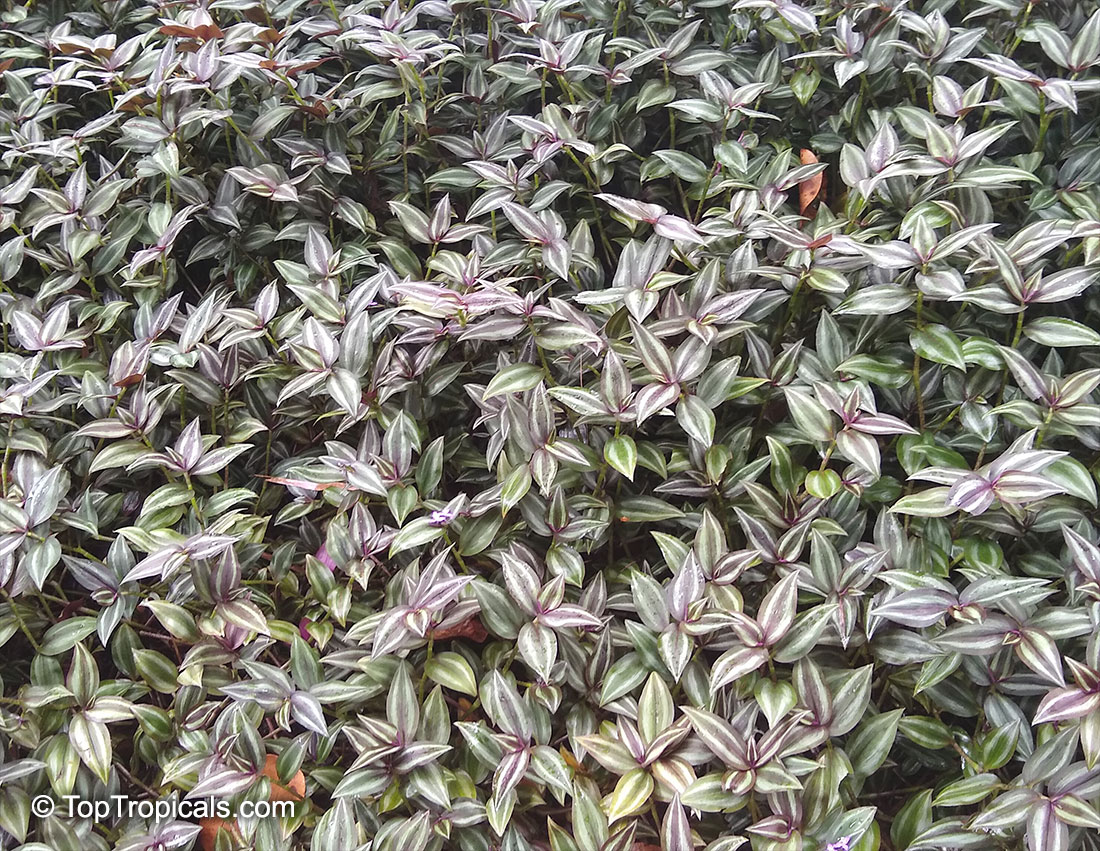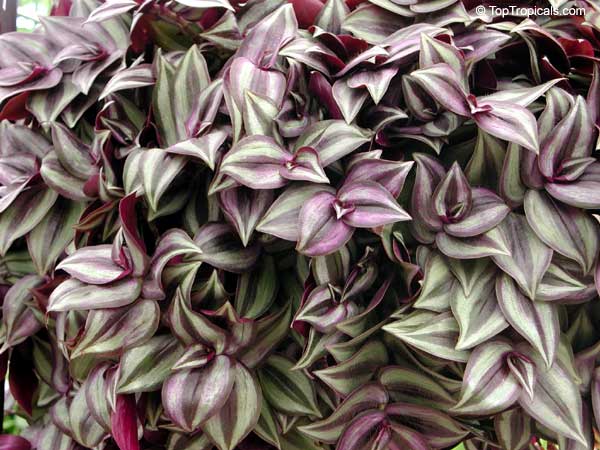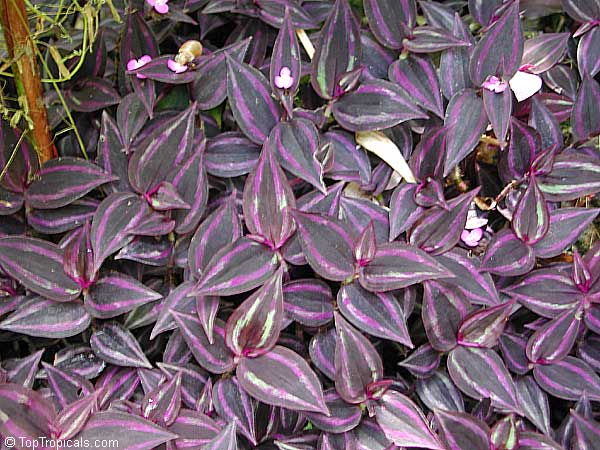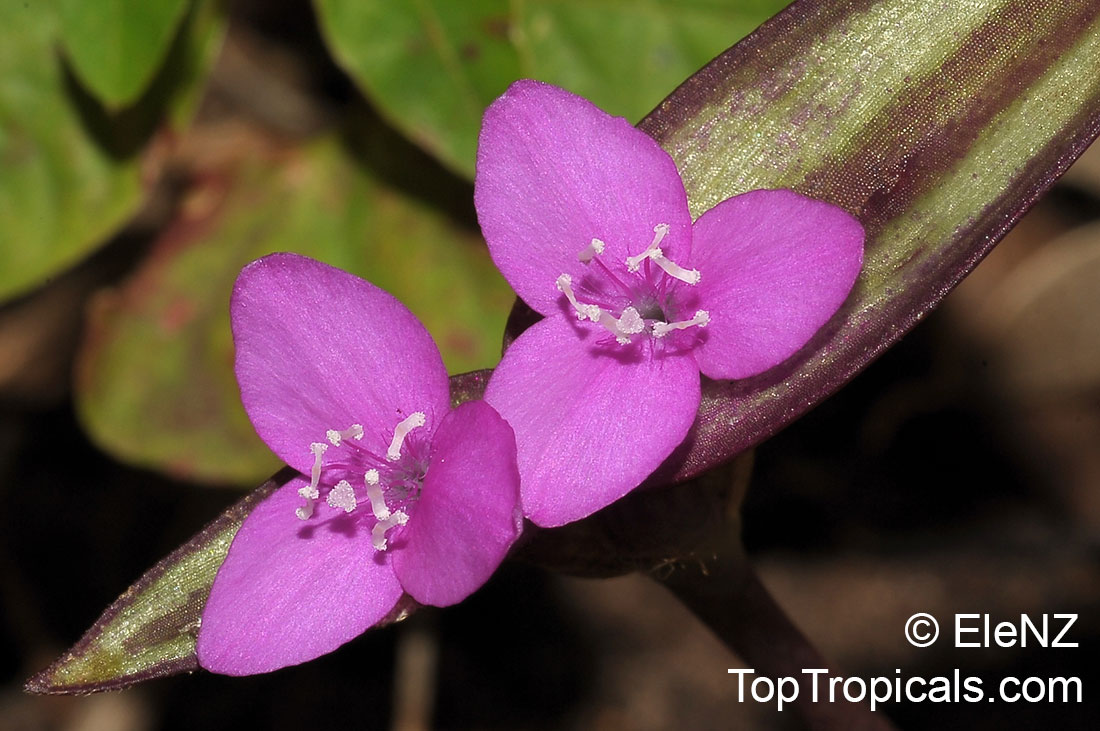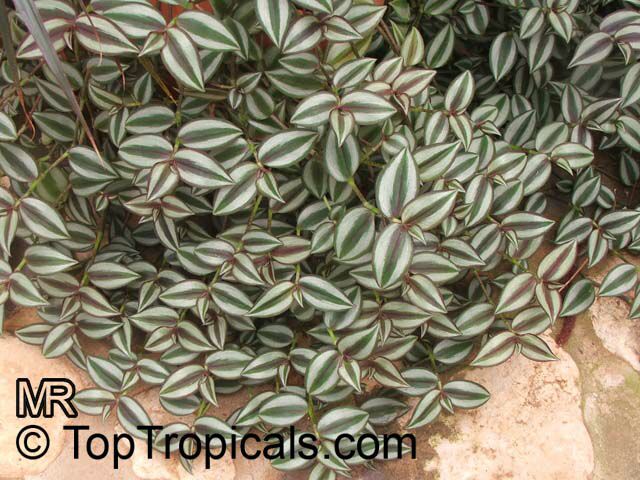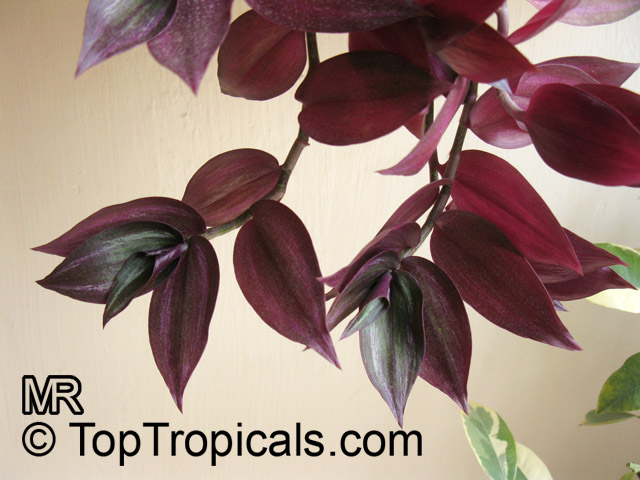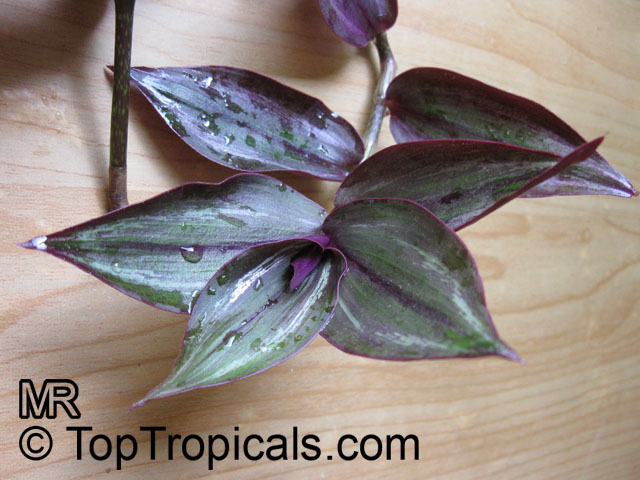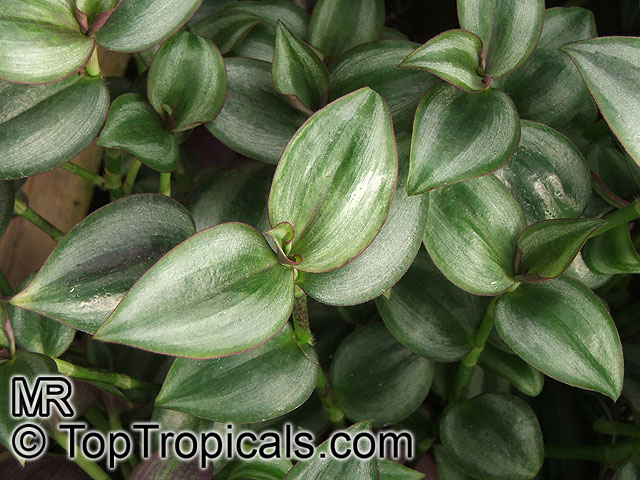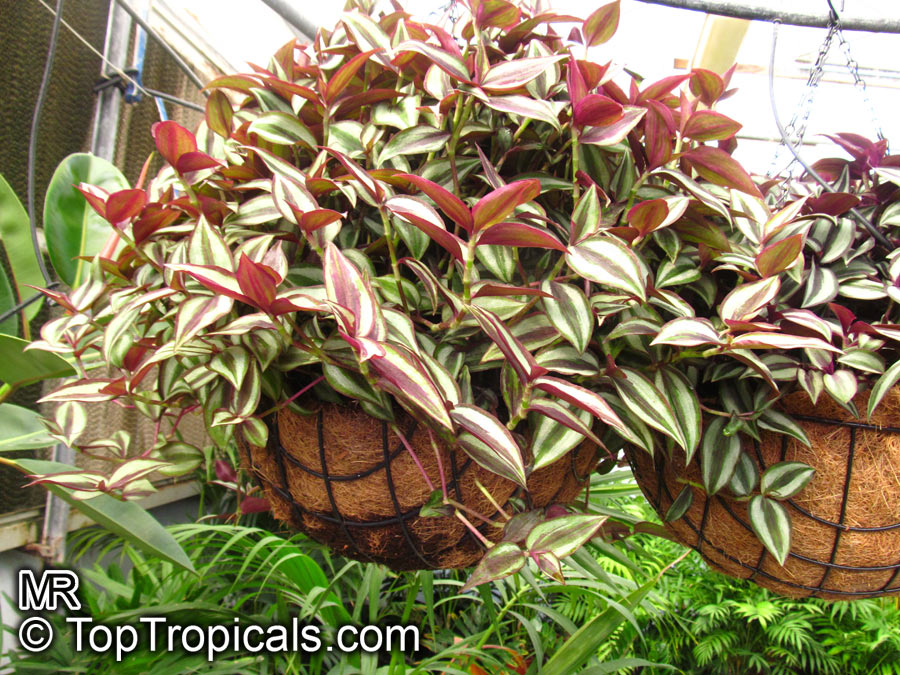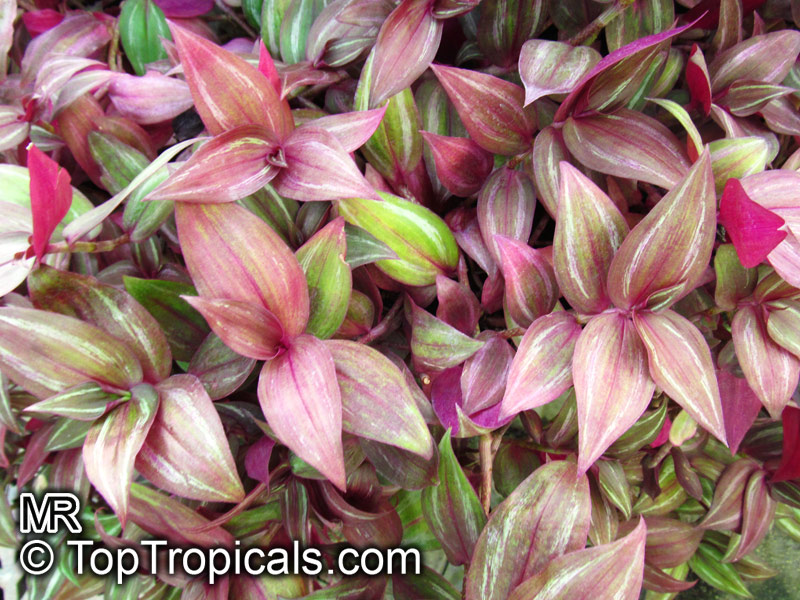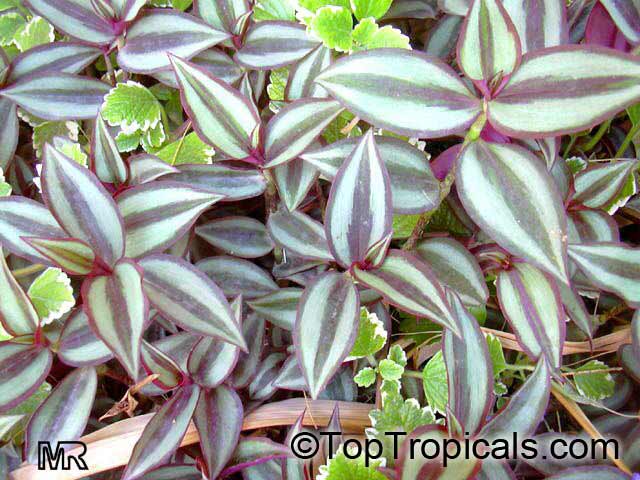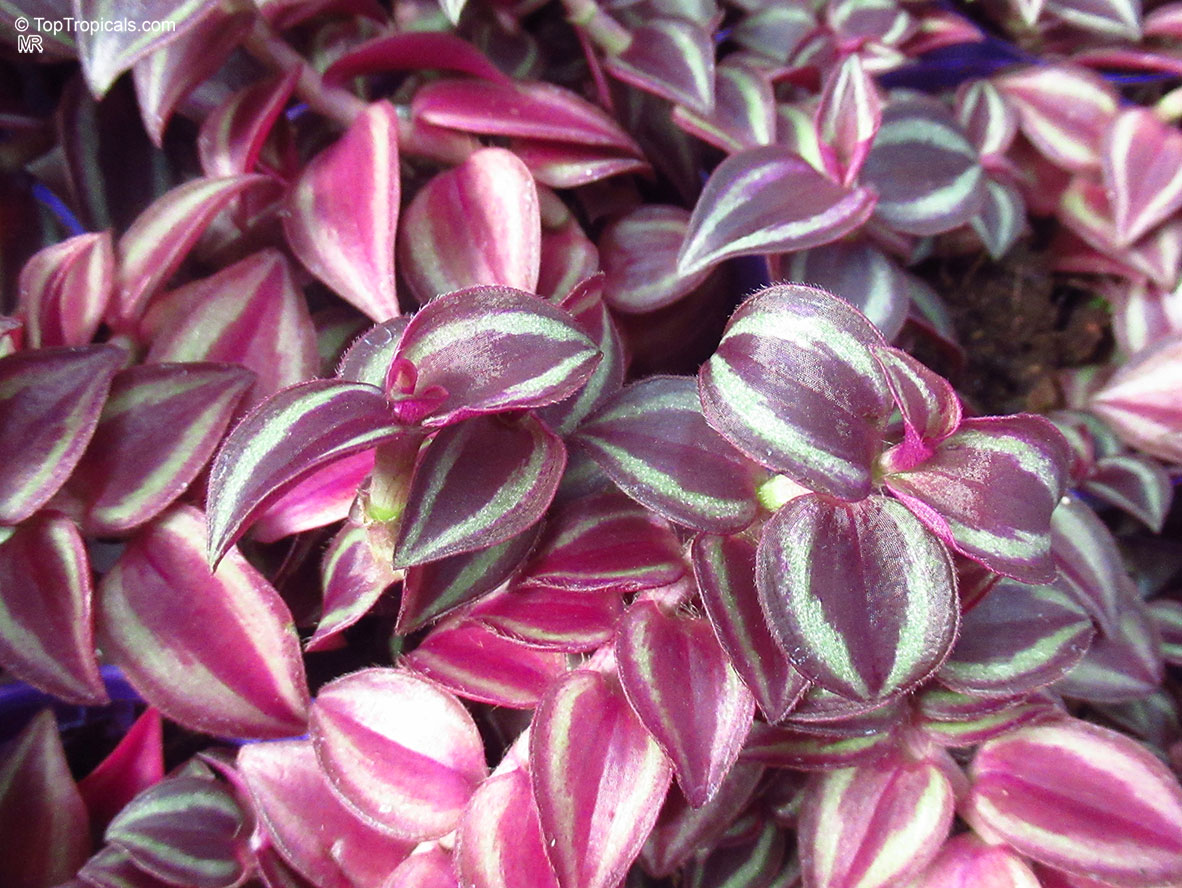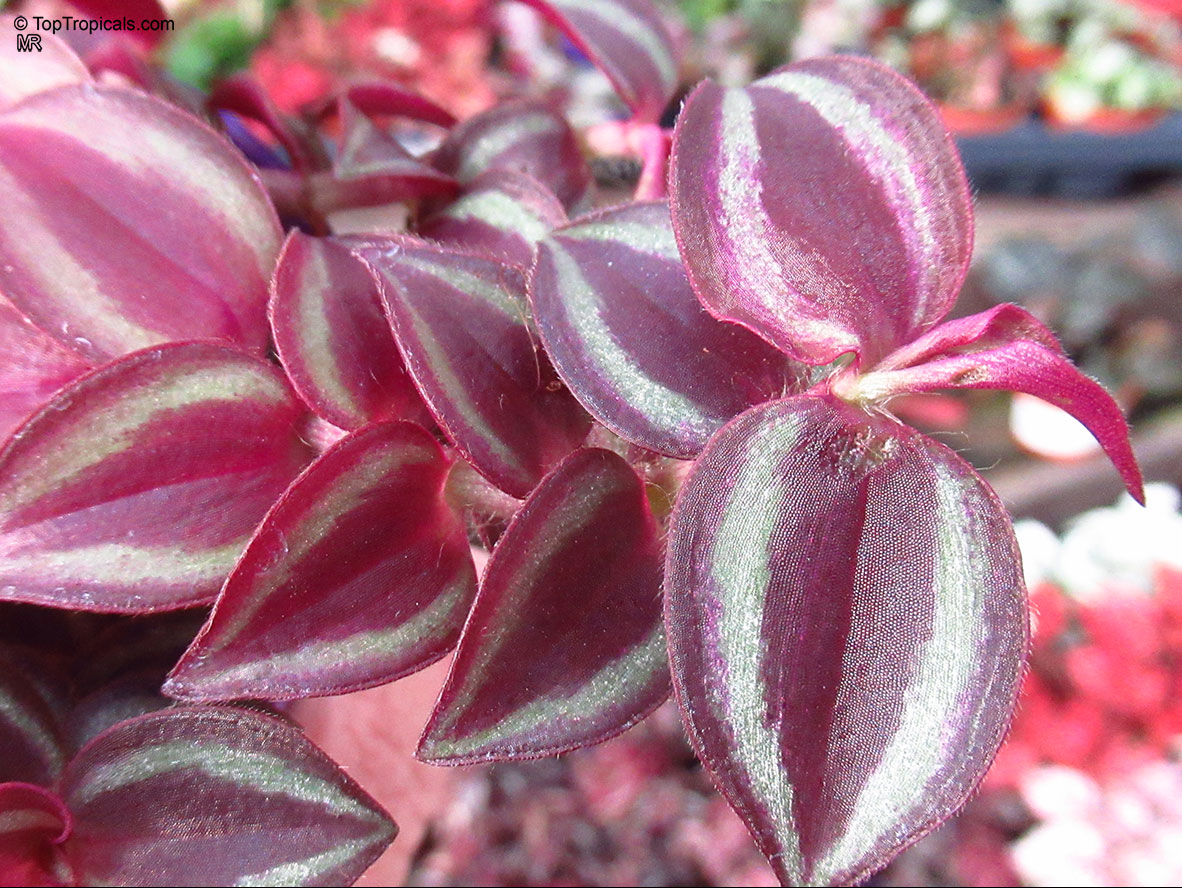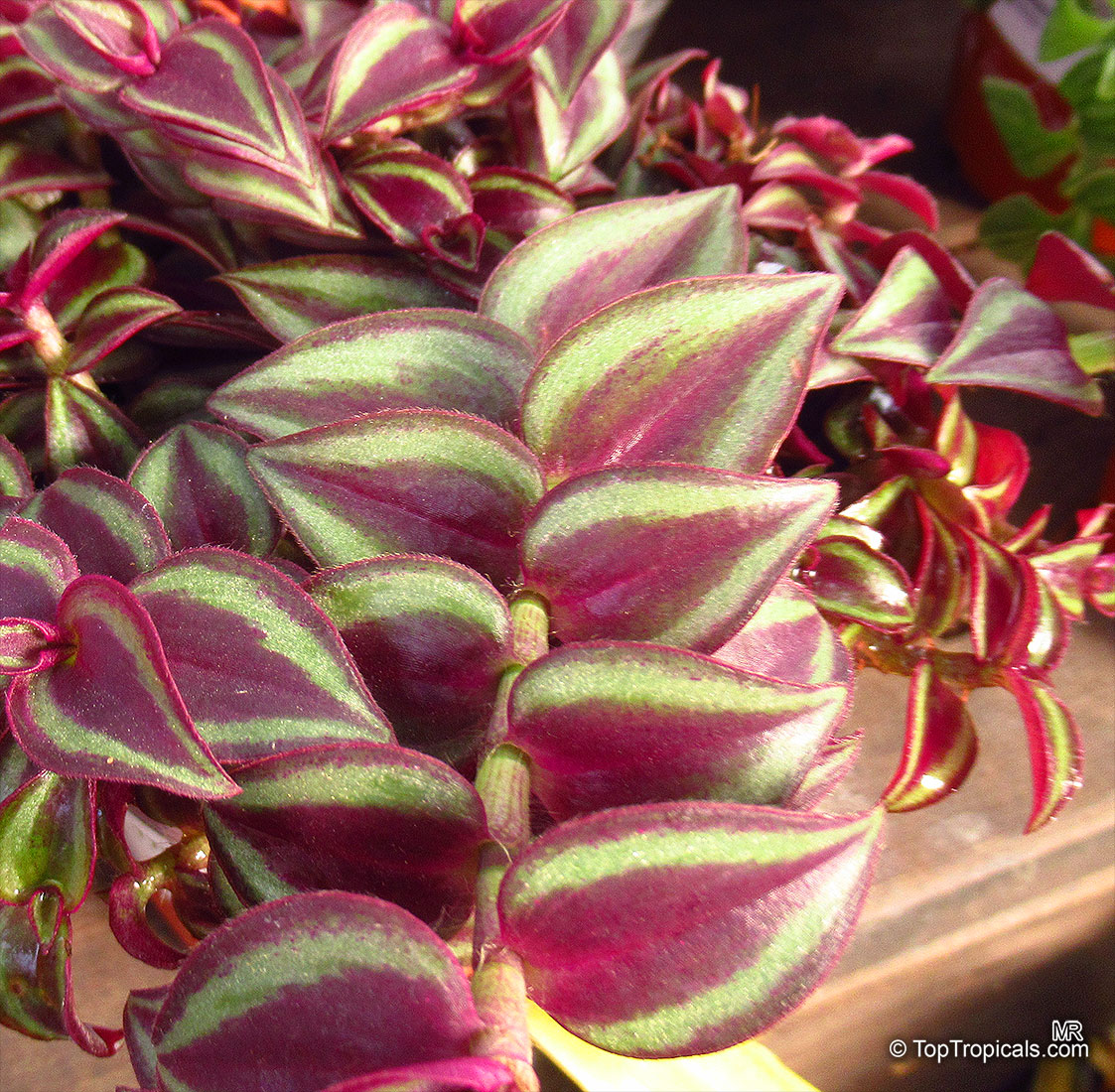Tradescantia - Search results
Top Tropicals Plant Encyclopedia
| Number of plants found: 11 | Next | 
|
Go to page: | 1 | 2 |
Botanical names: Cyanotis somaliensis, Tradescantia somaliensis
Common names: Furry Kittens, Pussy Ears
Family: Commelinaceae
Origin: Eastern Africa, Rwanda, Somalia





Cyanotis somaliensis (Furry Kittens), a plant native to Eastern Africa, Rwanda, Somalia, is an evergreen perennial related to Tradescantia. It is known for its tolerance to dry conditions, bright blue or lavender-purple flowers and most notably, densely ranked, lance-shaped leaves that are almost hidden by the hairy trail of its stems. It can be grown in USDA Zone 10-11.
Cyanotis somaliensis is an easy and forgiving plant to grow requiring little effort in terms ofplant care. It is best suited for a brightly lit spot away from direct sunlight and for the pot to be in semi-shade conditions. Compost should be kept moist at all time, and the plant should be misted regularly for optimal growth. When it comes to watering, liberally from spring to autumn and sparingly in winter. When it comes to propagation, cuttings can be taken from the stems.
Cyanotis somaliensis' growth varies depending on climate, such that in warm regions, it can be a groundcover, reaching low-growing of 2ft, while in colder regions, it may take the form of a small shrub, reaching 2-5 ft. With this said, when planting in cold regions, in addition to the care previously mentioned, some extra protection may be needed, such as mulching and additional layers for the pot when temperatures drop to make sure the plant receives enough warmth.
Botanical names: Tradescantia albiflora, Tradescantia fluminensis
Common names: Inch Plant, White-Flowered Wandering Jew
Family: Commelinaceae











Tradescantia albiflora (Inch Plant) is a low-growing and evergreen vine or creeper that can easily reach 2 feet in length. This plant features beautiful ornamental foliage consisting of tiny, succulent oval leaves from 0.5 to 1 inch in length. Depending on the light condition, its leaves are mostly green or purple. In the full sun, its leaves become green-grayish in color. And in the shade, they will exhibit more purple hues. It produces small white or off-white flowers that makes it an attractive addition to any garden.
When growing Tradescantia albiflora, it needs regular water and an average amount of water during its growing season. It can also tolerate moderate water if irrigation is delayed. For colder regions, it's best to grow this plant in pots, as it is not cold tolerant. It is grown in the USDA Zone 9-11, but can survive with regular care.
Tradescantia albiflora is a salt tolerant plant and can be grown near the seaside. It is perfect for adding texture and dimension to garden beds and edges, as a low-growing ground cover or as a hanging basket plant. It can also be used as a filler between stepping stones and pathways. When handling this plant, be careful as it can cause irritation to the skin.
Botanical name: Tradescantia navicularis
Common name: Chain Plant
Family: Commelinaceae
Origin: Peru






Tradescantia navicularis (Chain Plant), native to Peru, is a low-growing evergreen succulent that forms a groundcover. It can reach heights of up to two feet when mature, and can easily be spread and transplanted due to its roots which form at the stem nodes. Its fine hairs and boat-shaped grey-green leaves make it an attractive, ornamental foliage that can create a unique texture in any garden or landscape.
This plant is well suited to a wide range of climates and growing conditions, however it thrives best in humid and semi-shaded environments. Tradescantia navicularis requires moderate levels of water and is drought tolerant, making it easy to care for. It blooms pink flowers throughout the summer and autumn months, adding a unique charm to this small shrub which typically reaches a height of two to five feet.
It grows well in USDA Zones 9-11. Growing Tradescantia navicularis in cold regions usually require planting it in a pot, since it is not cold hardy. This will also make it easier for you to move the plant indoors if temperatures drop too low. Make sure to use an adequately sized pot and ensure the soil is moist but not over-saturated, too much water can cause root rot. It is best to provide the plant with a semi-shaded area, and to water it consistently throughout the spring and summer months. During the winter, reduce watering to every three weeks or so. With proper care, your Tradescantia navicularis will thrive and bring beautiful pink flowers and ornamental foliage to your garden.
Botanical names: Tradescantia pallida, Setcreasea pallida
Common names: Purple heart, Purple queen
Family: Commelinaceae
Origin: Louisiana, Florida, and Eastern Mexico







In its native habitats of Louisiana, Florida, and Eastern Mexico, Tradescantia pallida (Purple heart) is a low-growing, woody, semi-evergreen shrub growing up to two feet in height, forming a dense groundcover. Its ornamental foliage is deep purple in full sun and dark green in semi-shade. Its slight pink flowers are small but abundant, with each blooming only for one morning.
Under ideal growing conditions and regular watering with full sun, Tradescantia pallida is a fast-growing, easy-care perennial, suitable for USDA Hardiness Zones 9 to 11. It does best in light to moderate soils with plenty of organic material, with protection from harsh winds and salt spray.
Although Purple heart does not require much maintenance, it does need some special care when planted in colder regions or in pots. In areas which are too cold for Purple heart to thrive, gardeners should take the extra step of mulching and wrapping the plant to protect it from frost during the winter months. It should also be kept well-watered year-round and provided with regular fertilization in pots since the soil may quickly become depleted of nutrients.
All in all, Tradescantia pallida is an attractive and ruggedly tough addition to any garden, making itself at home in hot and humid climates, as well as chilly coastal regions. This hardy, low-maintenance plant can create a stunning statement and bring a splash of color to any landscape.
Botanical name: Tradescantia sillamontana
Common names: White Velvet, White Gossamer, Cobweb Spiderwort
Family: Commelinaceae
Origin: Northeastern Mexico
Hardiness: 30°F






Tradescantia sillamontana (White Velvet, Cobweb Spiderwort) is a low-growing, drought-tolerant perennial from northeastern Mexico, belonging to the Commelinaceae family. It forms a dense, spreading mat up to 12 18 inches tall and 2 3 feet wide, with thick, succulent stems and oval gray-green leaves entirely covered in white, felt-like hairs. This woolly texture helps reduce moisture loss and protects the plant from intense sun, making it highly suitable for dry and seasonally dry climates. It grows best in full sun to light shade, in well-drained sandy or rocky soil, and tolerates neglect once established. Growth rate is moderate to fast under warm conditions. In summer, it produces small, bright magenta-pink three-petaled flowers nestled among the upper leaves. It is hardy to around 30°F, but foliage may be damaged by frost and will regrow in spring in USDA zones 9 11. Despite its tropical appearance, it has successfully overwintered in USDA zone 7b with proper drainage and light protection. Excellent for containers, raised beds, and dry borders. Not known to be toxic. May resemble some other Tradescantia species, but its dense white hair covering is distinctive.
Botanical name: Tradescantia sp.
Common names: Tradescantia, Spiderwort
Family: Commelinaceae
Origin: Central America, Caribbean, North America











Botanical names: Tradescantia spathacea, Rhoeo spathacea, Tradescantia discolor
Common names: Boat lily, Rheo, Oyster plant, Moses-In-The-Boat
Family: Commelinaceae
Origin: West Indies and Mexico








Herb with succulent stems; leaves crowded, flat, stiff, pointed, dark green above, purple to green below; flowers at base of leaves, small, white, 3-parted, held between 2 purple bracts; fruit a capsule. Can be used to make a dense groundcover, as houseplant or in interiorscape. Watery sap can cause contact dermatitis, avoid getting sap on skin.
Botanical names: Tradescantia virginiana, Tradescantia x andersoniana
Common names: Virginia Spiderwort, Lady's Tears
Family: Commelinaceae
Origin: North America









Tradescantia virginiana (Virginia Spiderwort) is a beautiful, versatile, groundcover native to North America. An attractive garden plant, it grows in a wide range of soil types and climates. Growing up to 2ft in height, the plant is vibrant and lush with medium green, lance-shaped leaves.
Blooming in late spring or early summer, Tradescantia virginiana produces stunning pink, white, off-white, blue, lavender, and purple flowers that create a mesmerizing display. Being low-maintenance, they are ideal for beginner gardeners looking to add a bit of color to their garden.
When it comes to the care of a Tradescantia virginiana, it's important to give it the right environment. This plant thrives in well-drained soils and will do best in either full sun or semi-shade. Water your Tradescantia regularly to keep them looking and growing their best.
When it comes to cold hardiness, Tradescantia virginiana is grown in USDA zones 4-9. For growing in colder regions where frost and snow are common, it is best to pot your Tradescantia and to move it indoors or to a sheltered area over winter.
These plants are very tolerant and easy to grow with a little extra care and attention. With the right conditions, they can provide your garden with an abundance of beauty and color during the summer months. Tradescantia virginiana is an ideal choice for any gardener looking to create a breathtaking landscape.
Botanical names: Tradescantia zanonia, Commelina zanonia
Common name: Mexican Flag
Family: Commelinaceae
Origin: Mexico





A tropical foliage plant from Mexico, that looks like a ginger but is related to Rheo. The broad wide leaves have a strong white variegation.
Botanical names: Tradescantia zebrina, Zebrina pendula
Common names: Silver Inch Plant, Wandering Jew
Family: Commelinaceae
Origin: Tropical America
Hardiness: 20°F







This low-growing, 2ft plant thrives in semi-shade, coastal, and even salt-tolerant sites. Although, it does need regular watering, either in the form of irrigation or rain. The Tradescantia zebrina is a versatile flower that can bloom with small bright pink blooms, contrasting against its uniquely patterned leaves. It's particularly popular as a groundcover or hanging plant. The Tradescantia zebrina is hardy to USDA Zone 9-11, making it an attractive and resilient choice for warm-weather gardens.
It is relatively easy to care for. The soil should be kept lightly damp so that it's evenly moist, but not soggy. It should also be fertilized during the growing season. The Tradescantia zebrina can be grown in partial shade, such as under trees or on porches or balconies, or in containers placed in cooler, shadier locations, such as near a north or east-facing wall. However, it will need regular water and fertilizer to help it thrive and will require more frequent watering in hotter weather and if it's in full sun.
For those in colder climates, successful Tradescantia zebrina growth in pots can be achieved in unheated rooms or greenhouses during the winter, and can be brought outdoors during the summer. The plants should be placed in a bright, sunny spot with good air circulation. The pot should be watered regularly, and the soil should be kept lightly moist. It is also important to ensure that the plants receive adequate light during the winter, so they can maintain their vibrant colouration.
| Next |  |
Use link to repeat this search:
https://toptropicals.com/cgi-bin/garden_catalog/cat.cgi?find=Tradescantia&search_op=and&keyword_op=and&language=e&number=10
&no_change_lang=1&user=tt&sale=1&first=0
